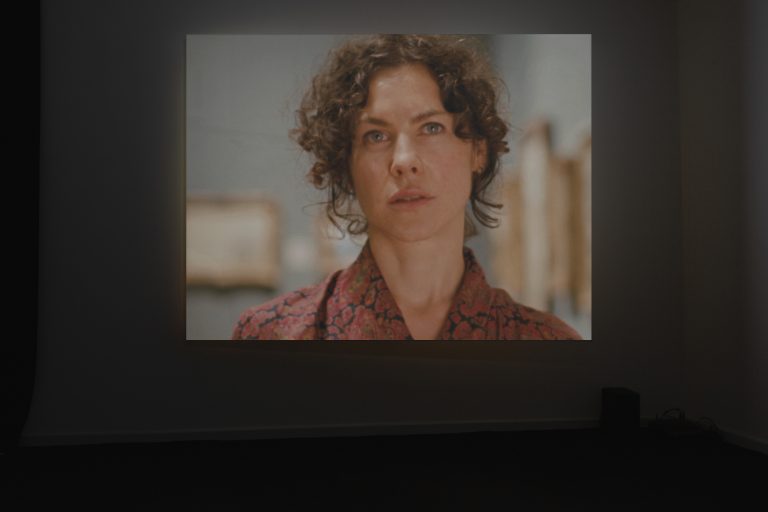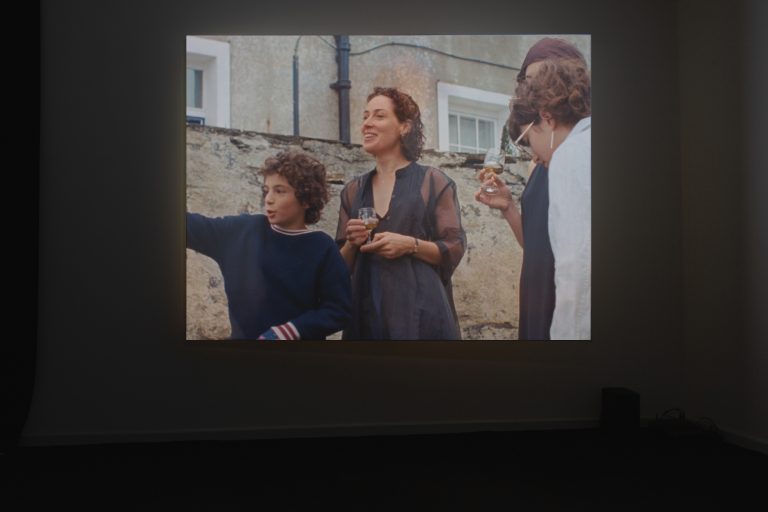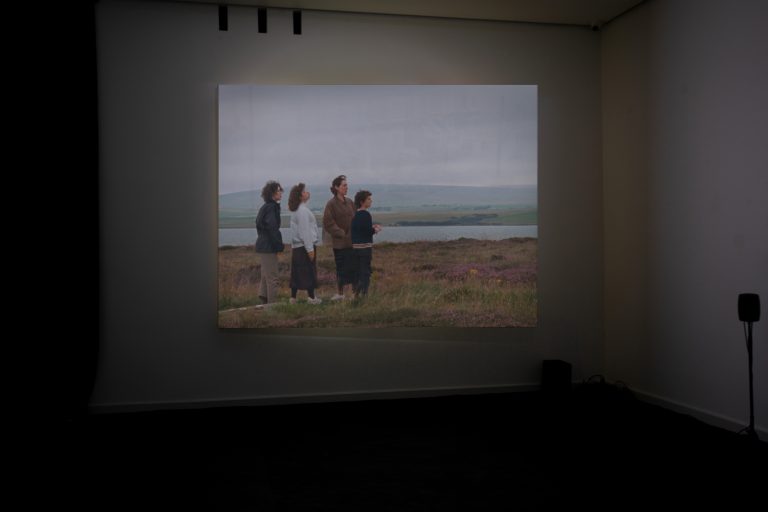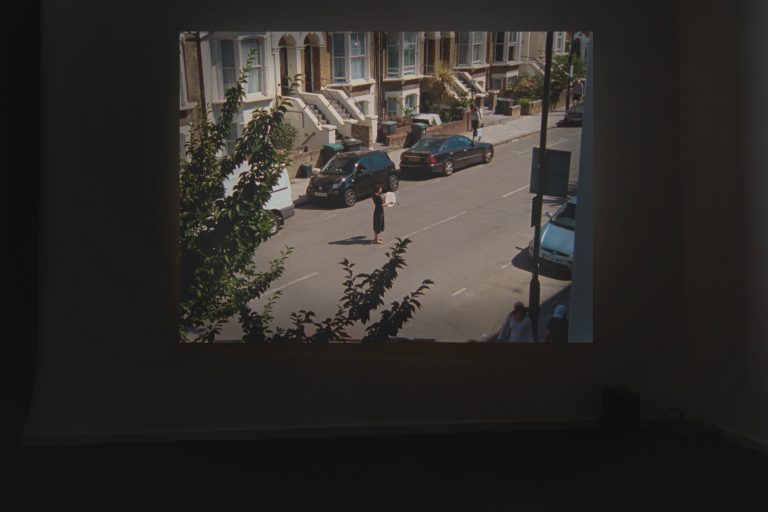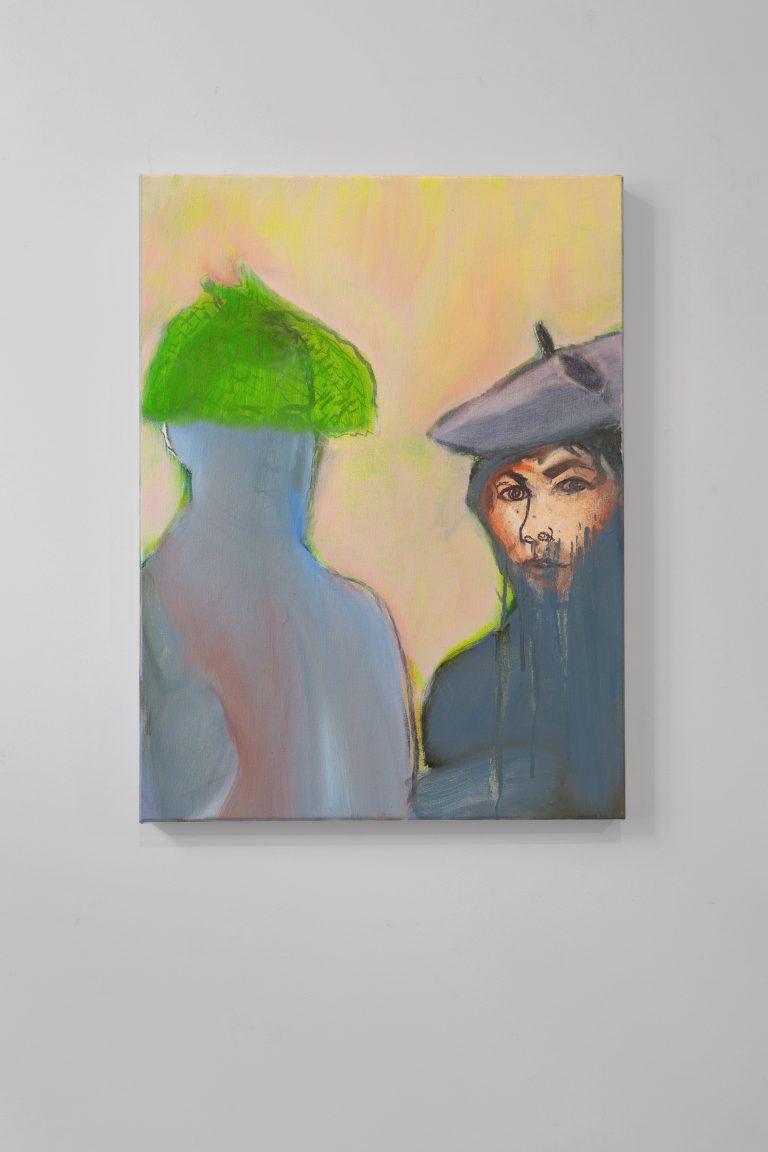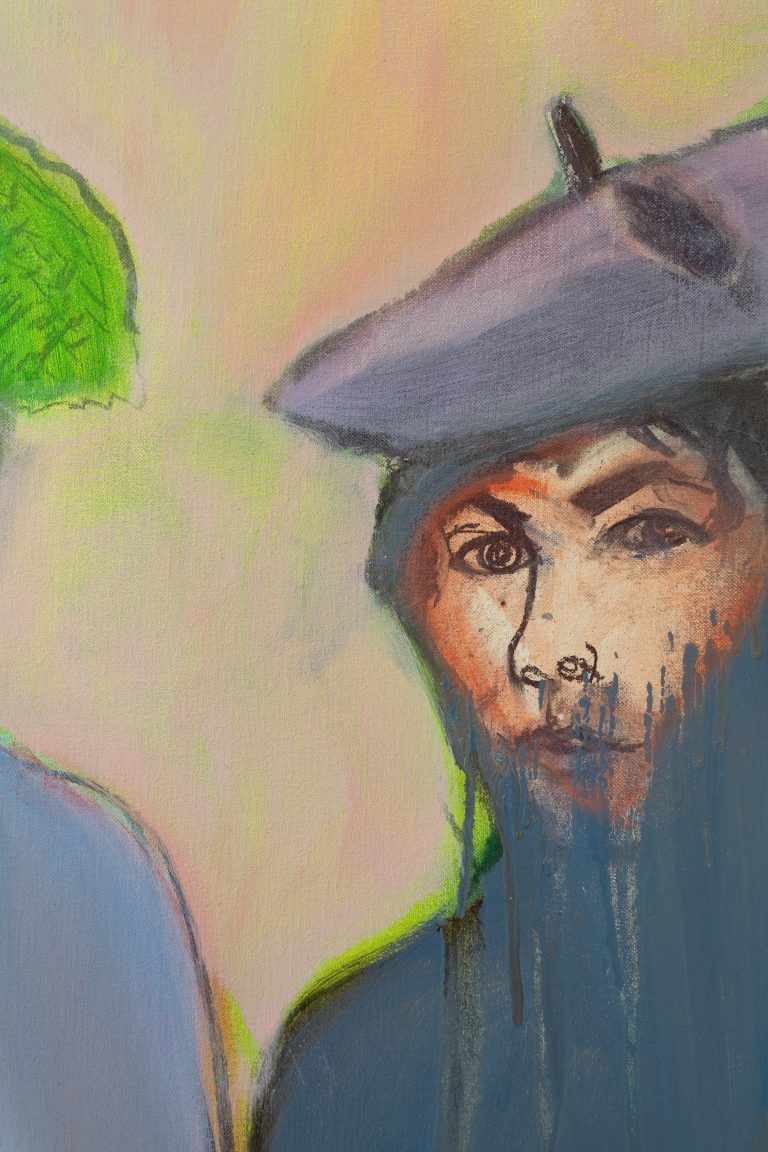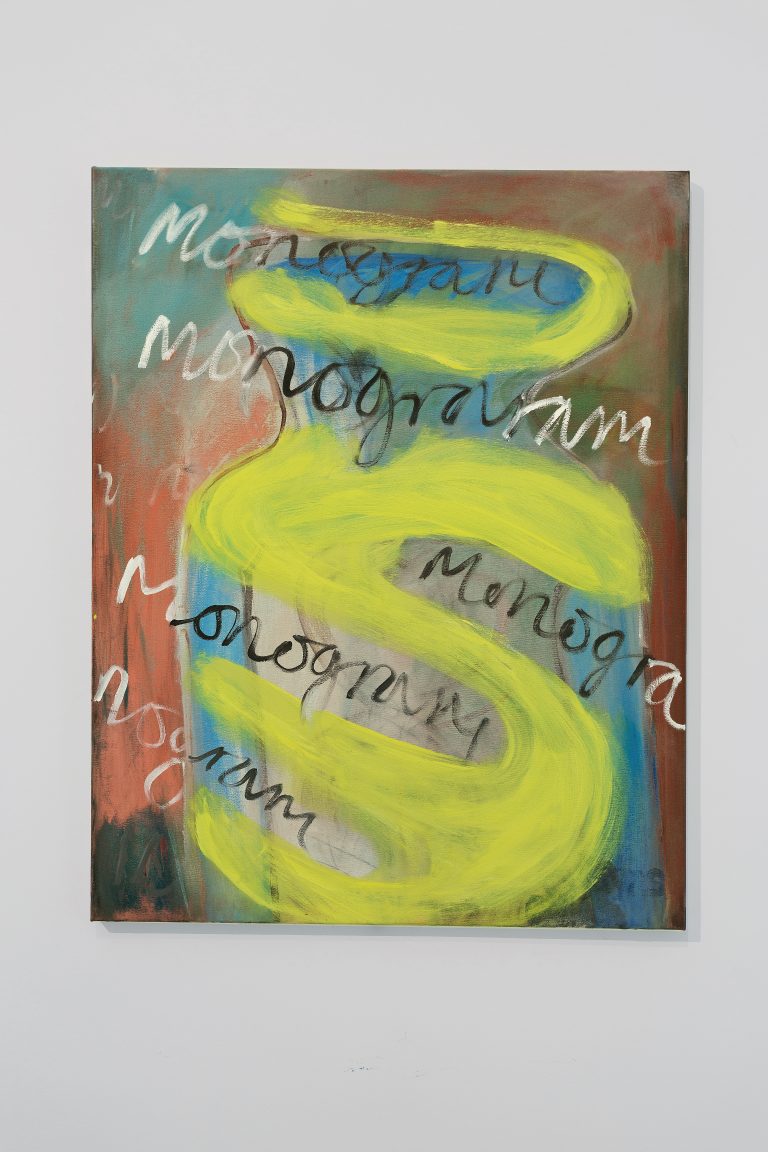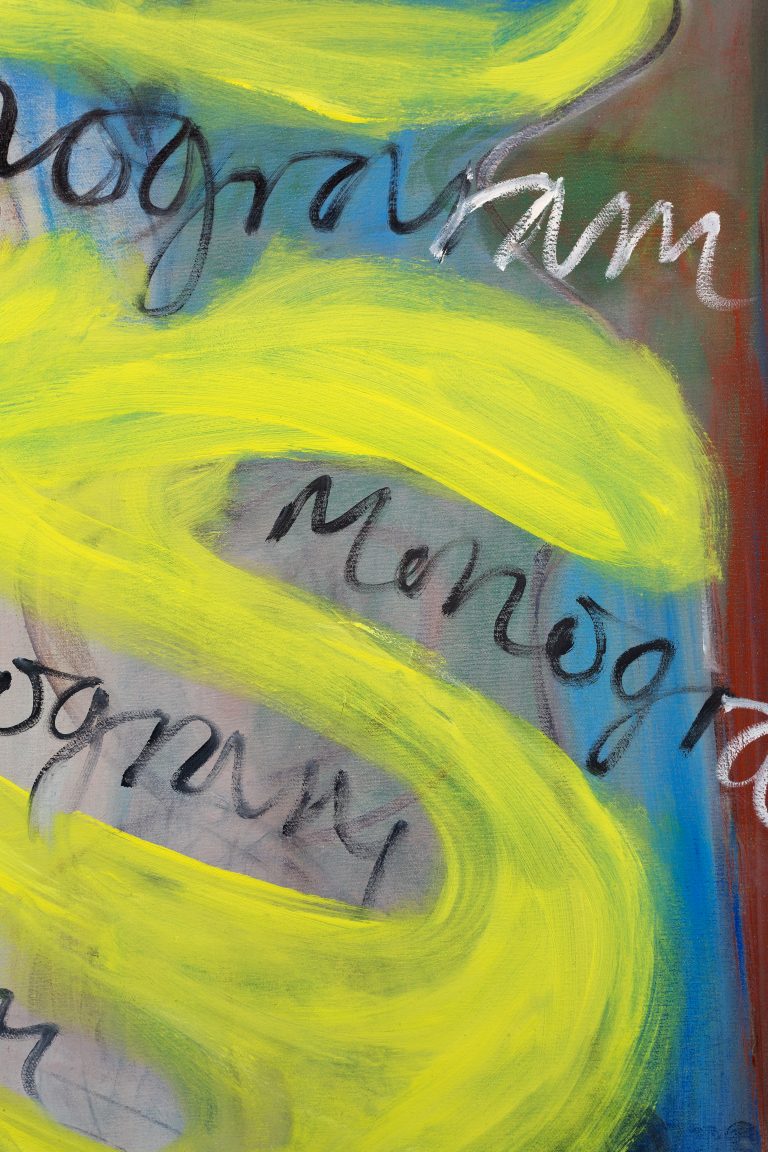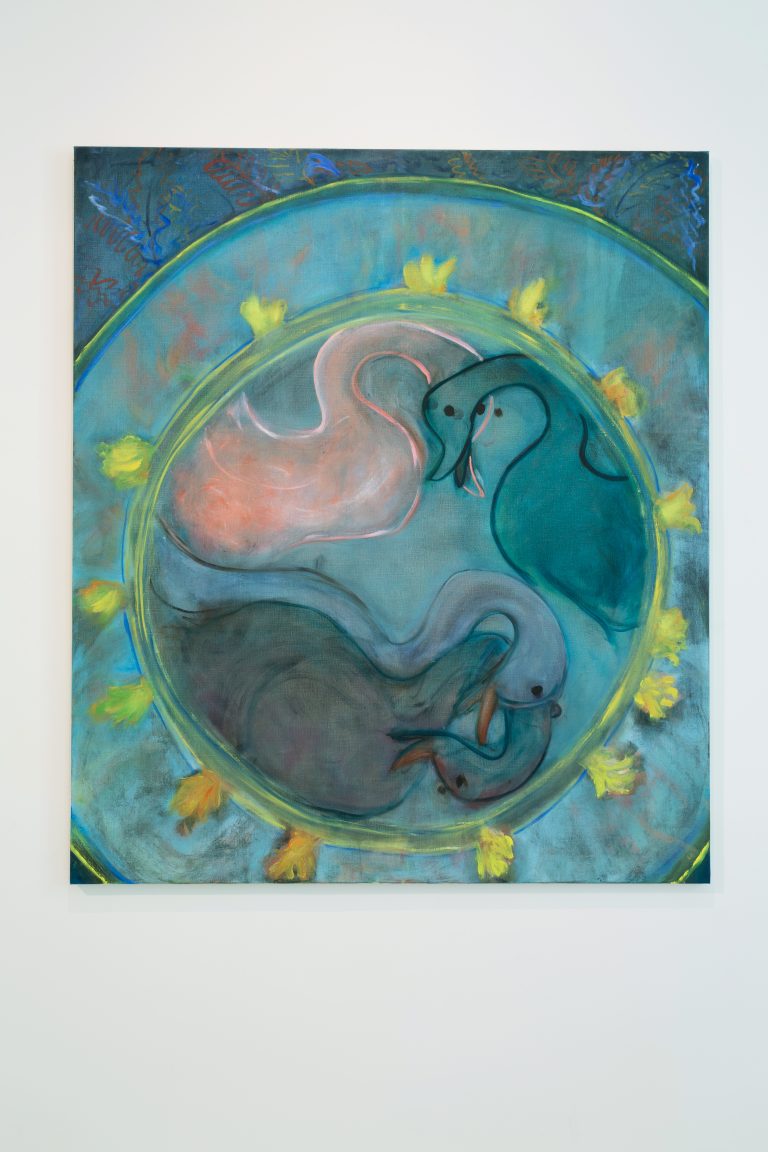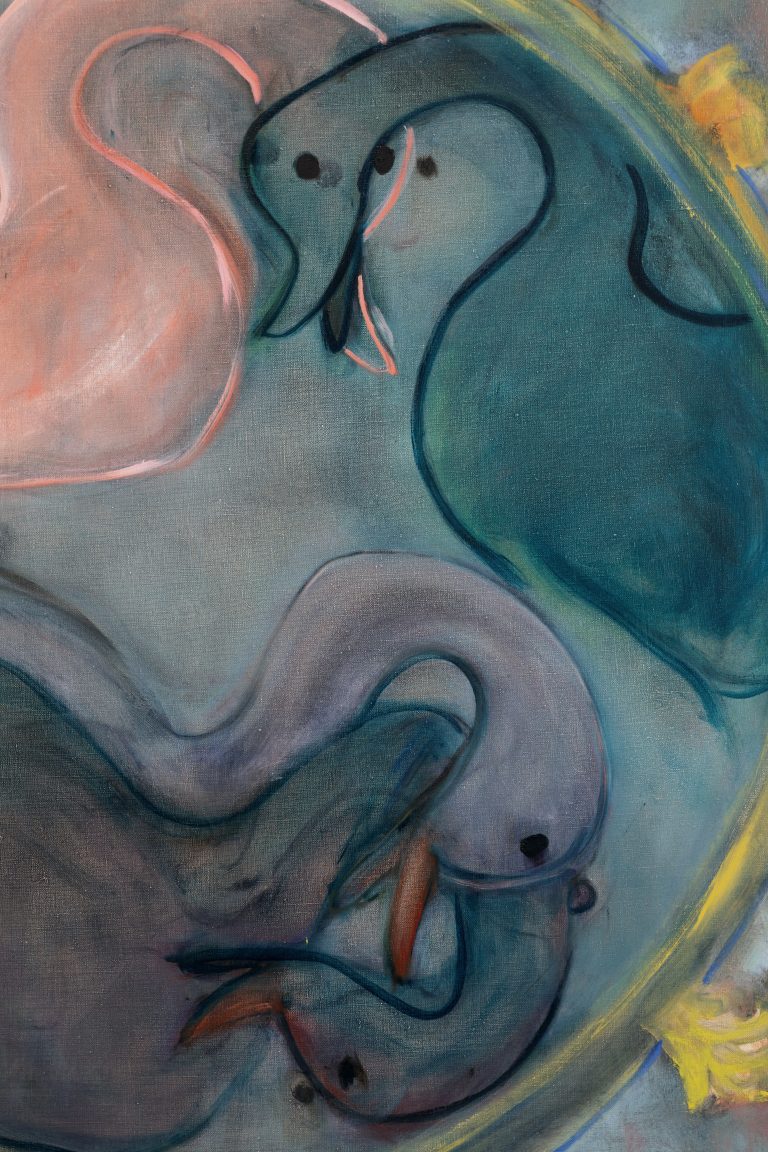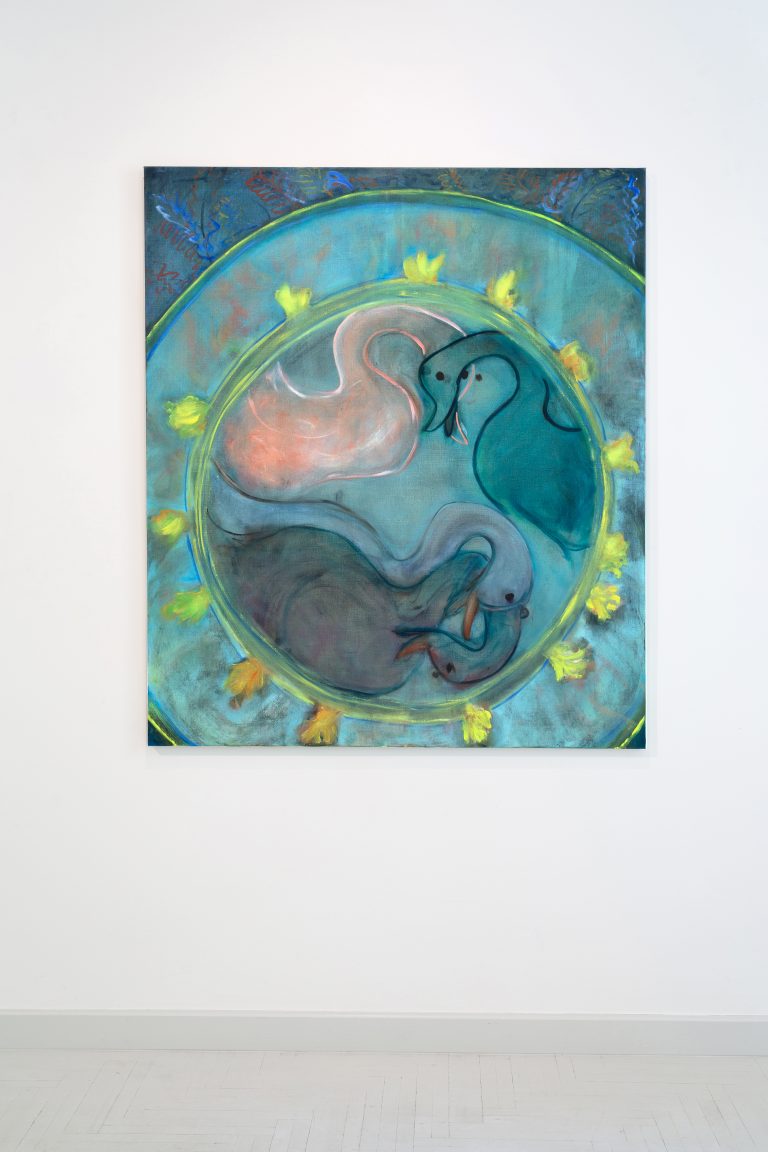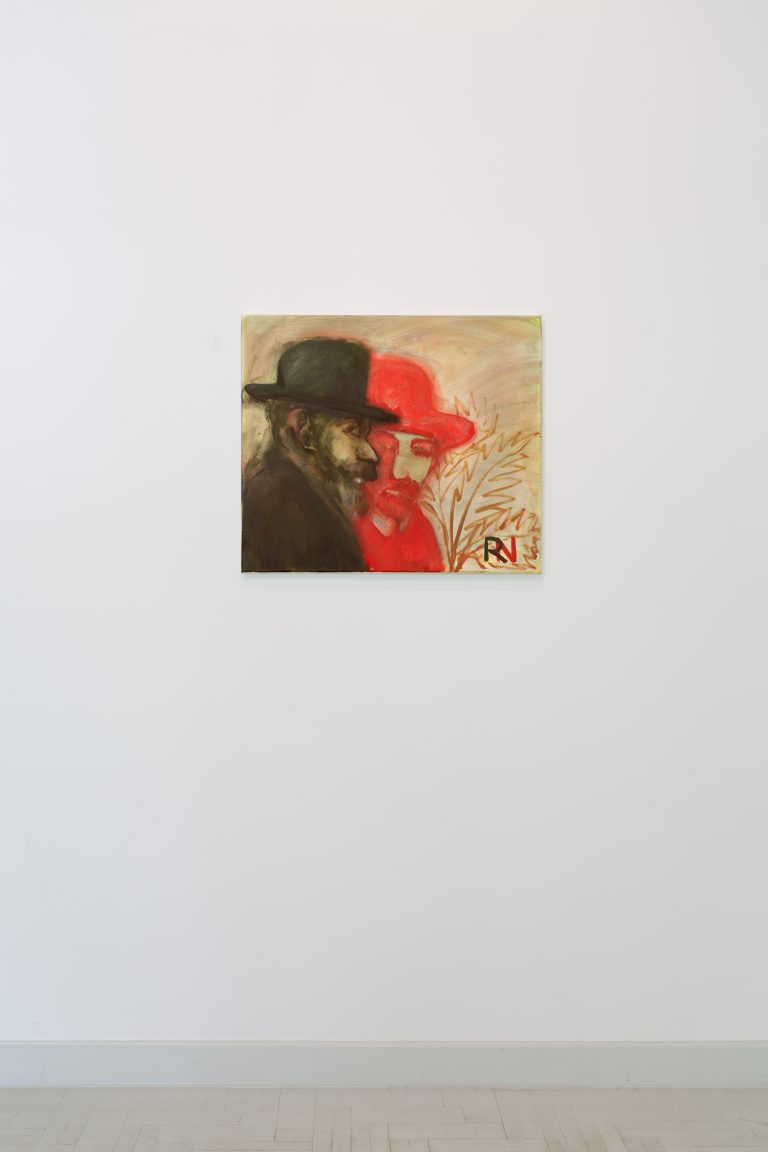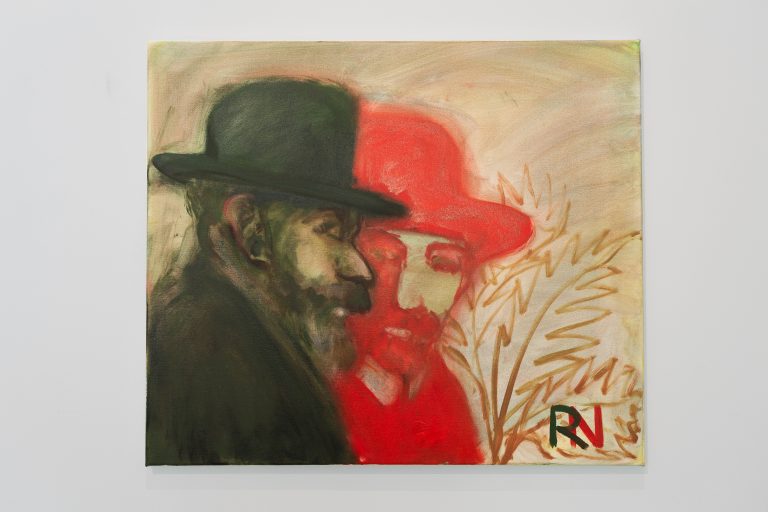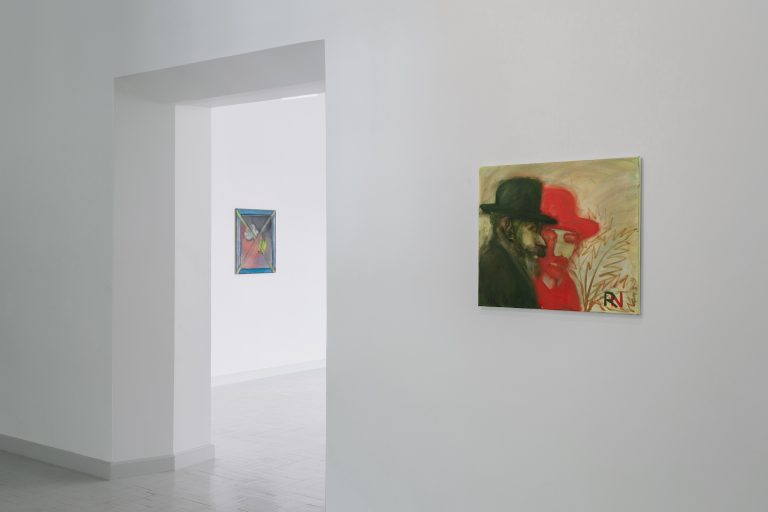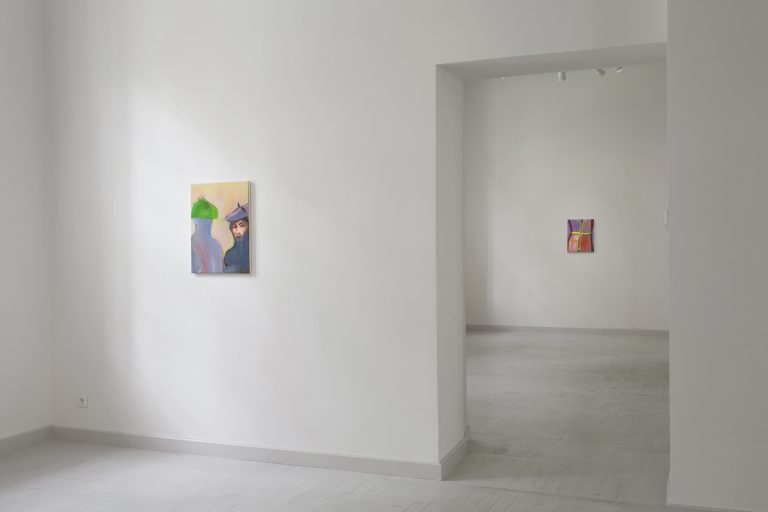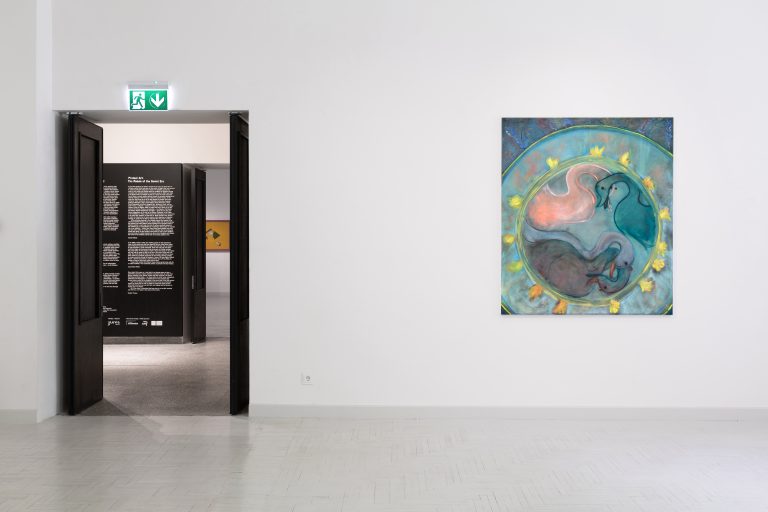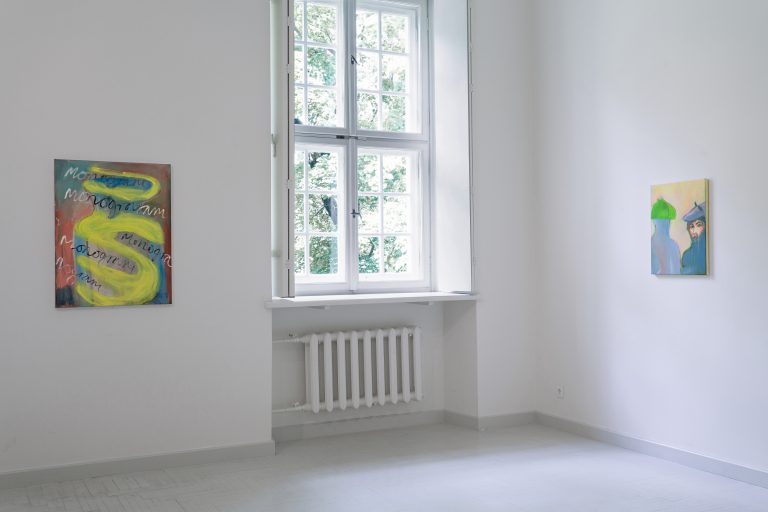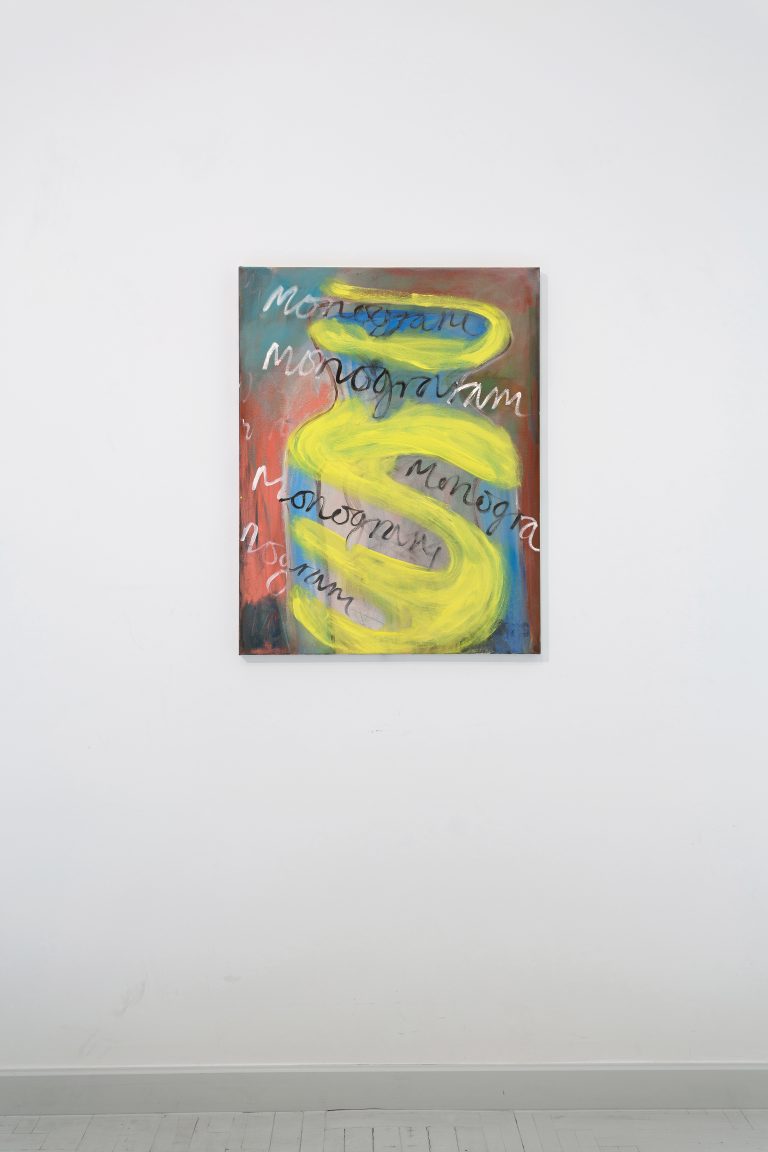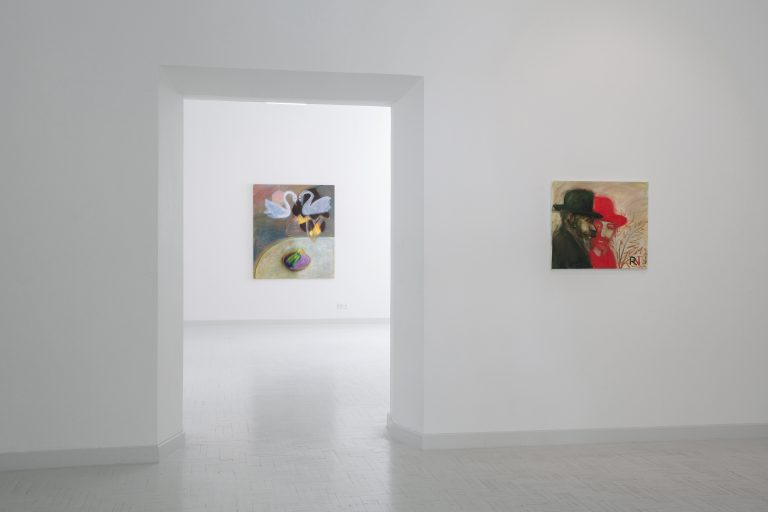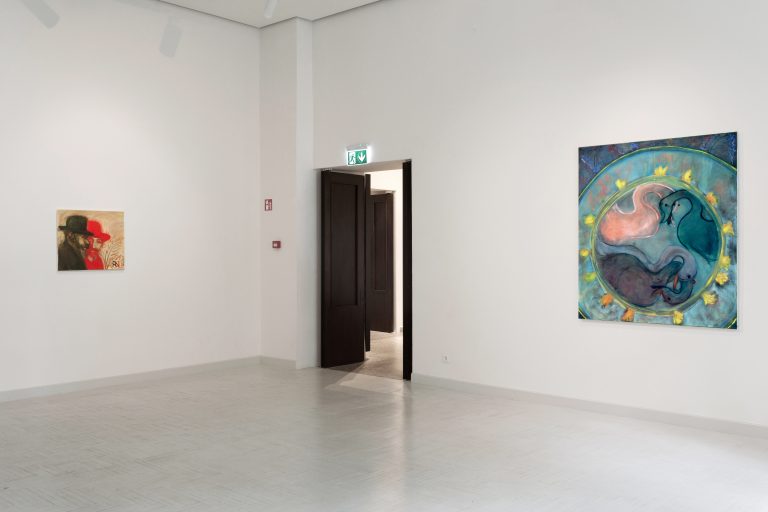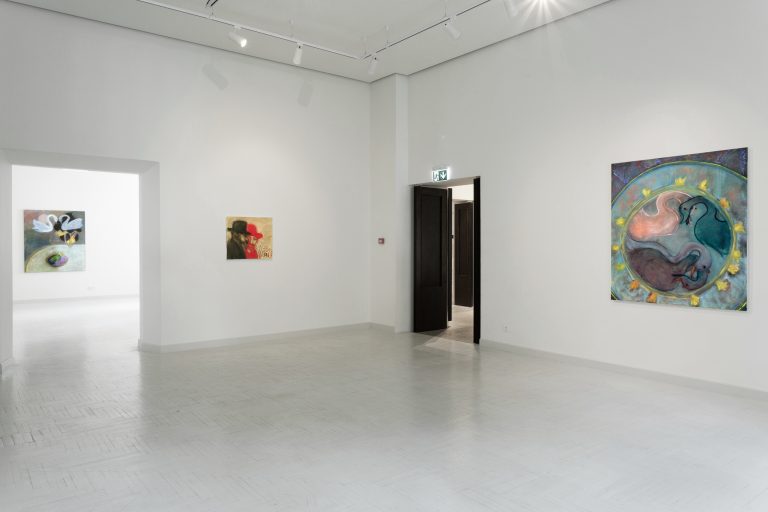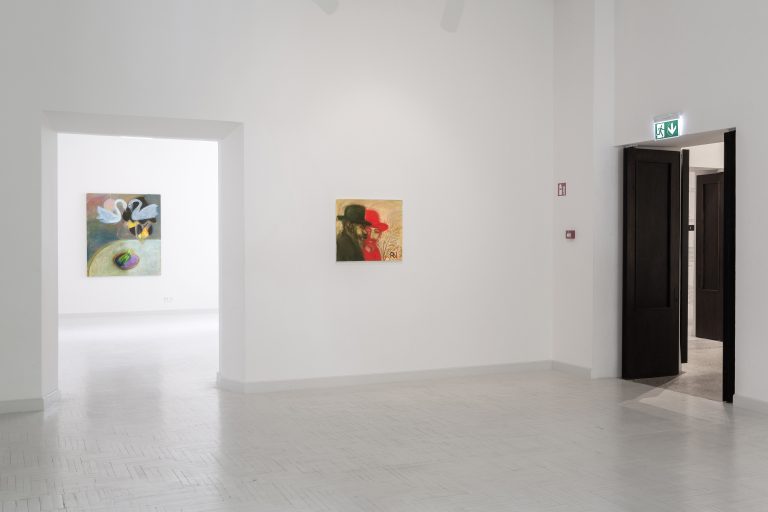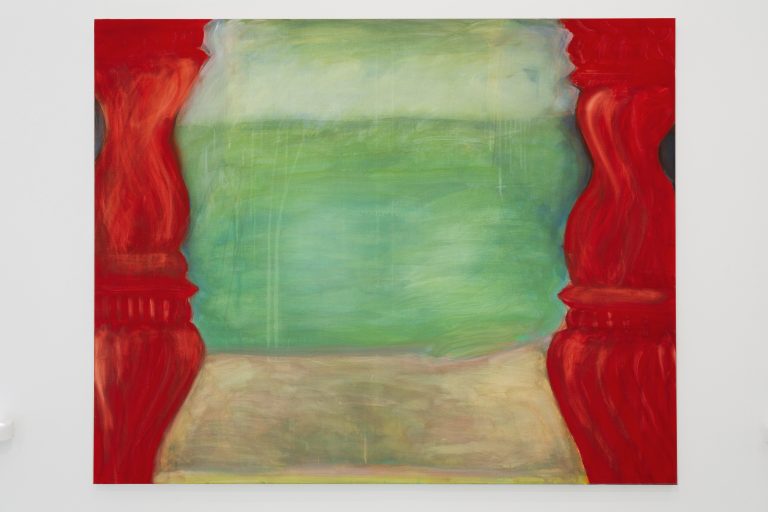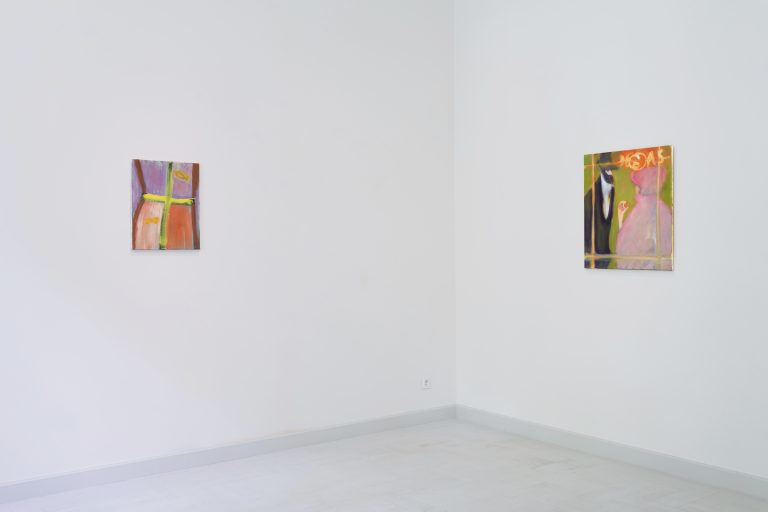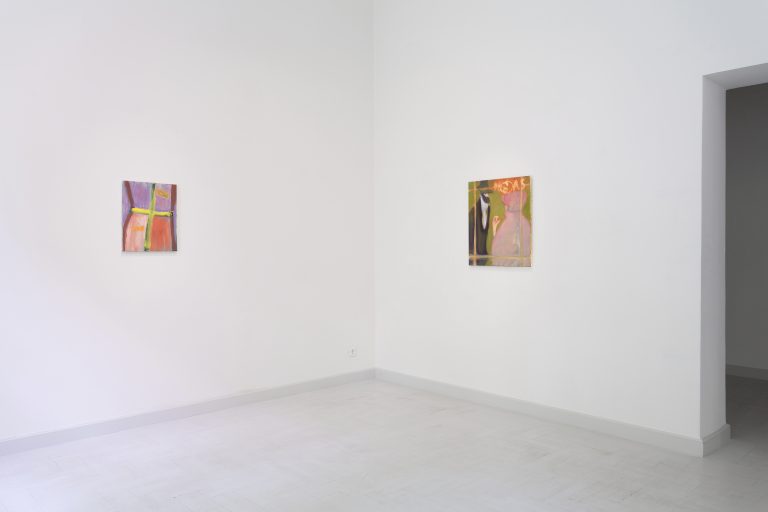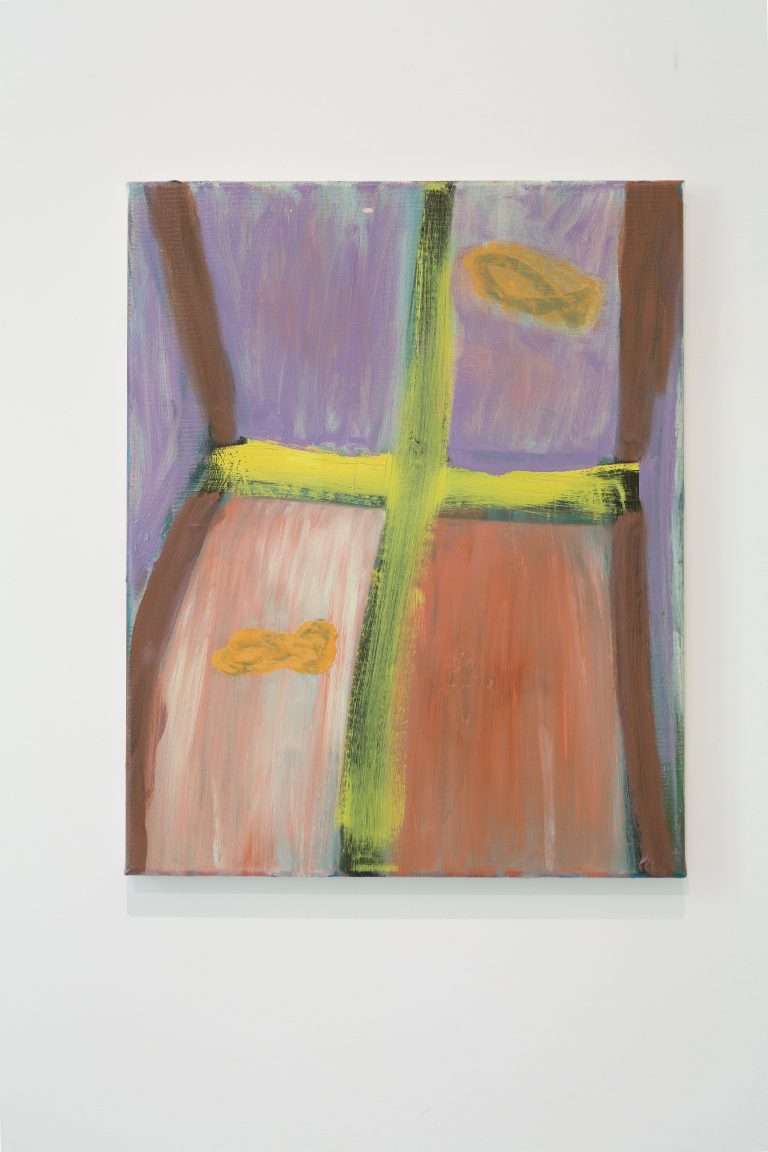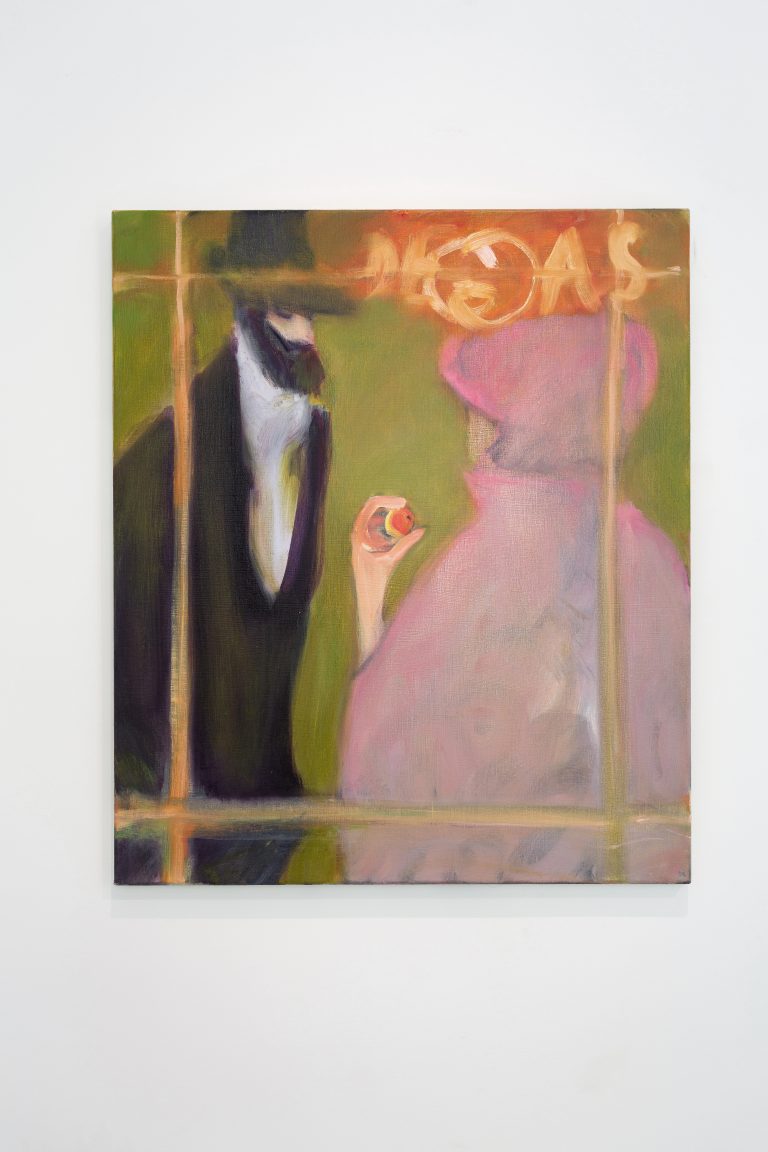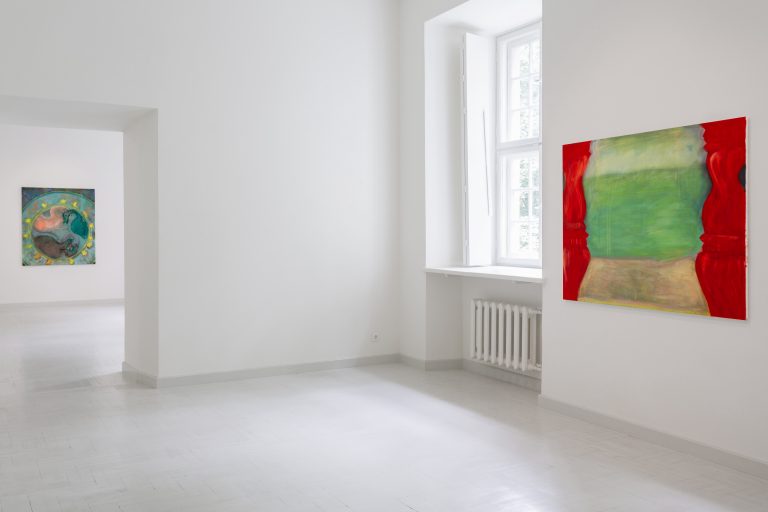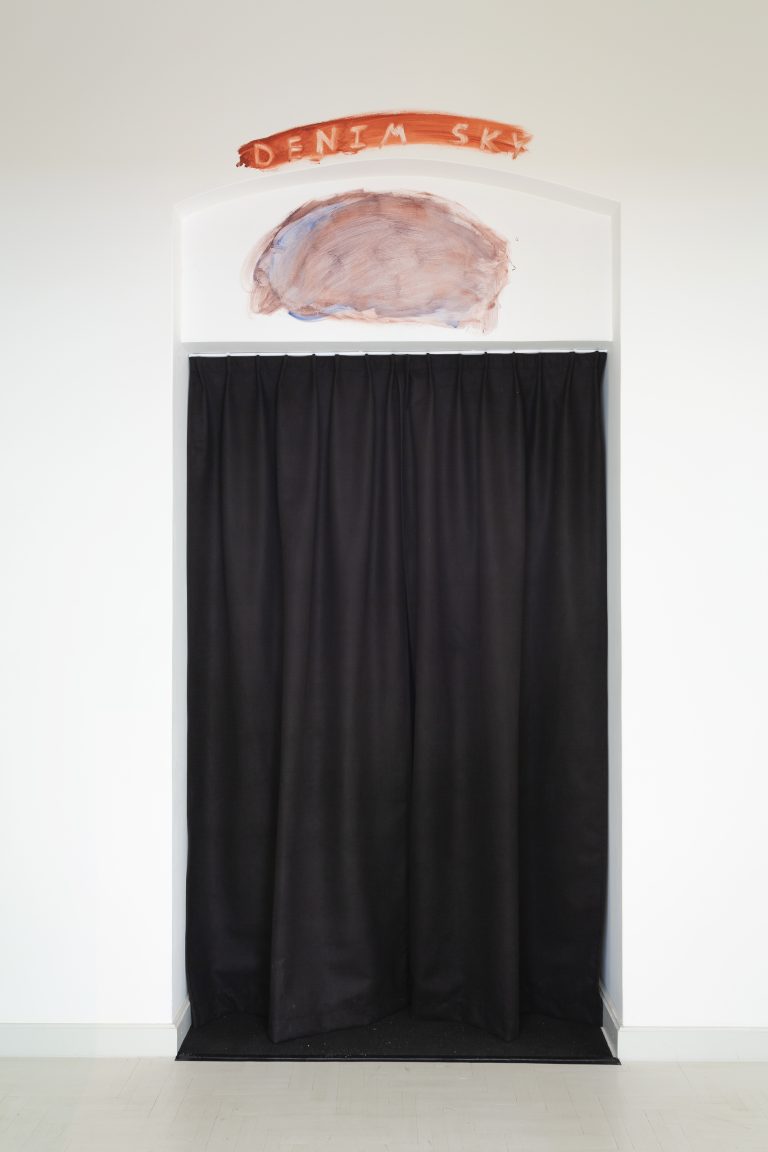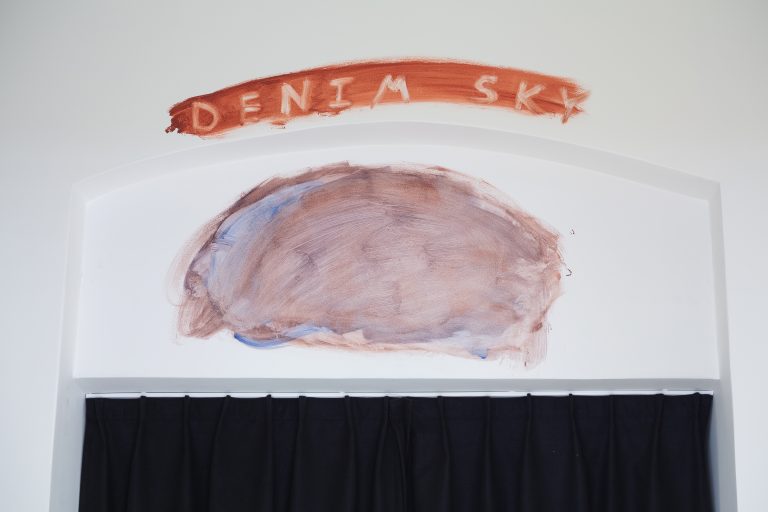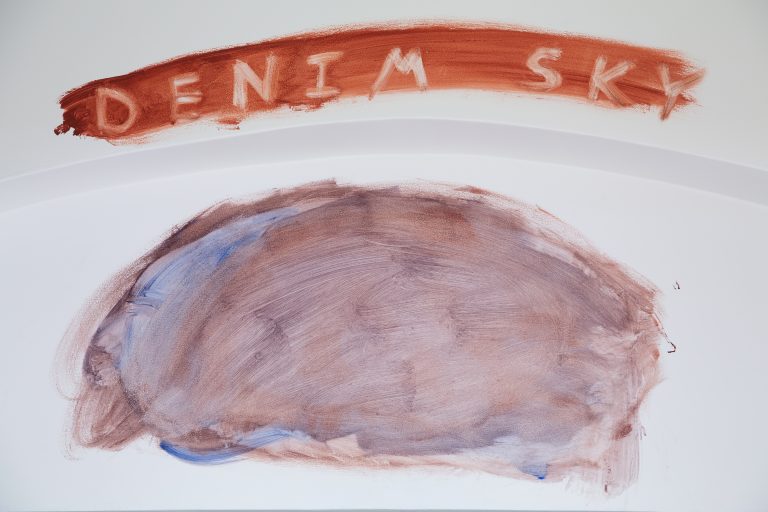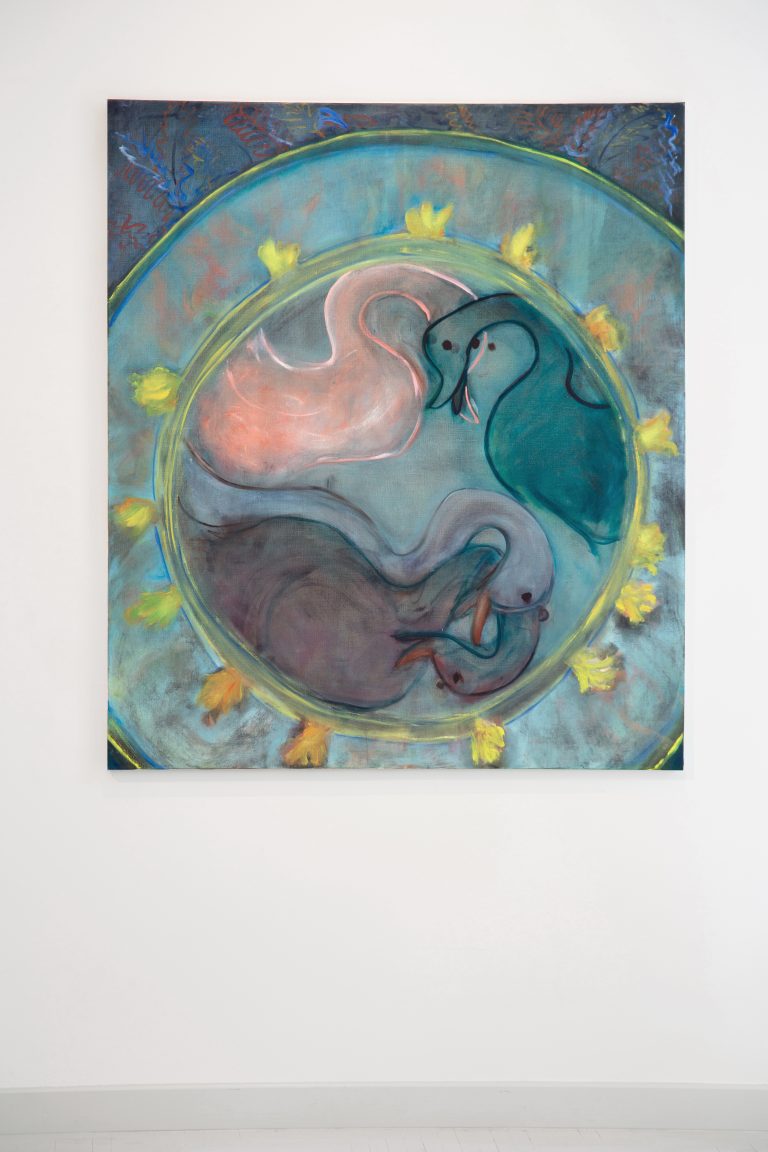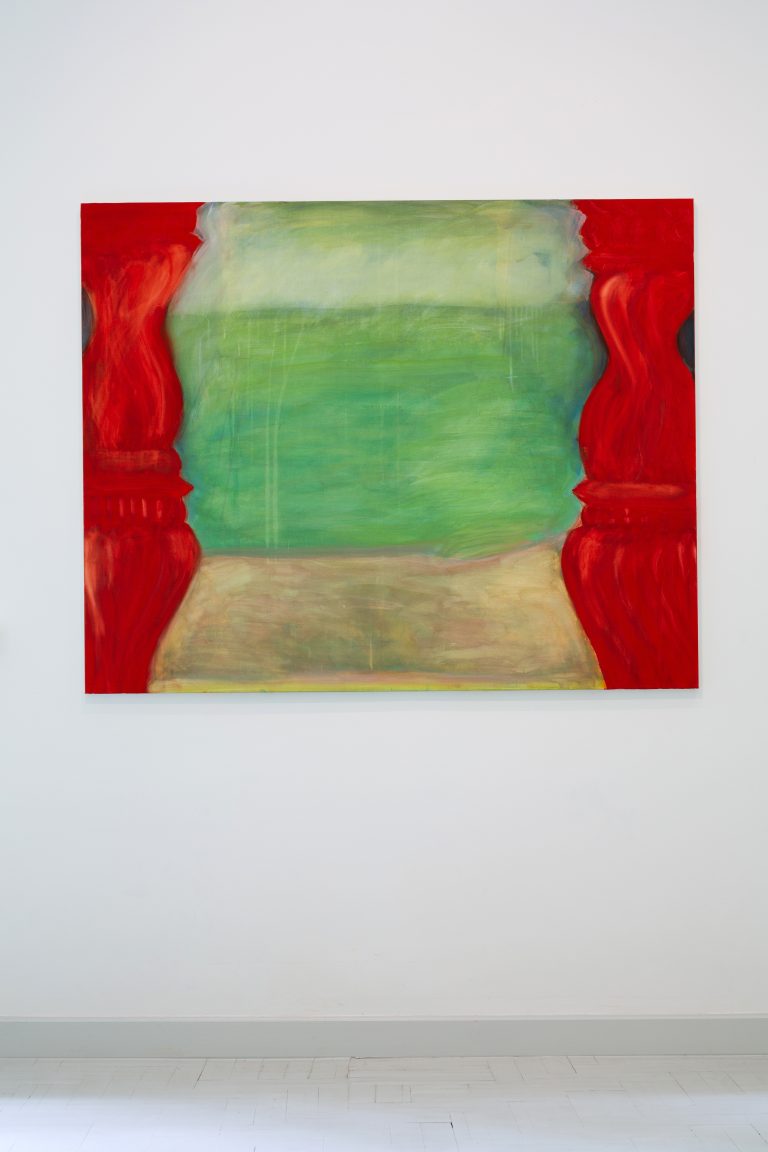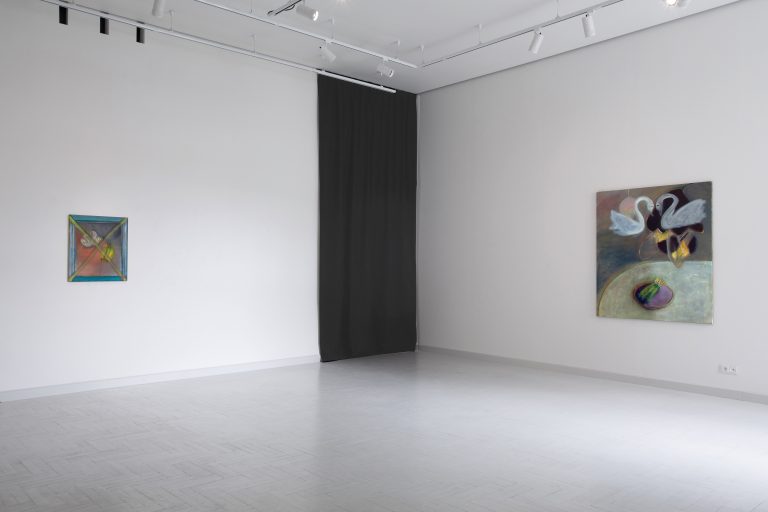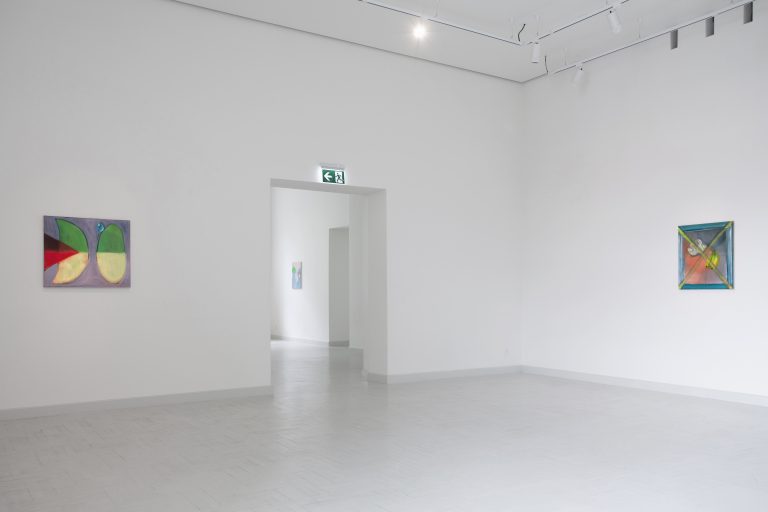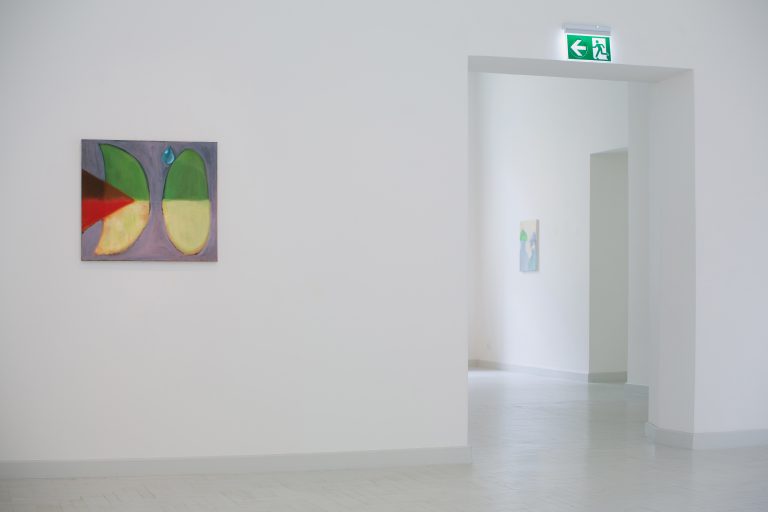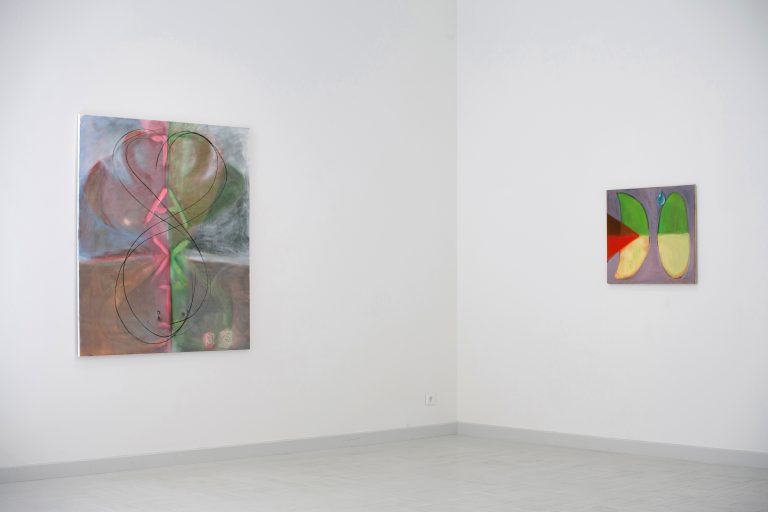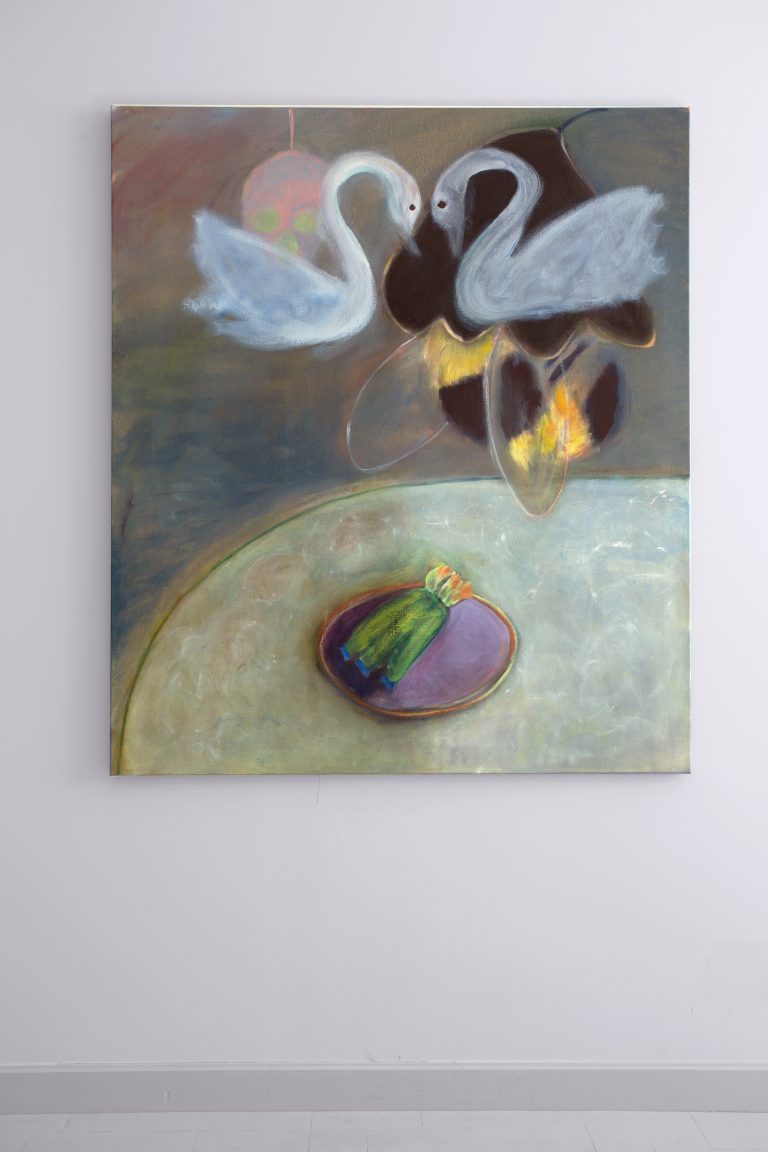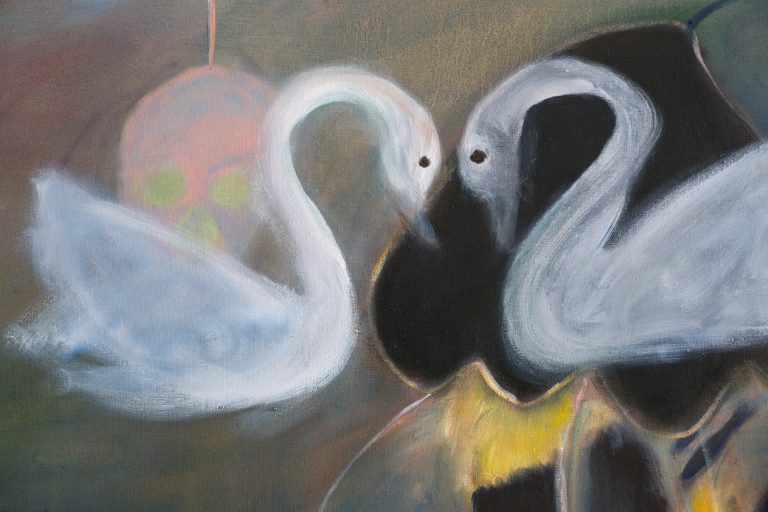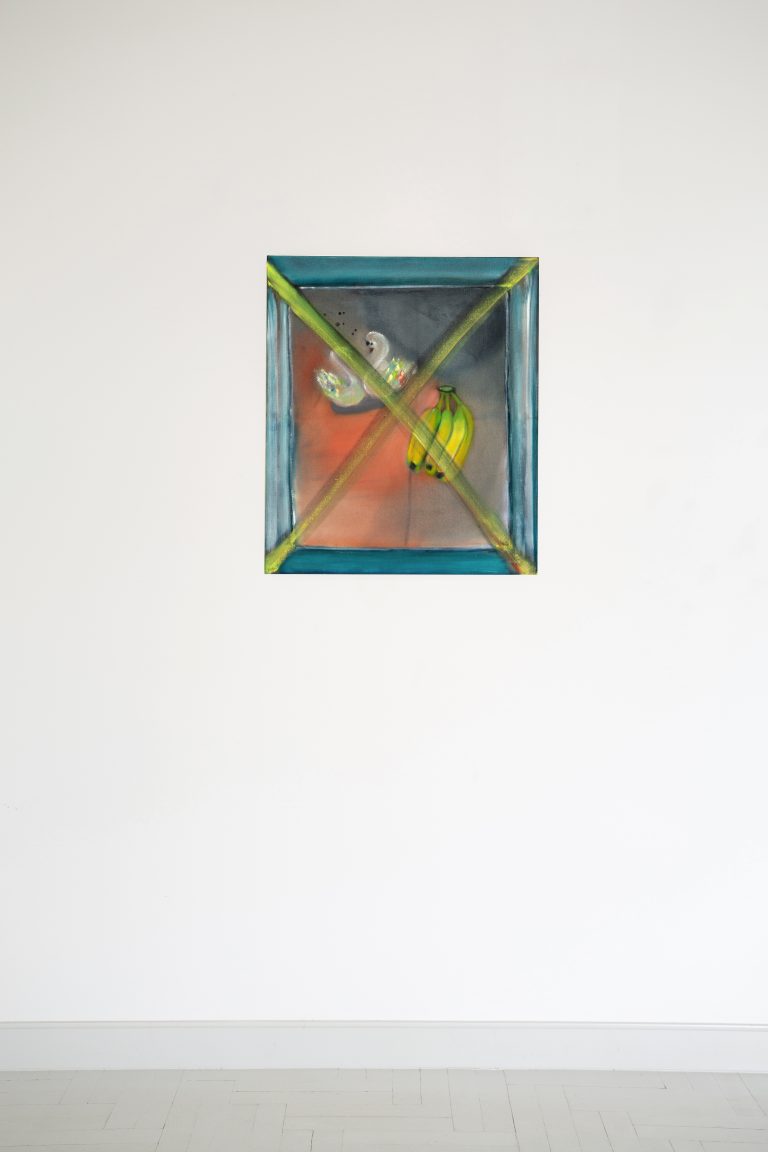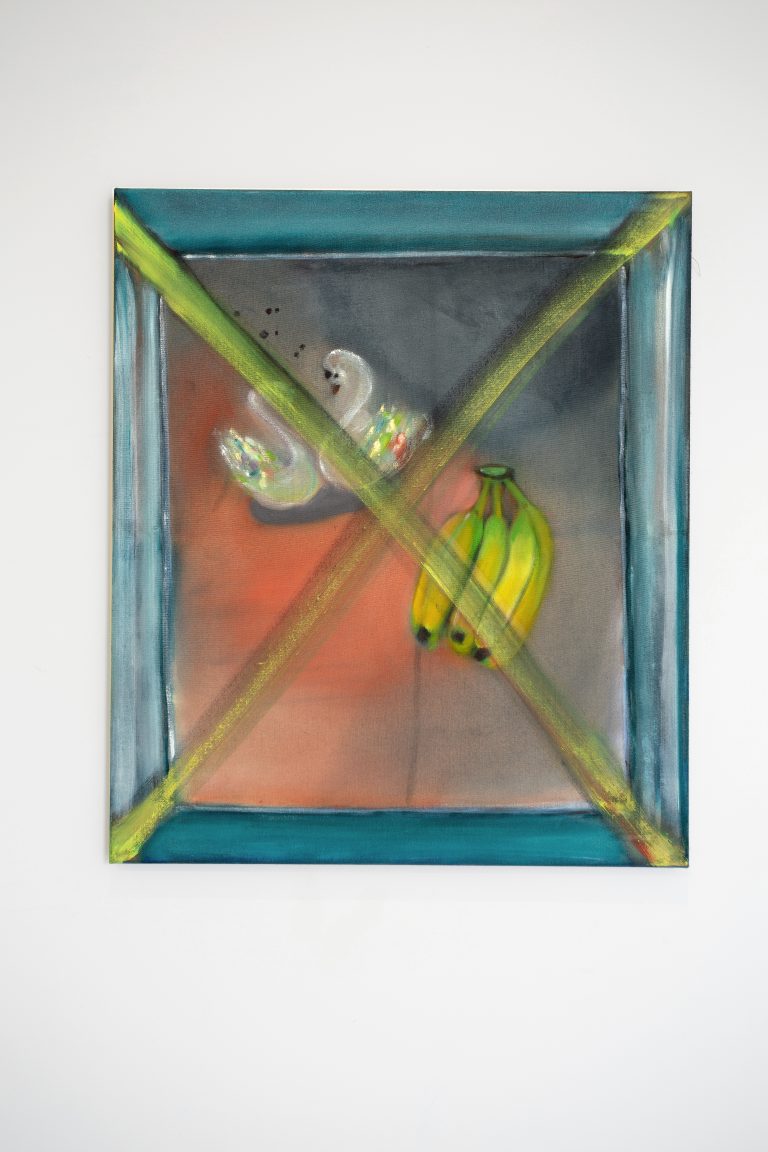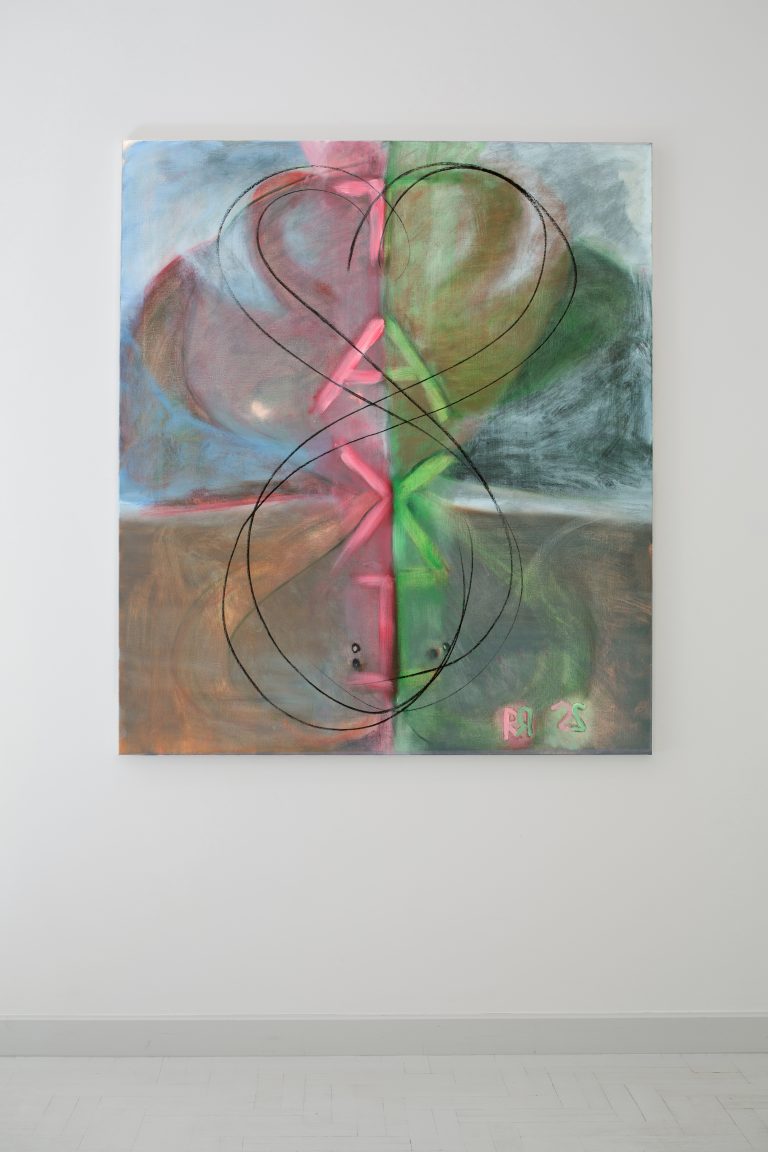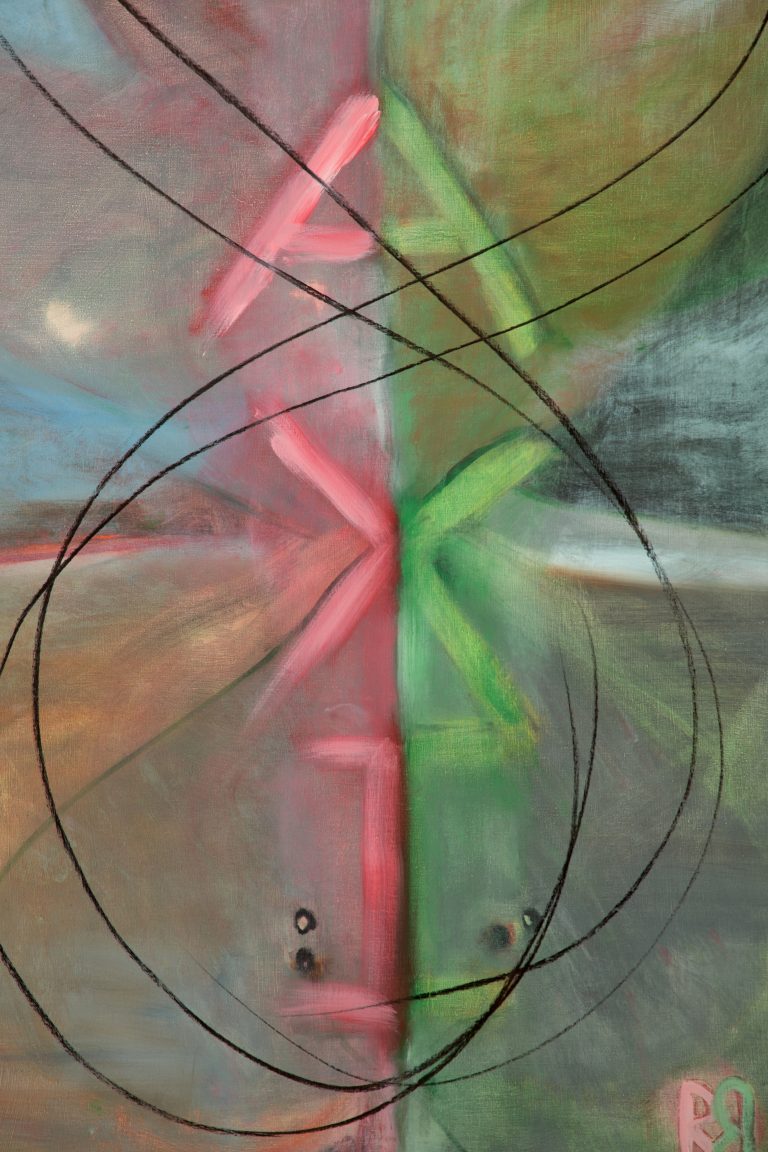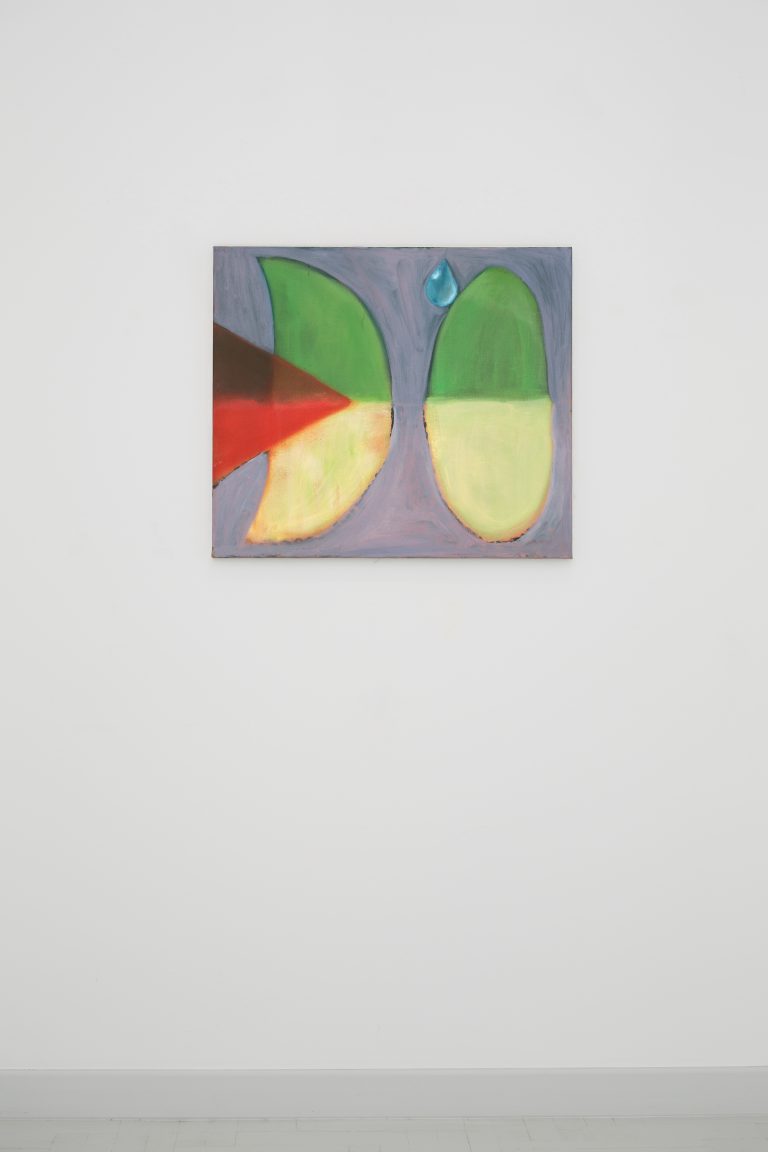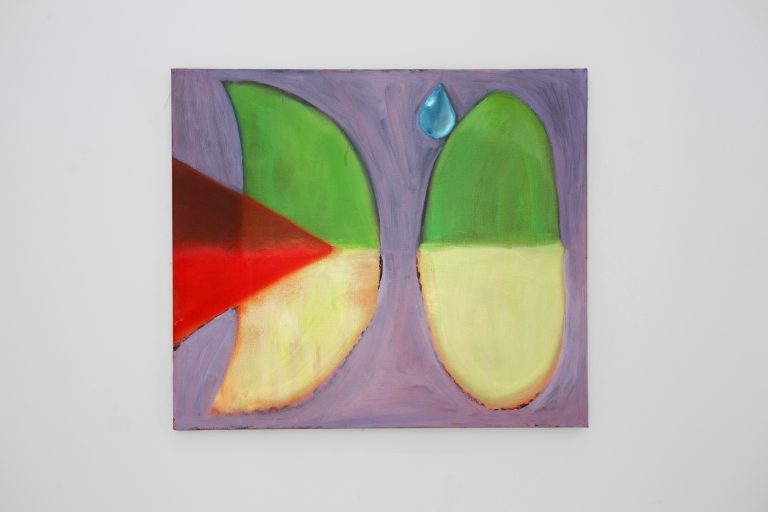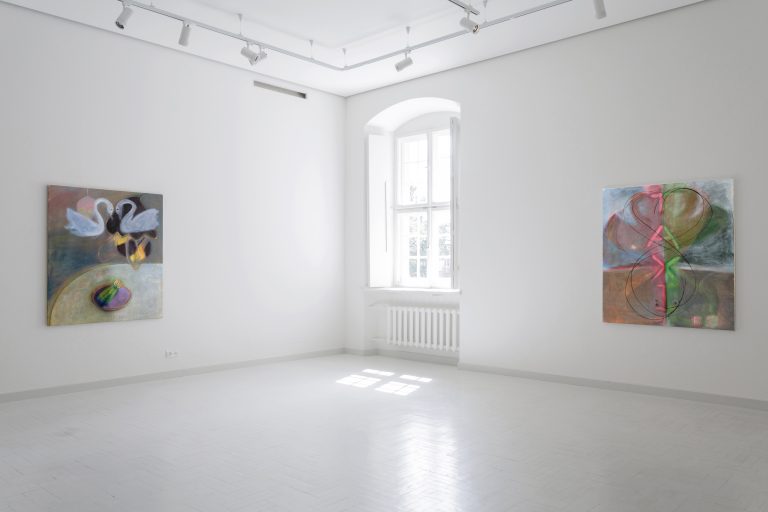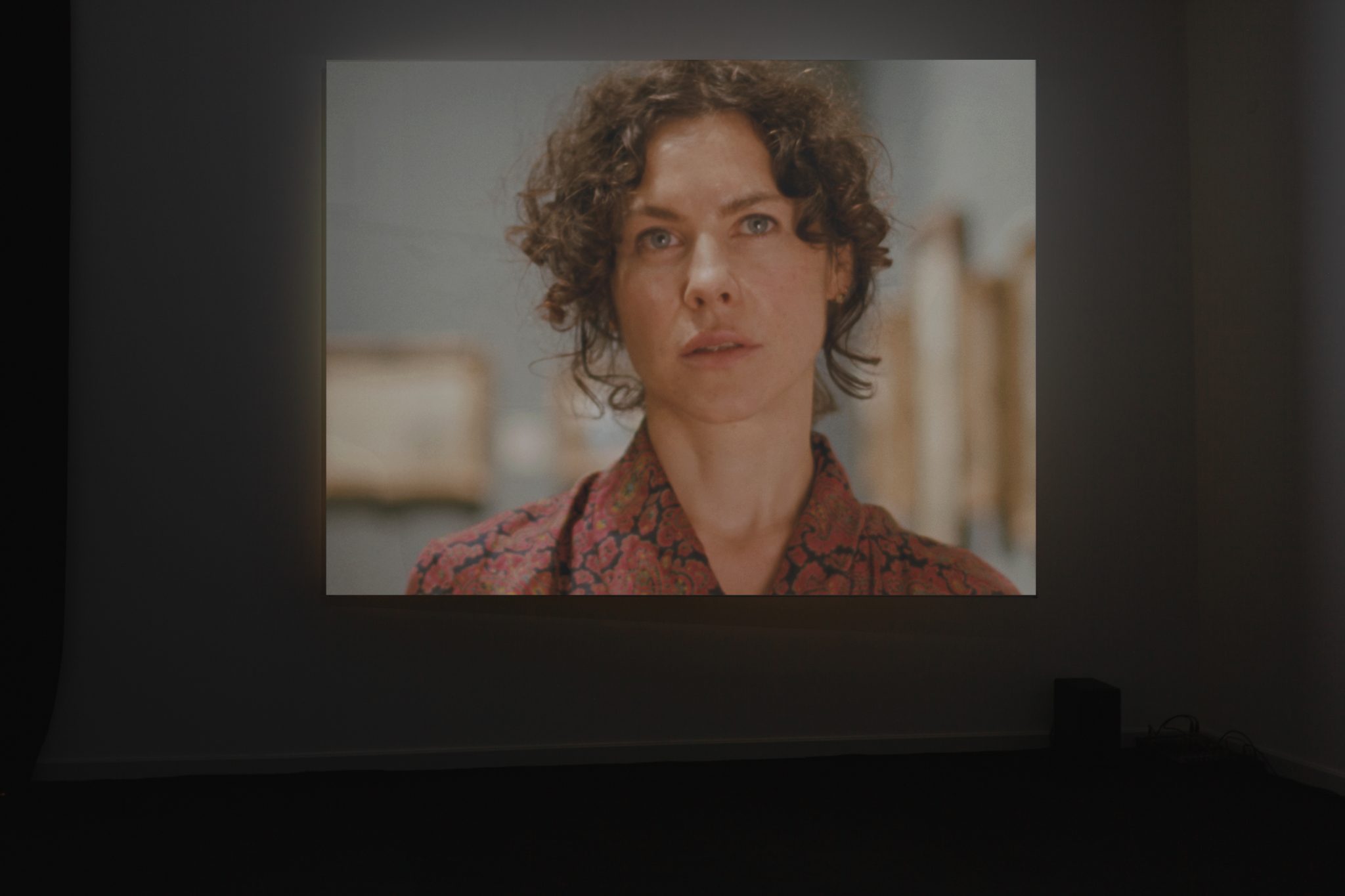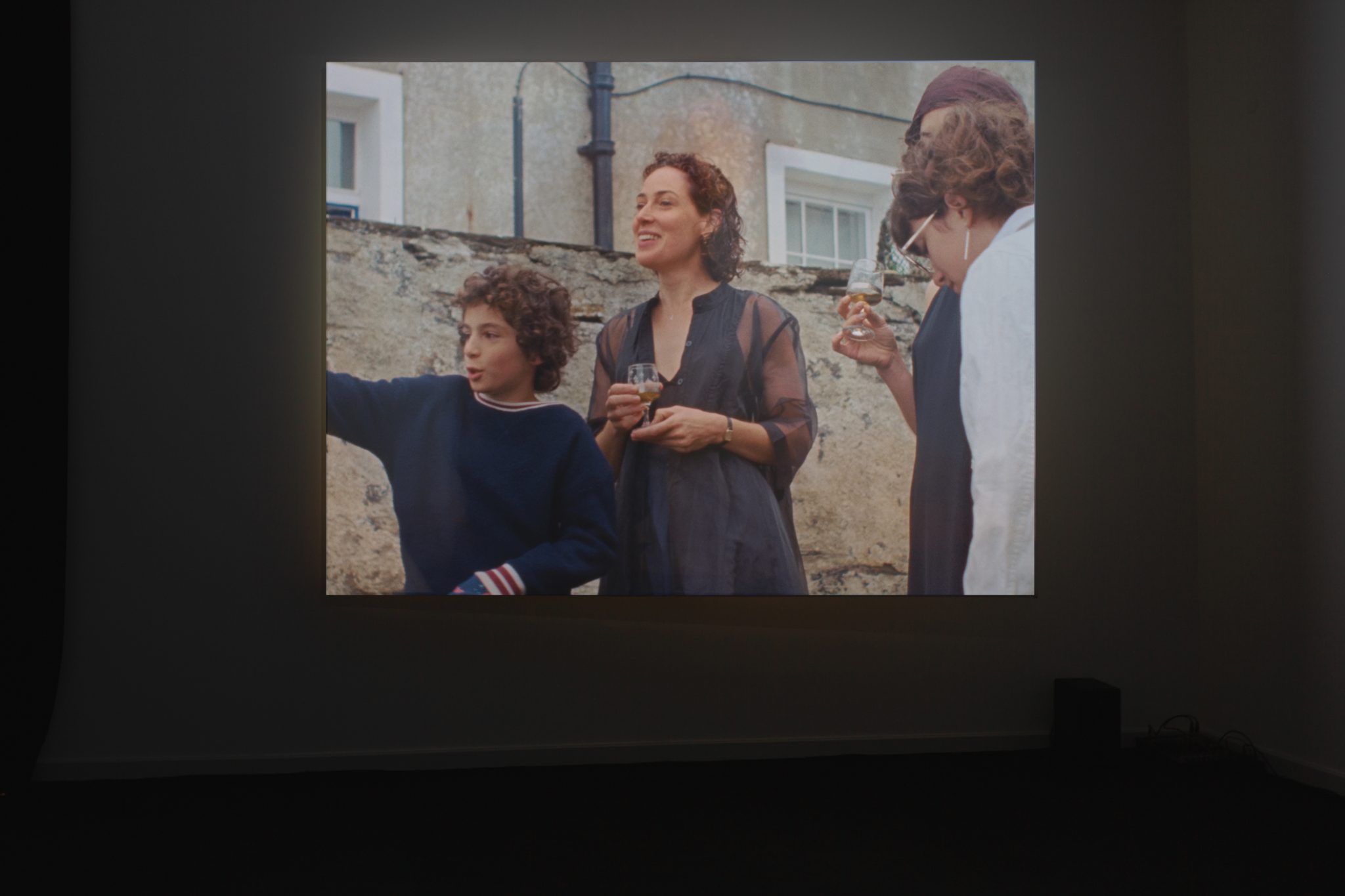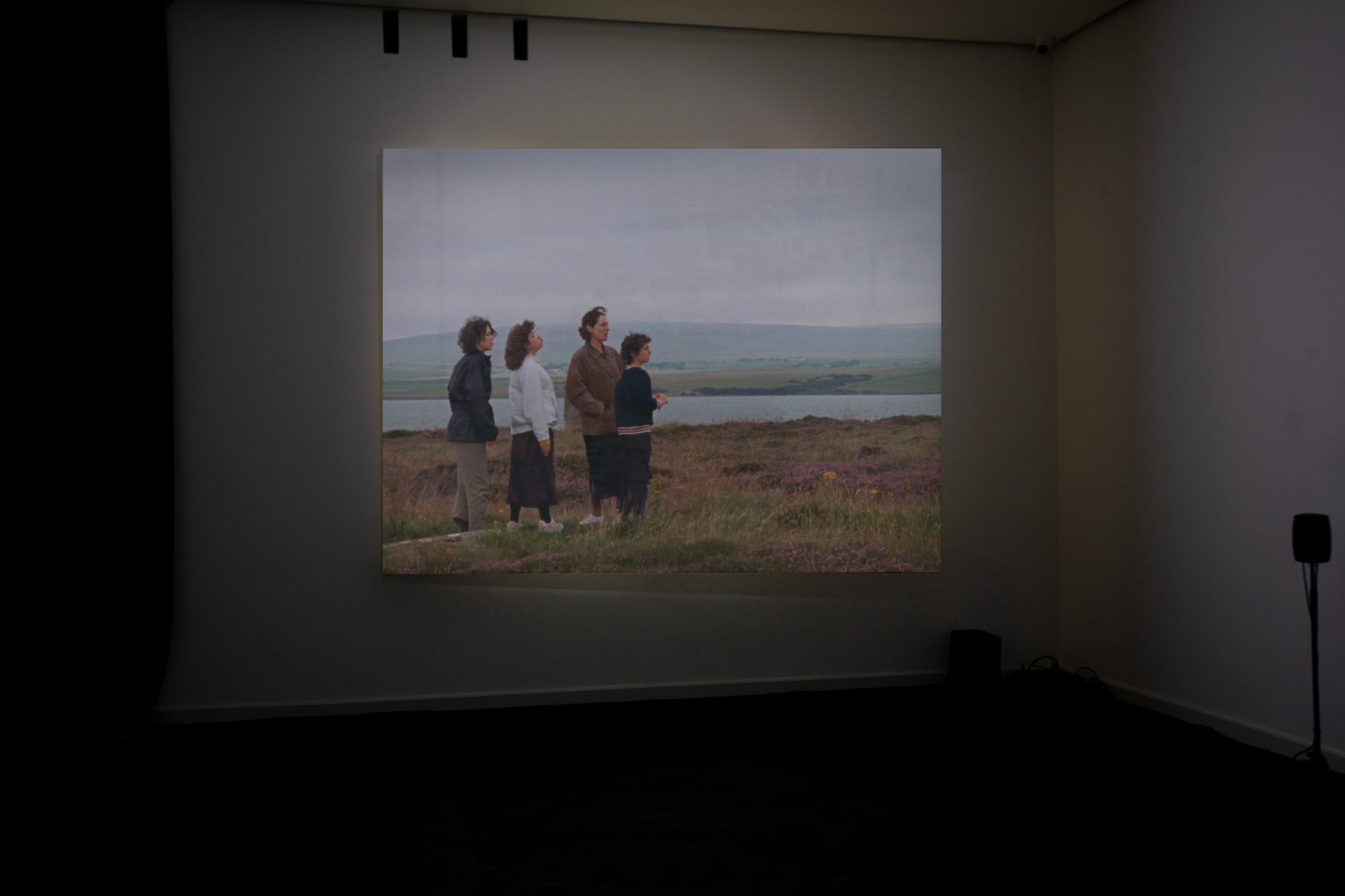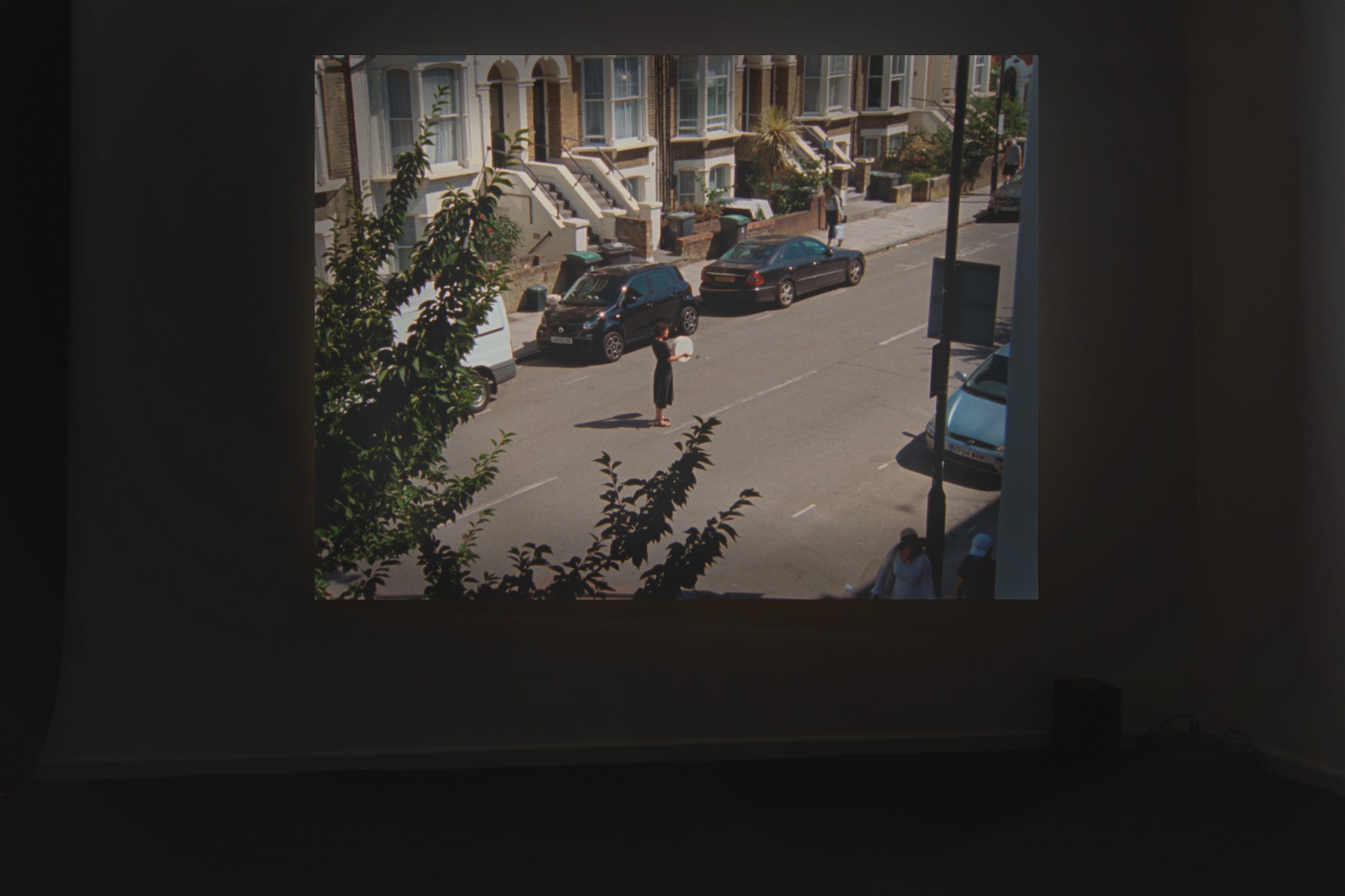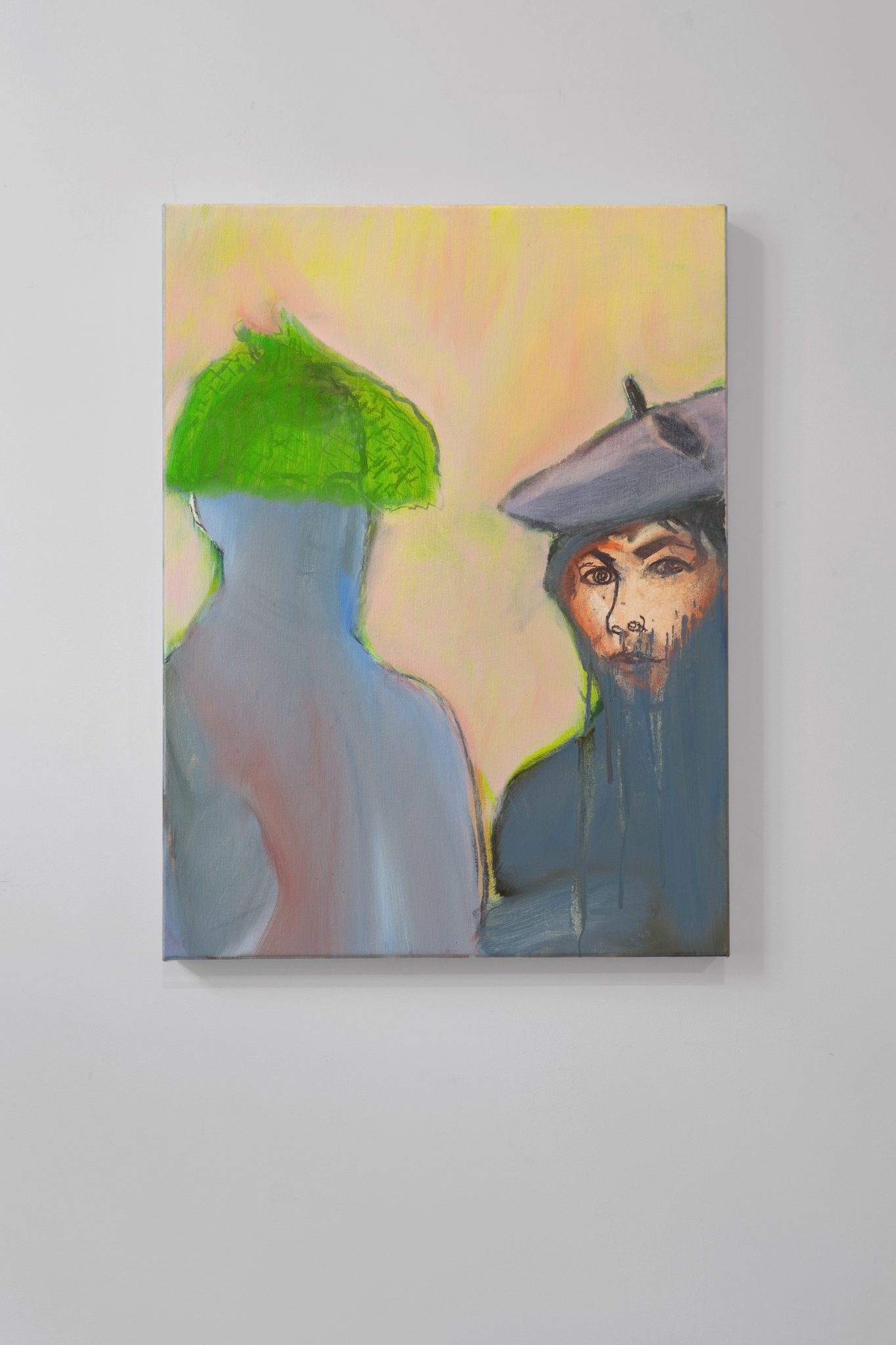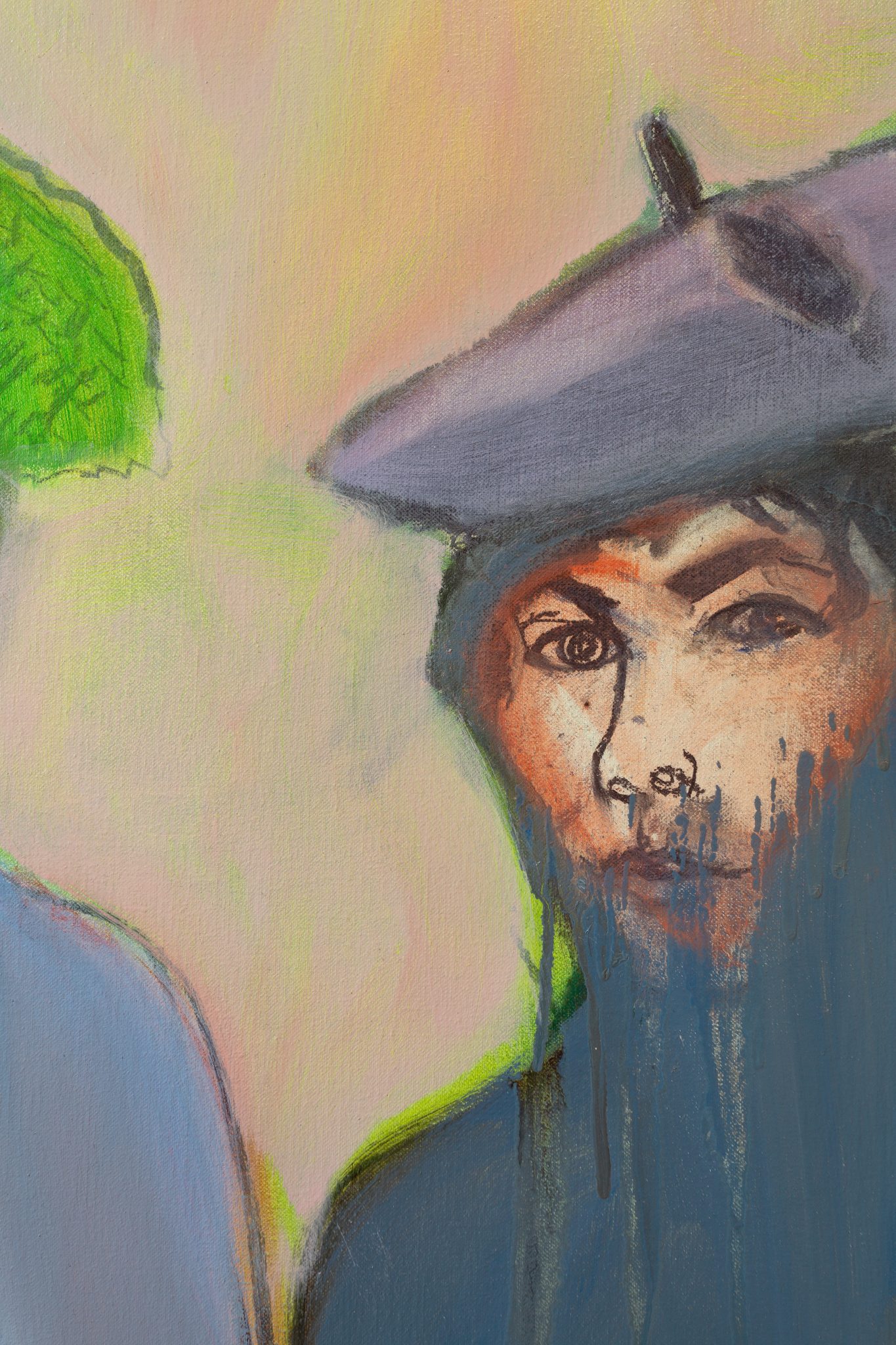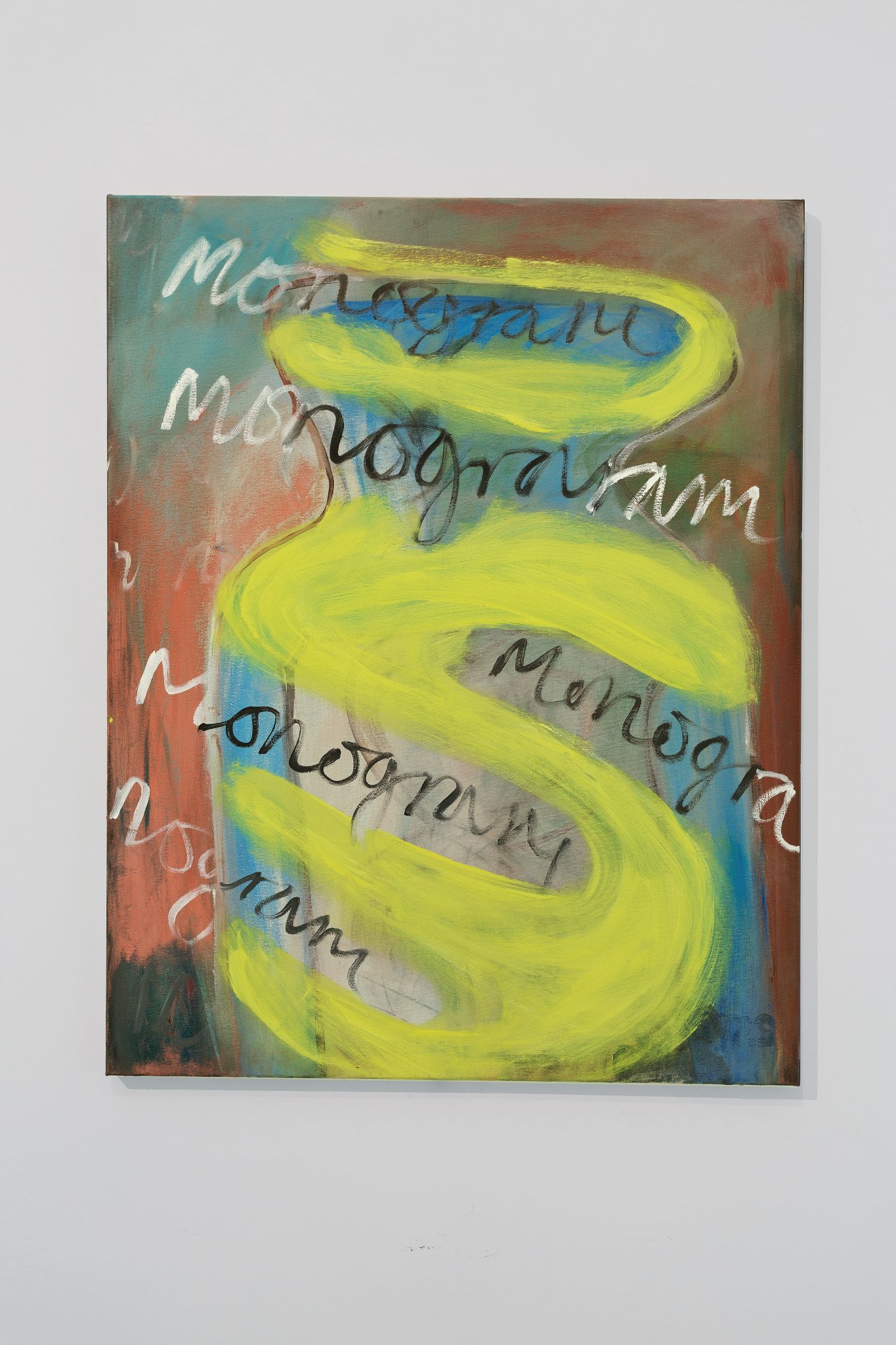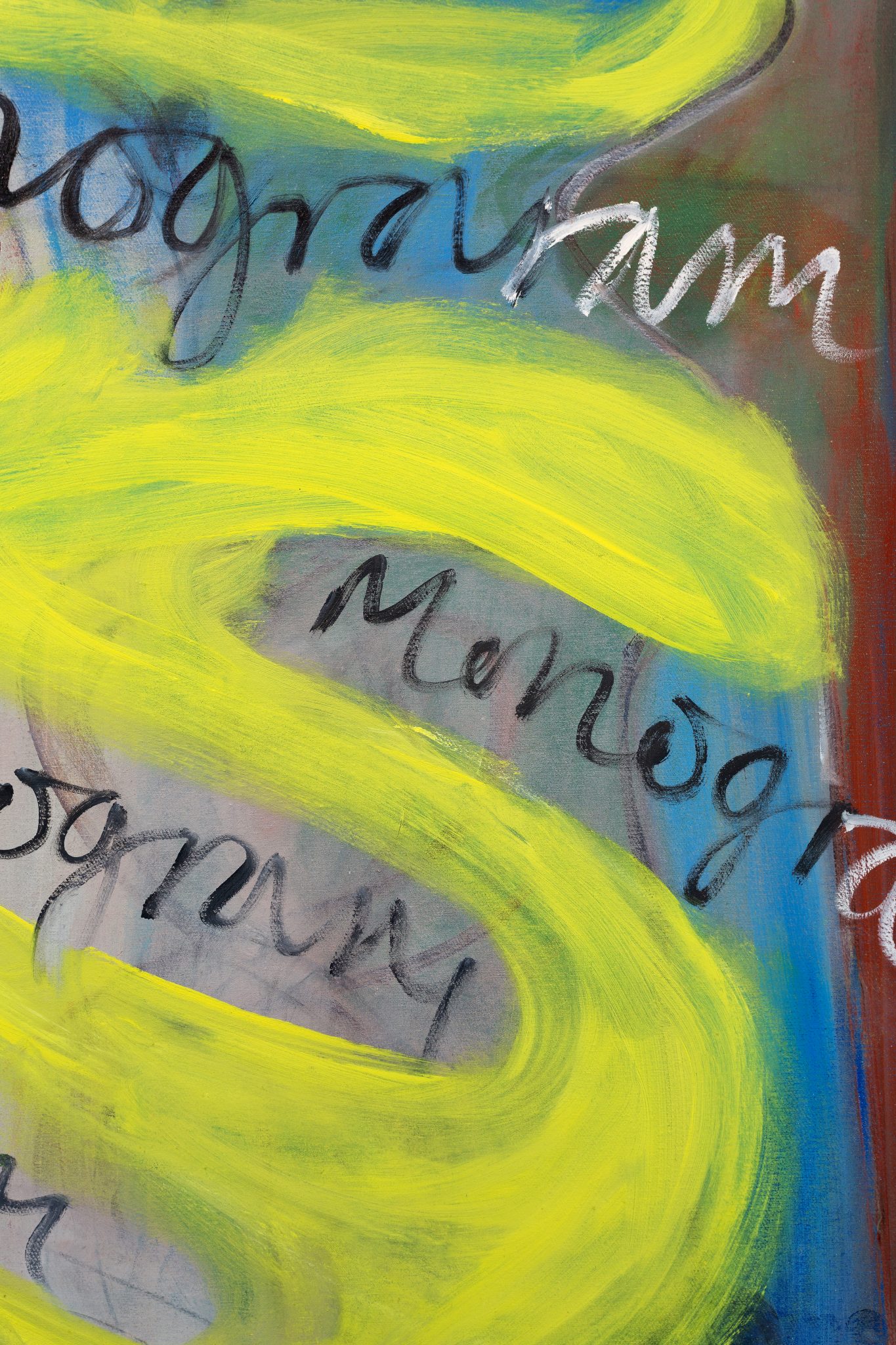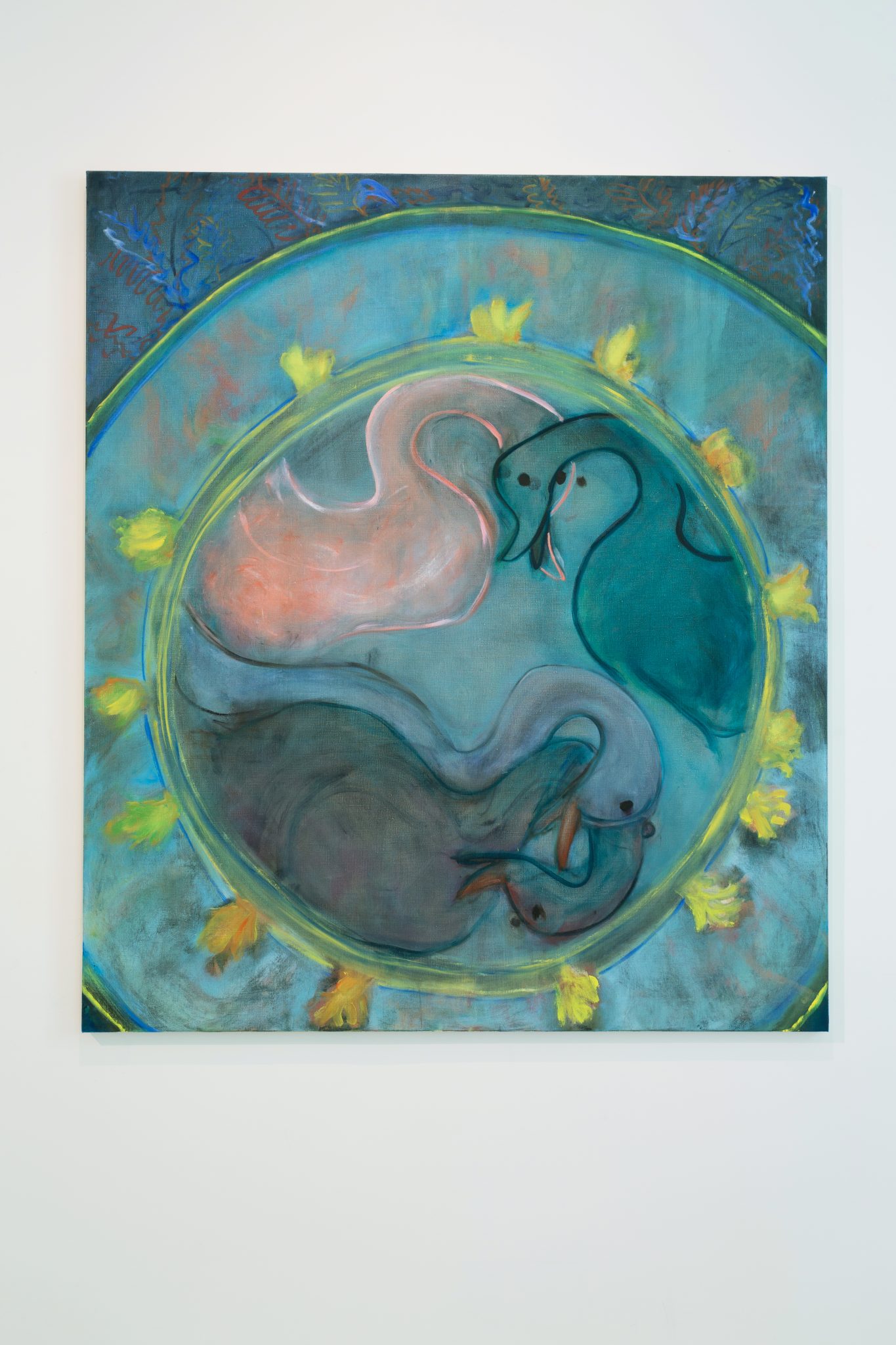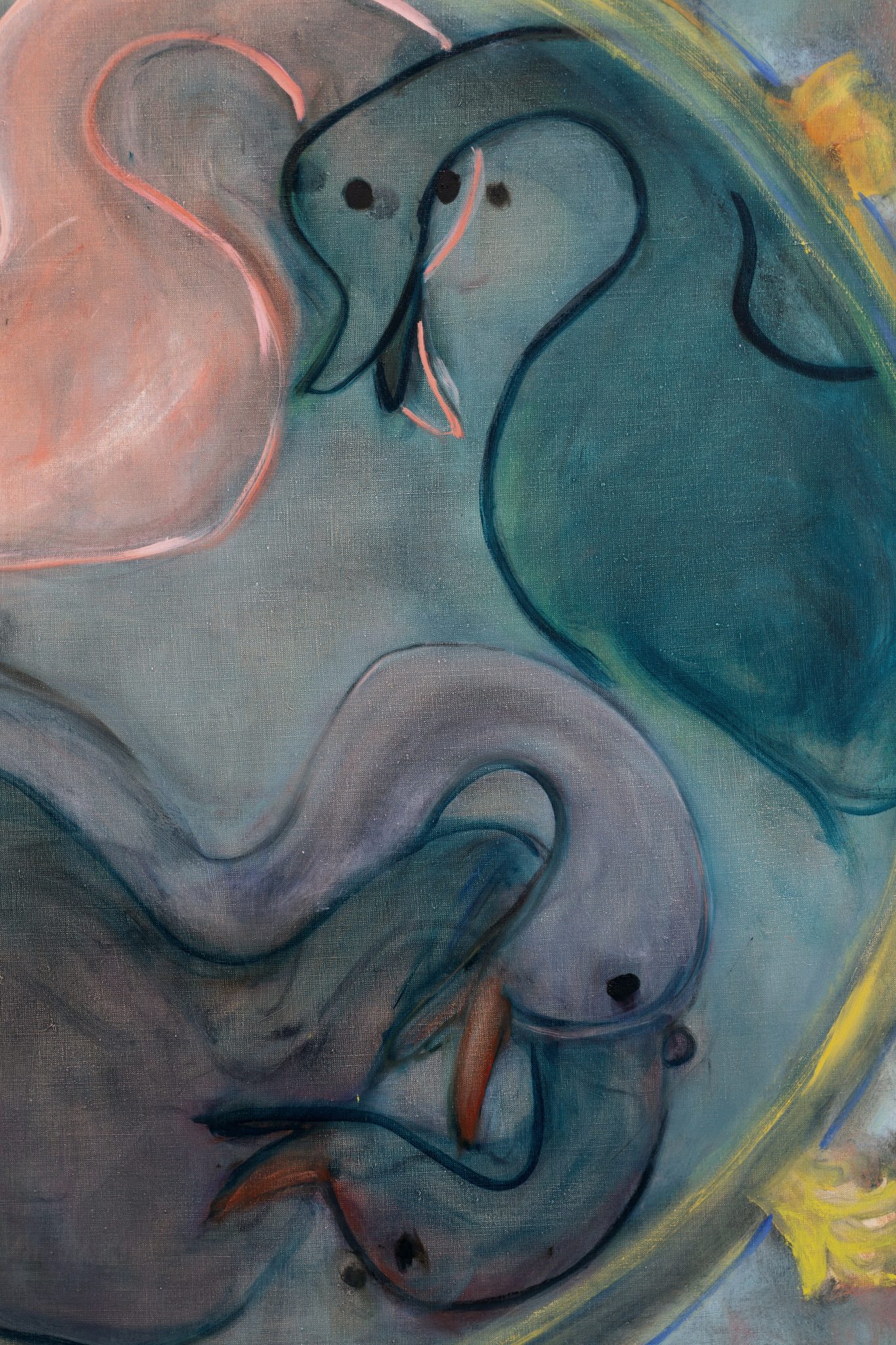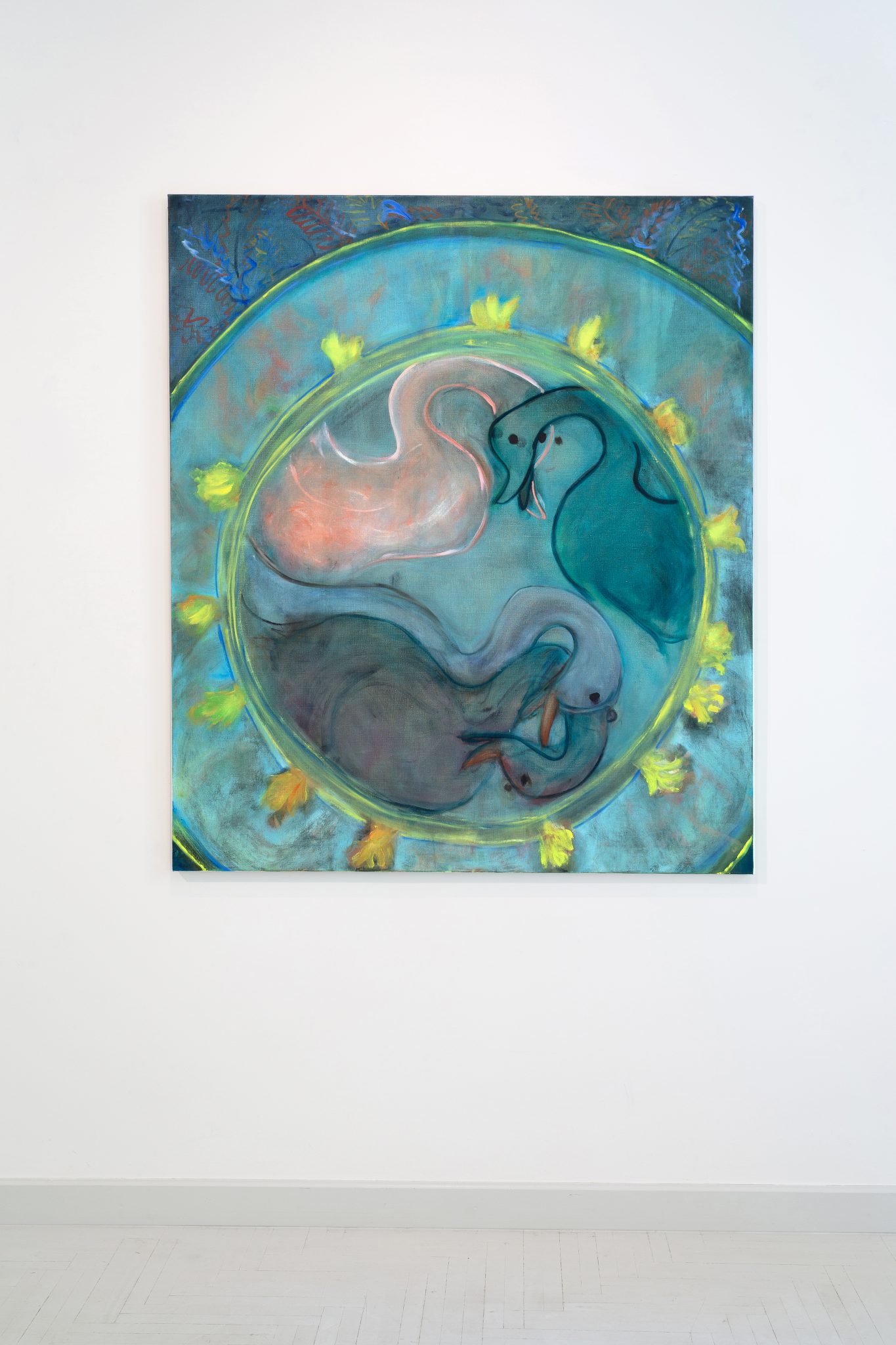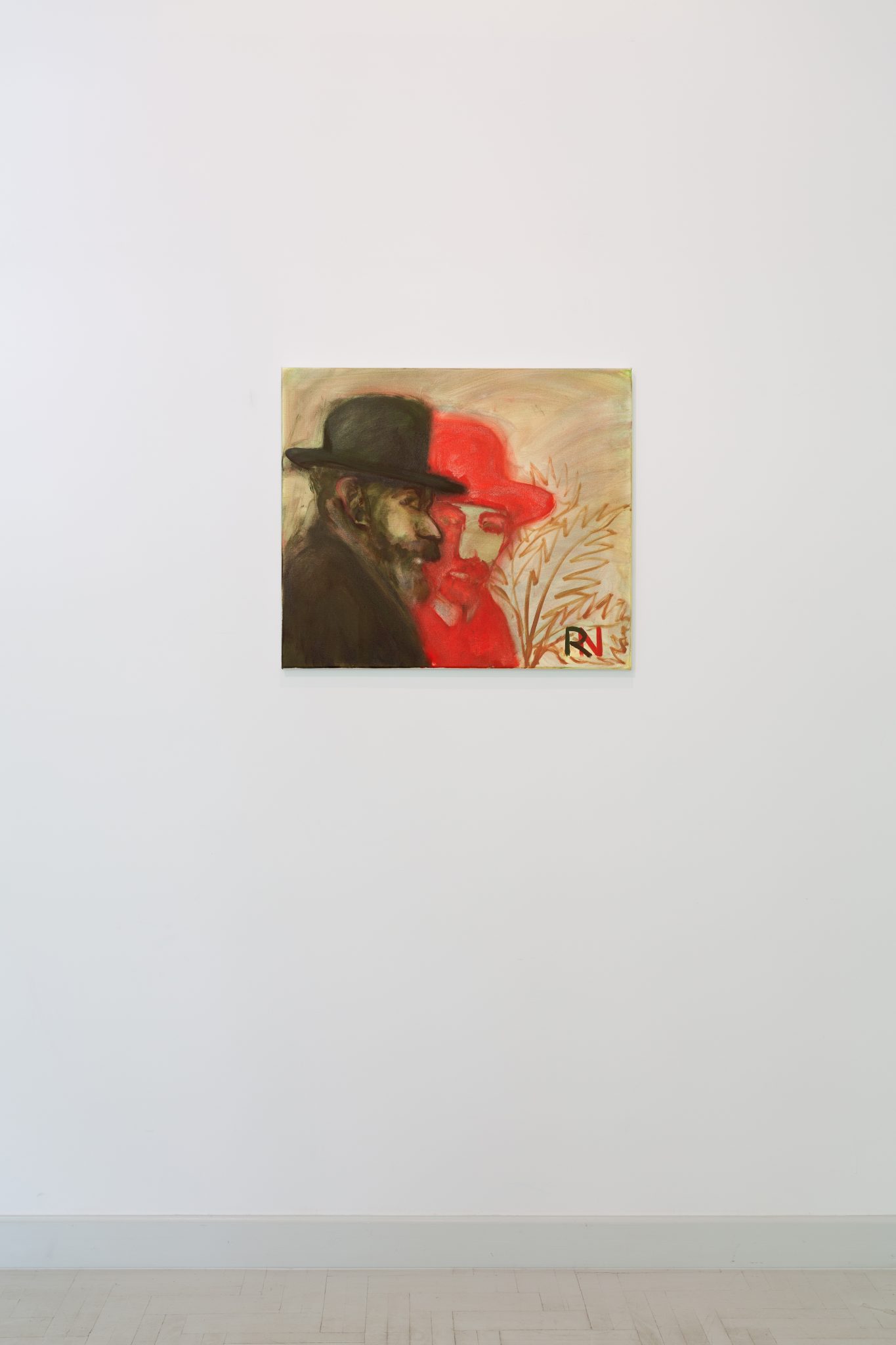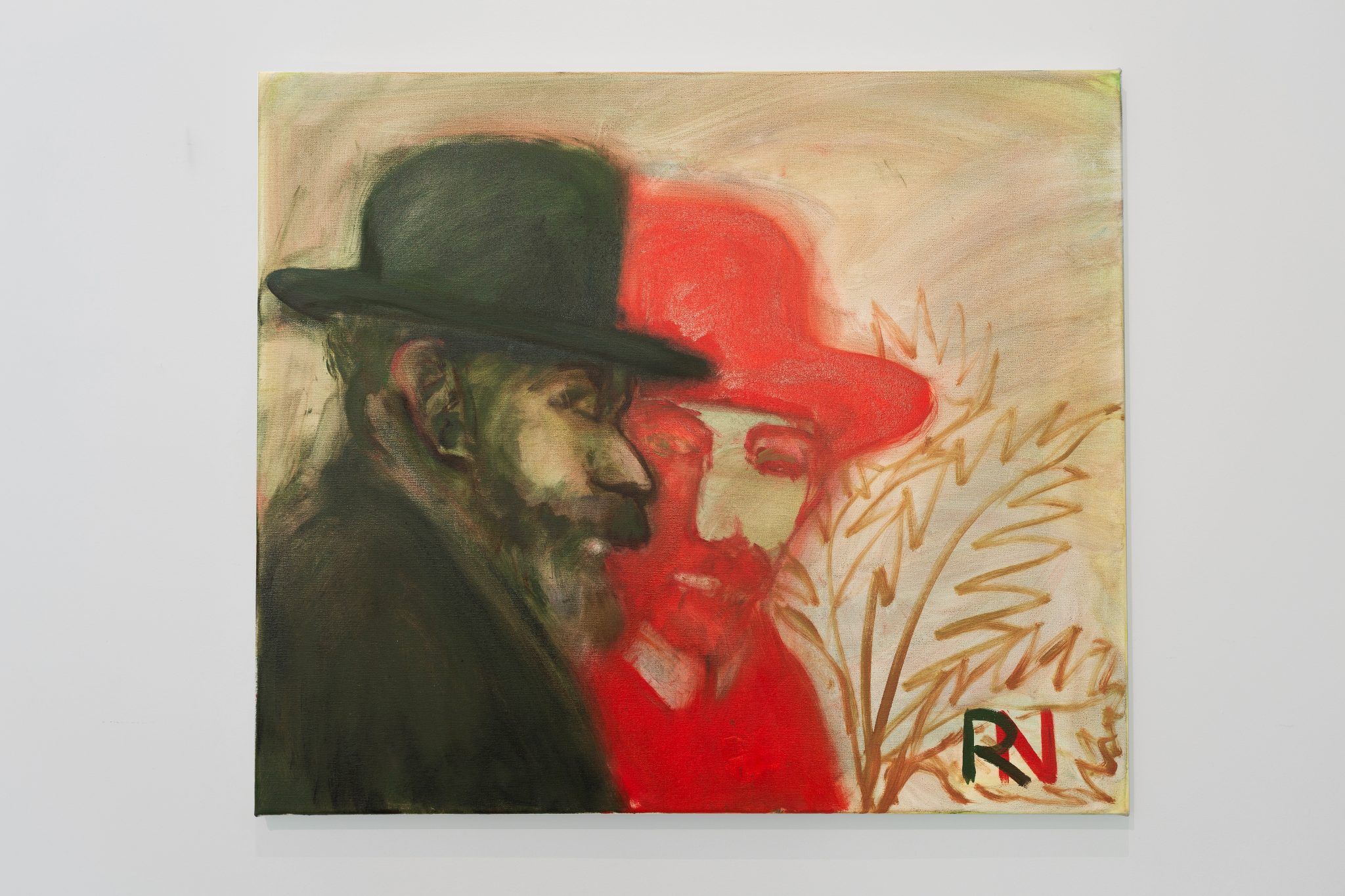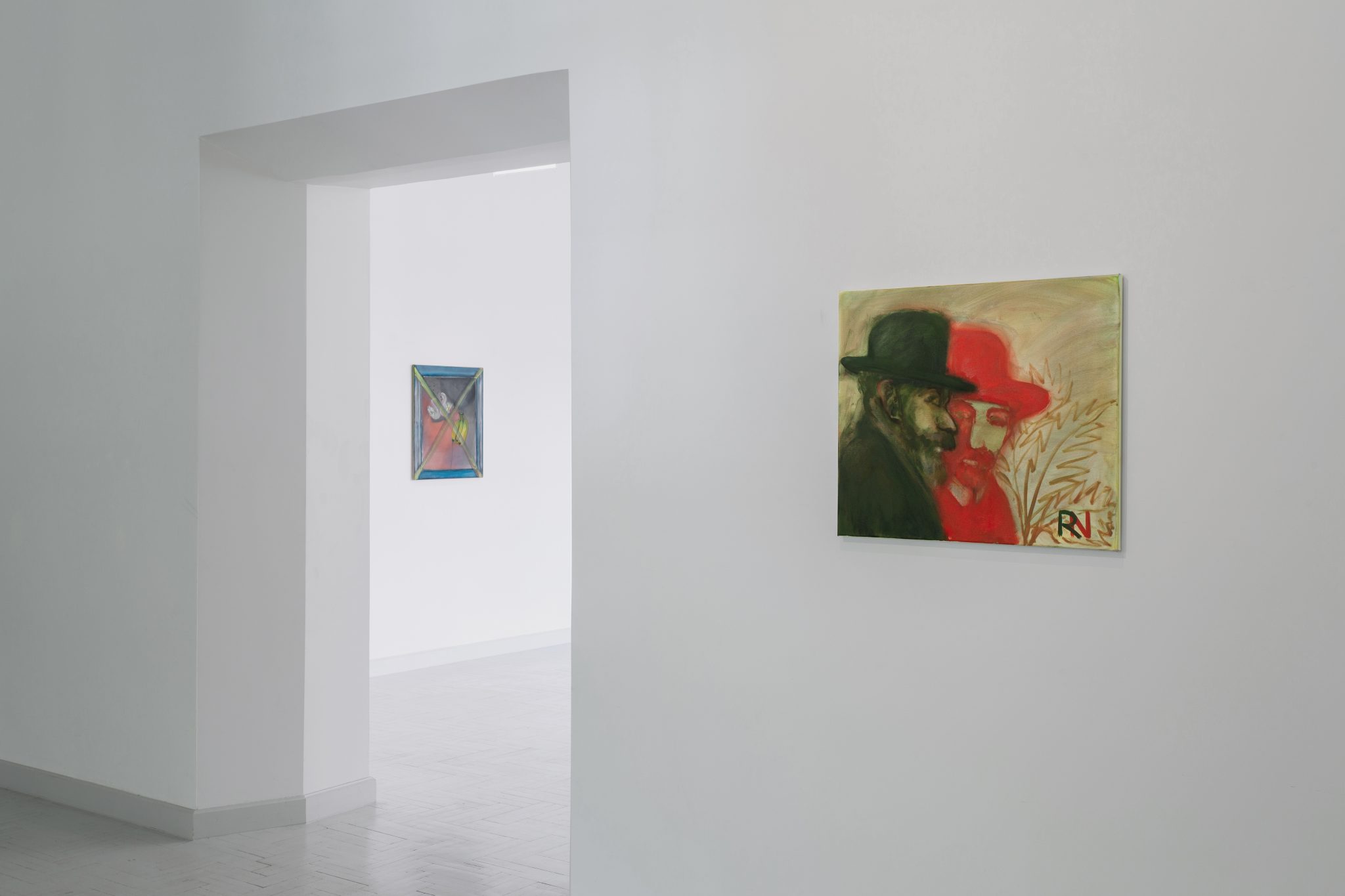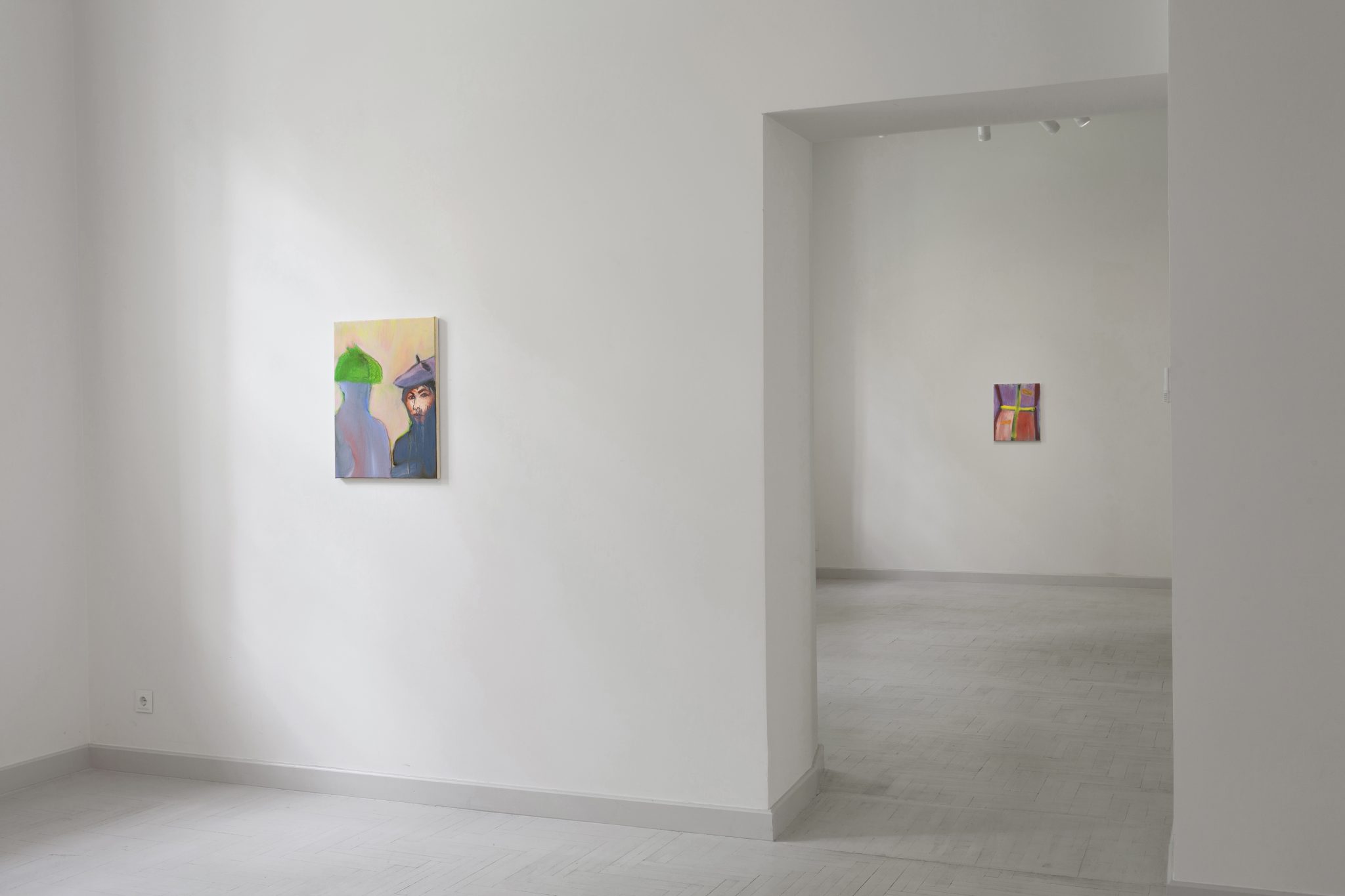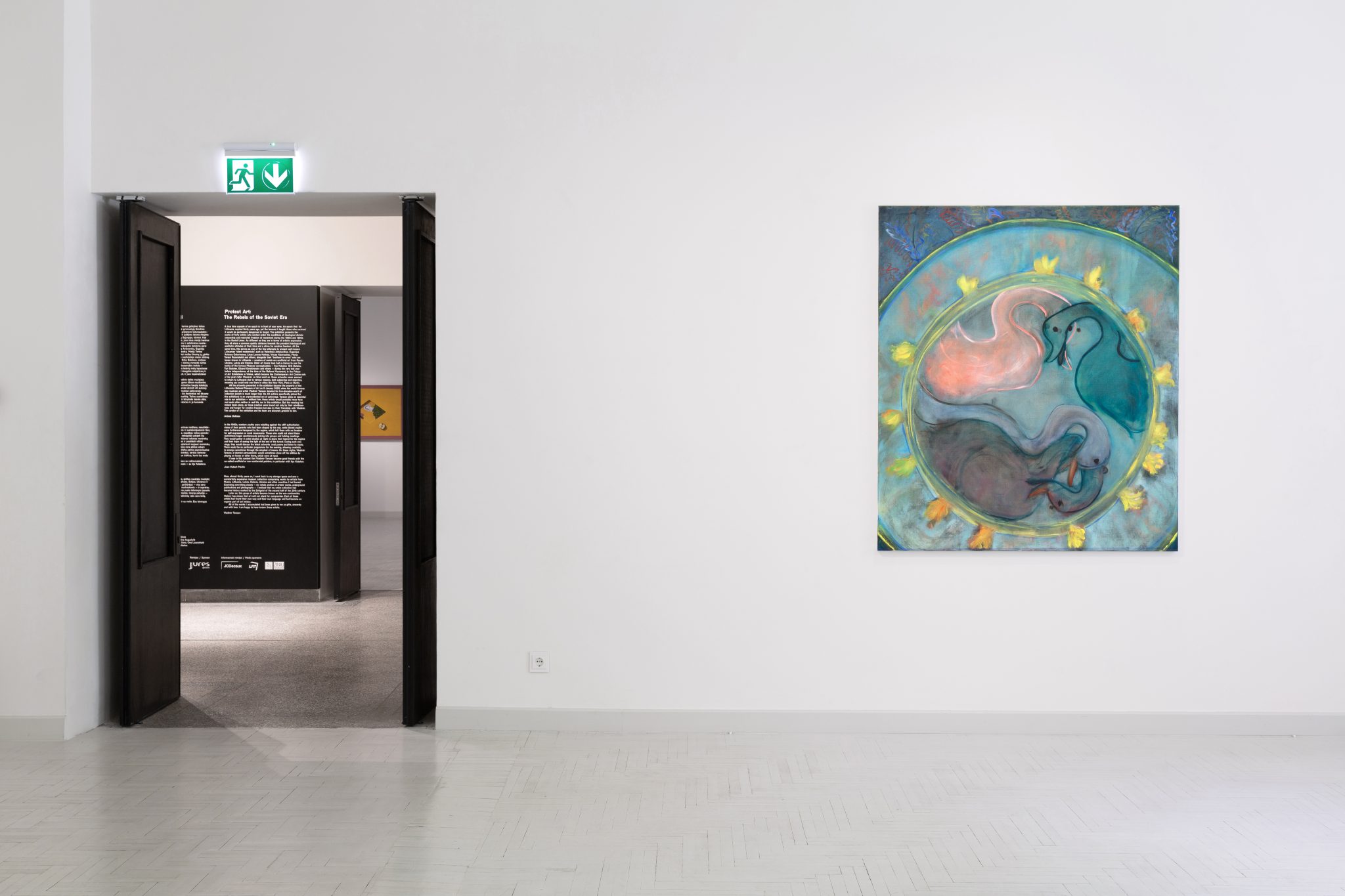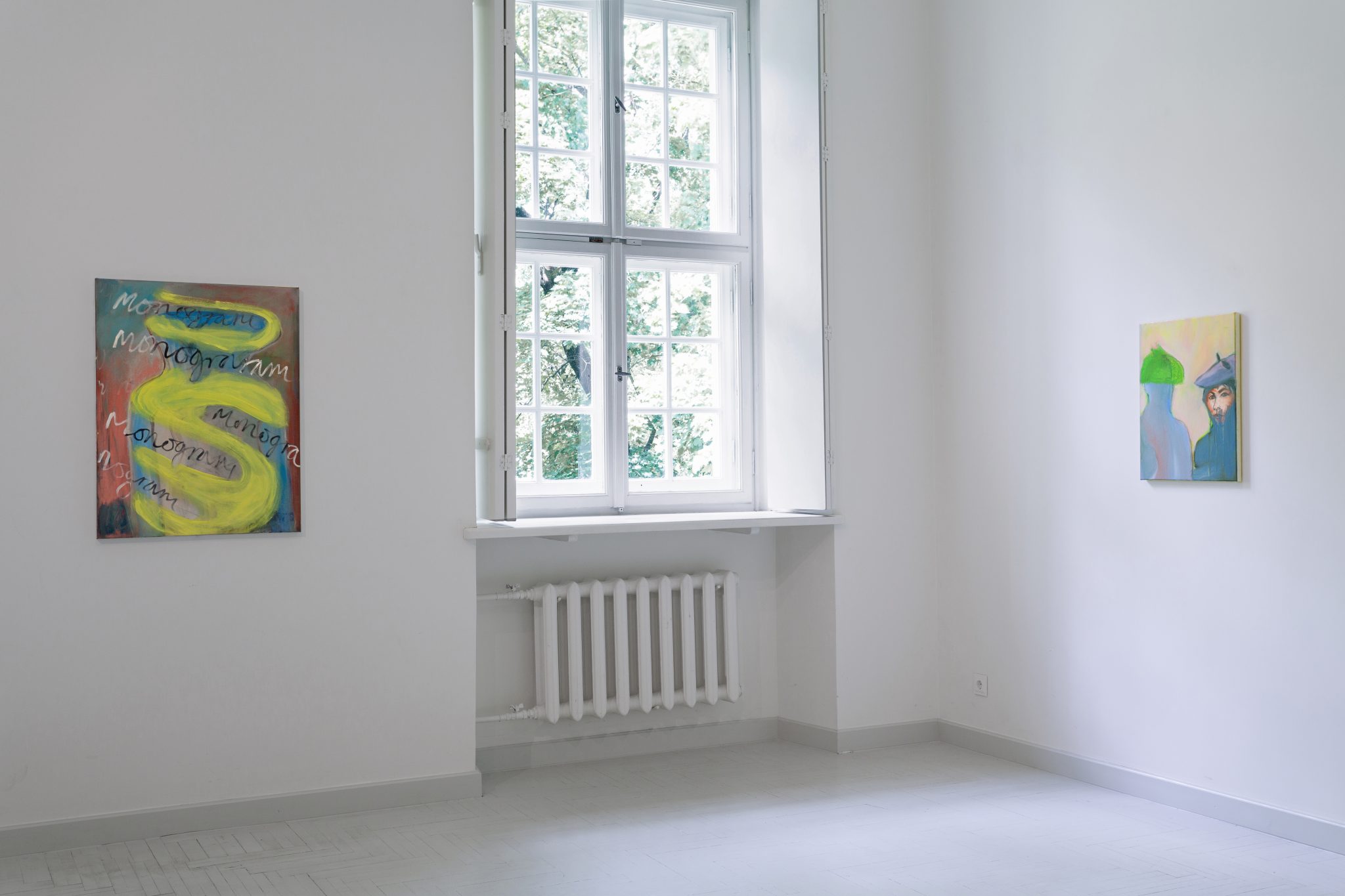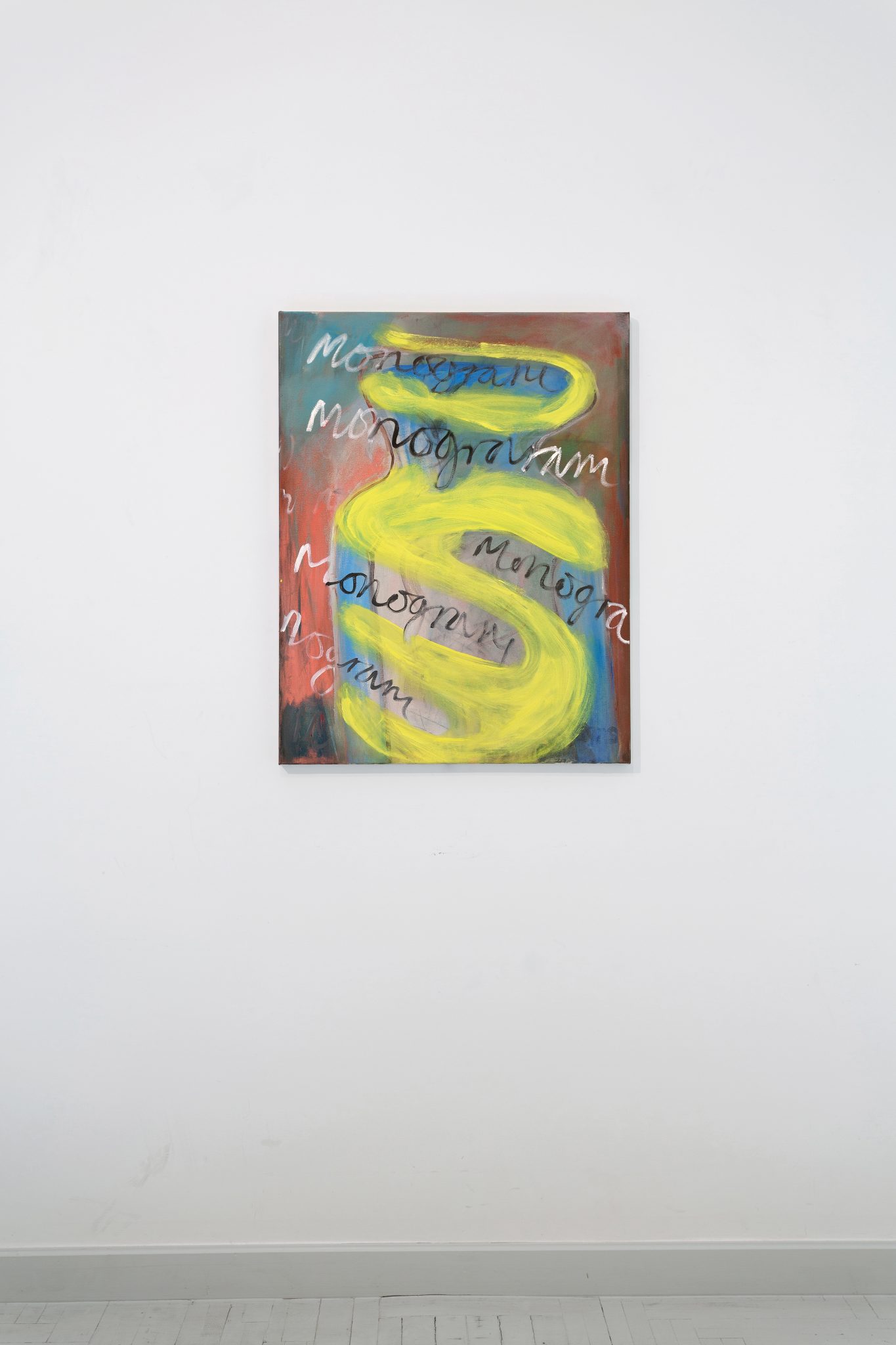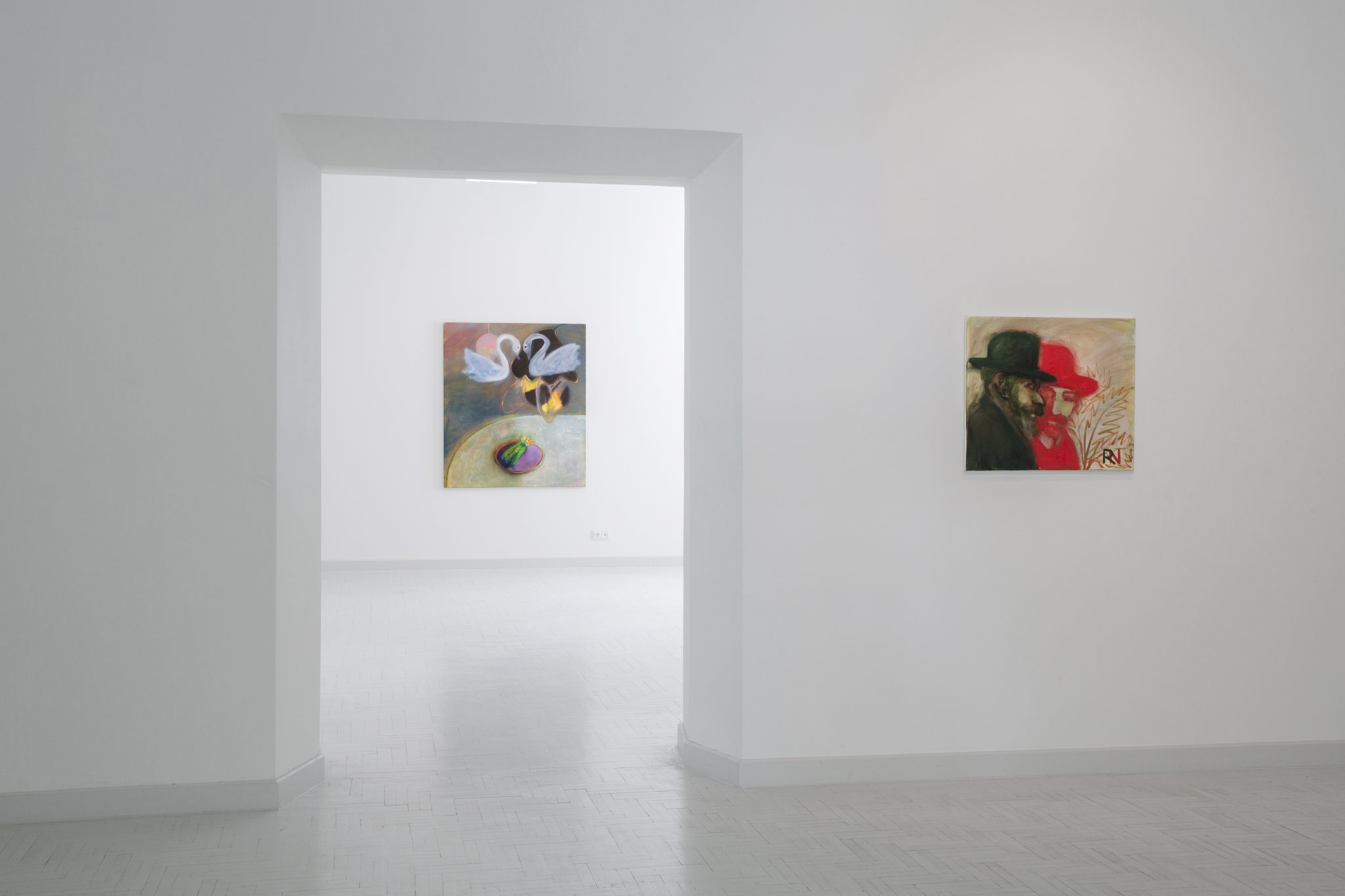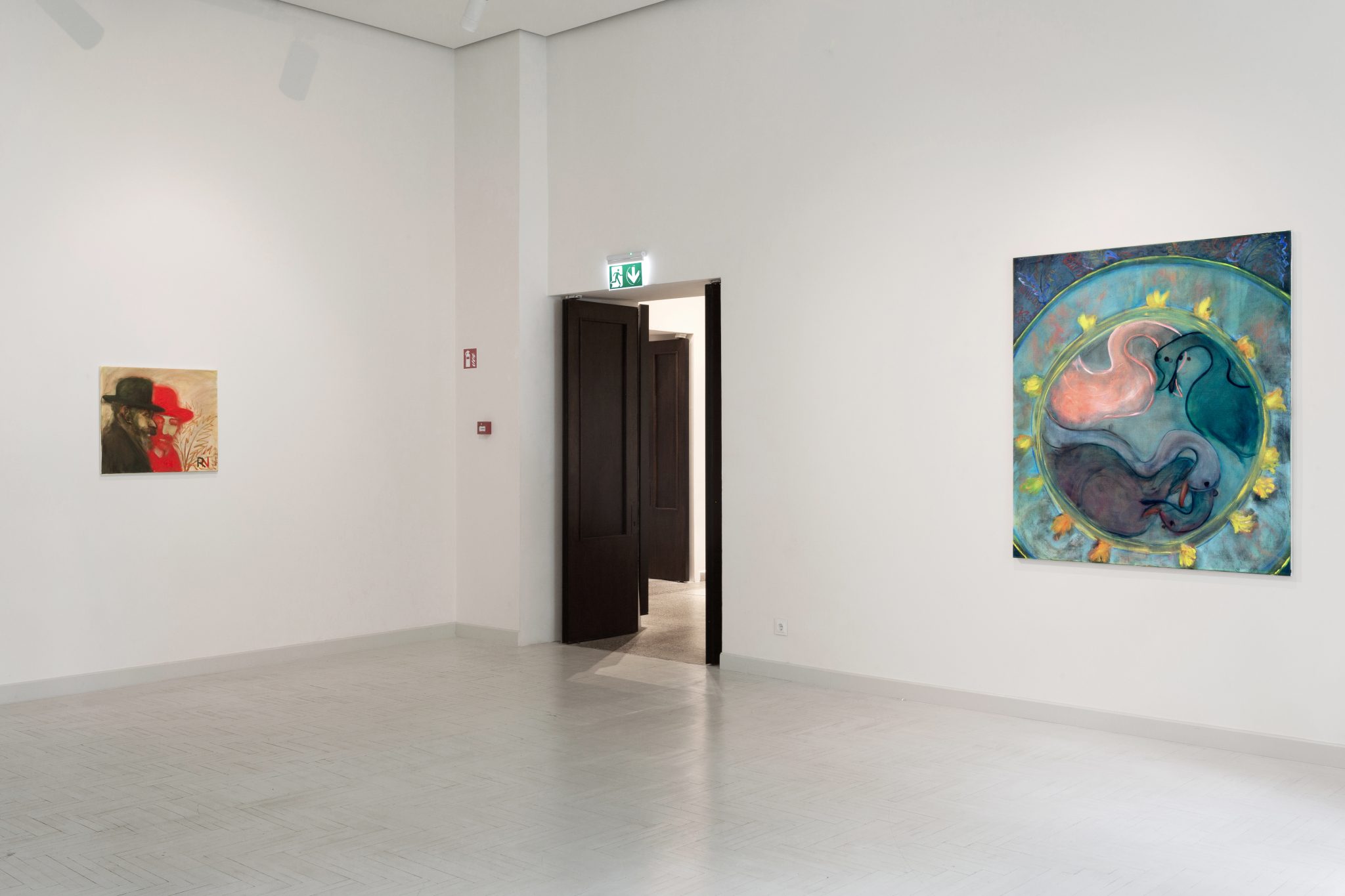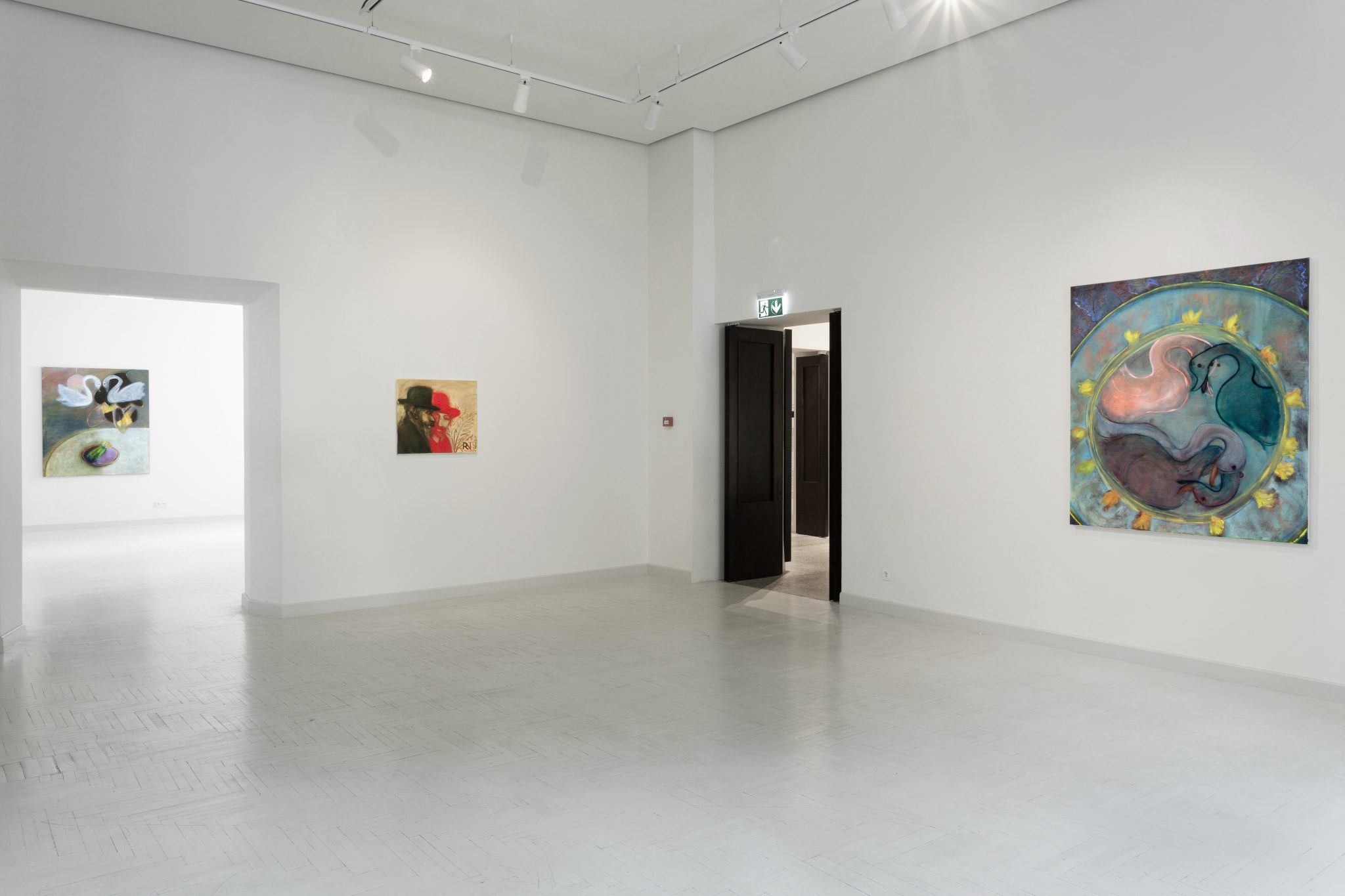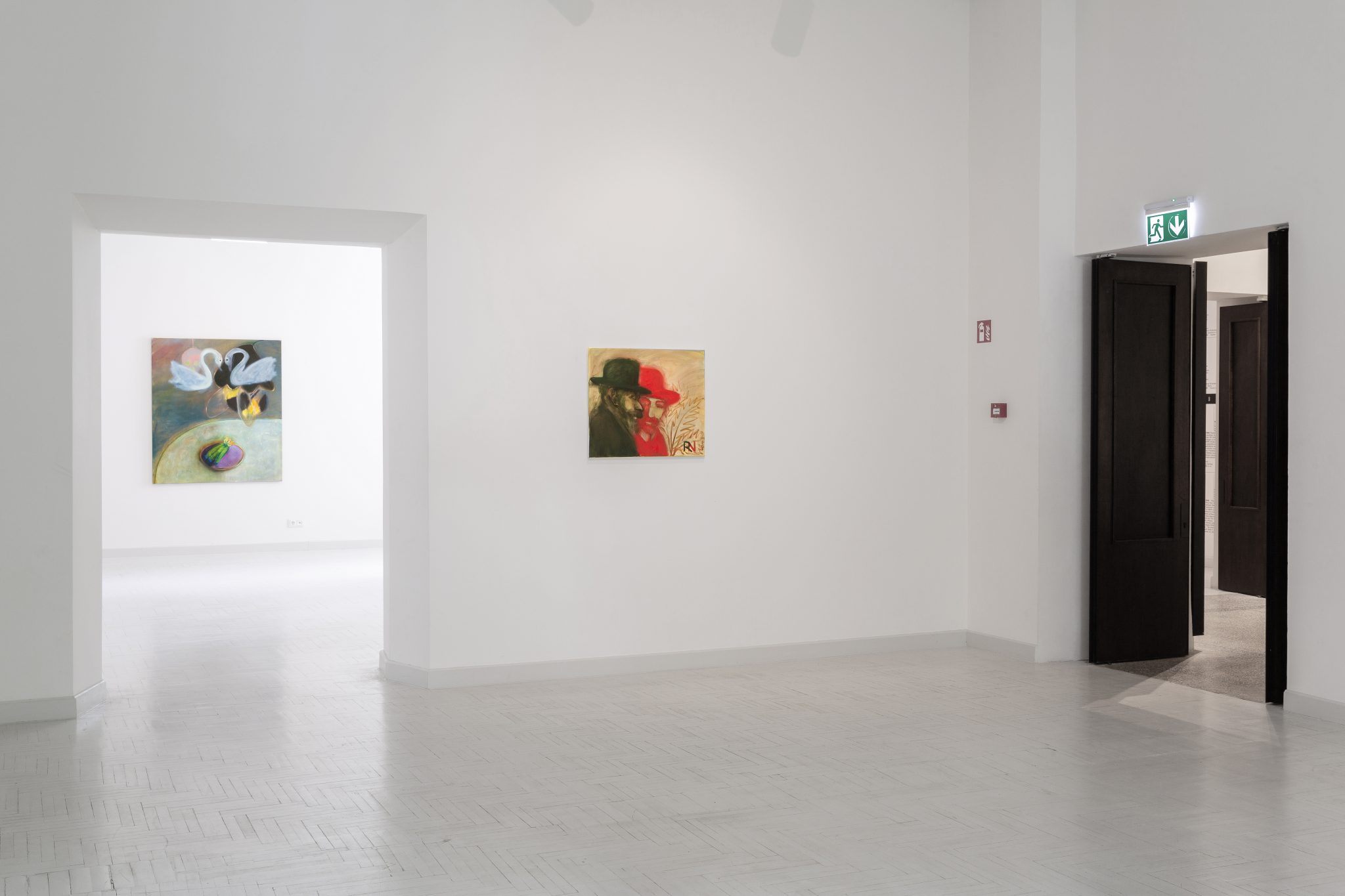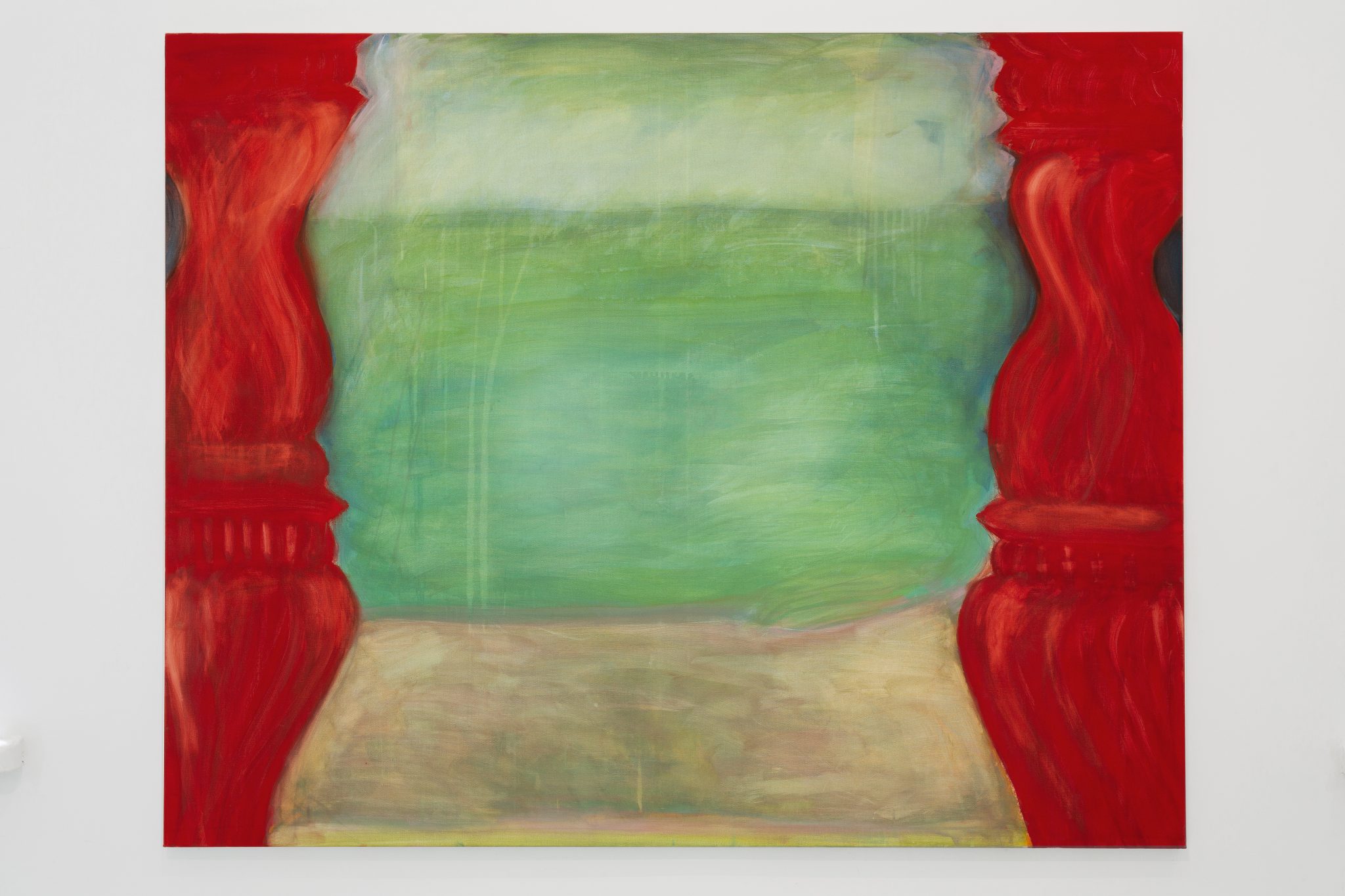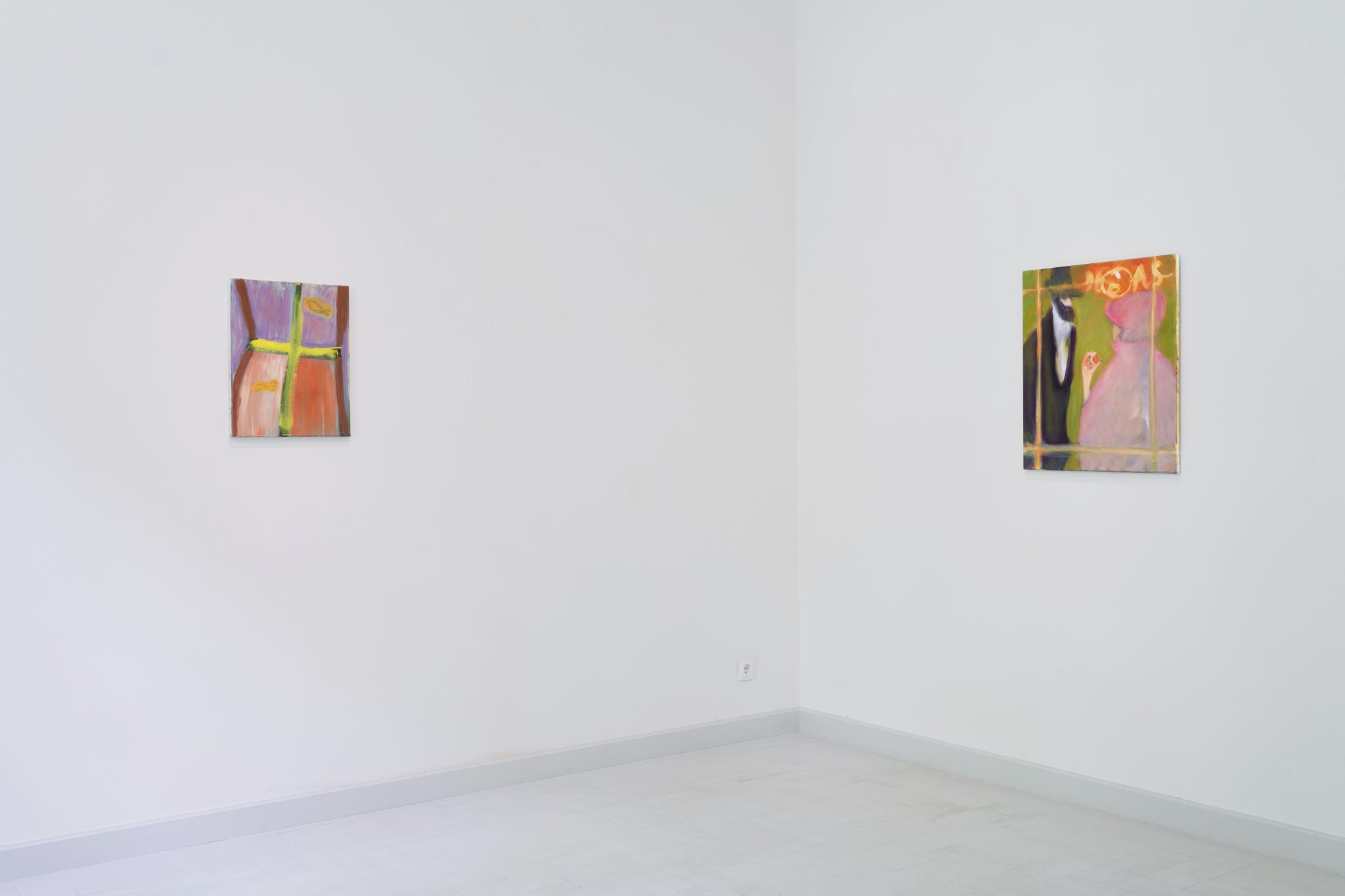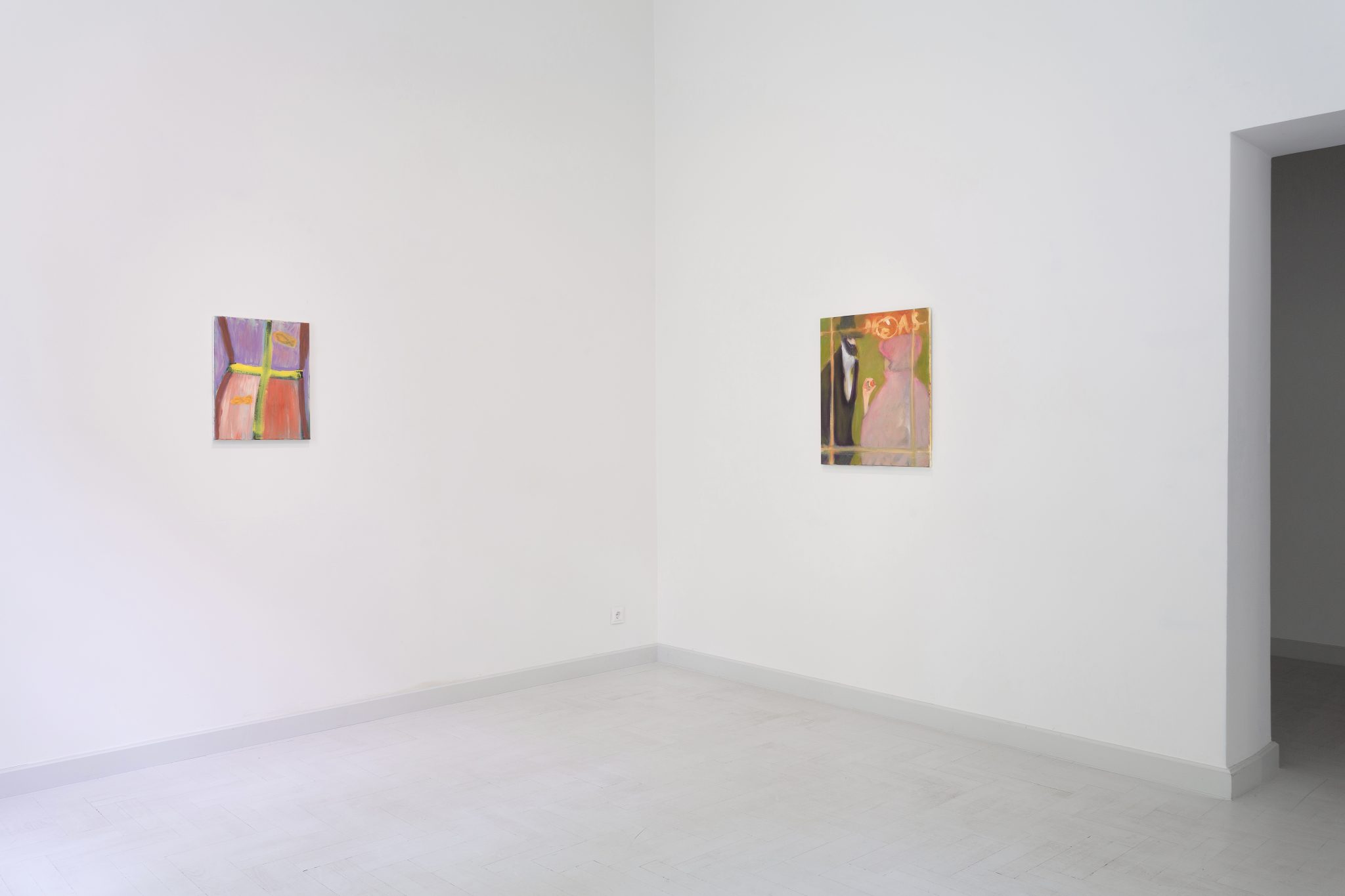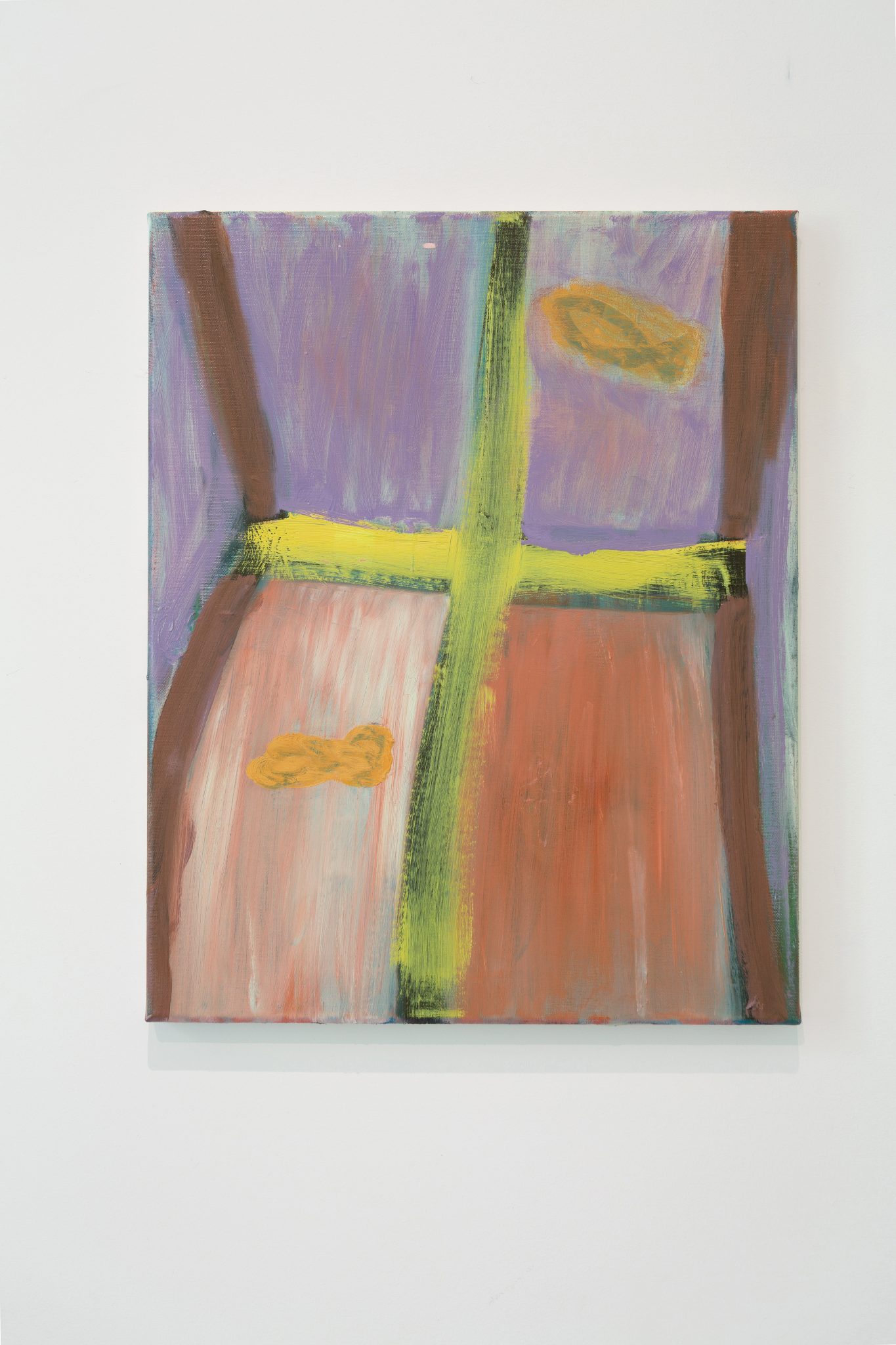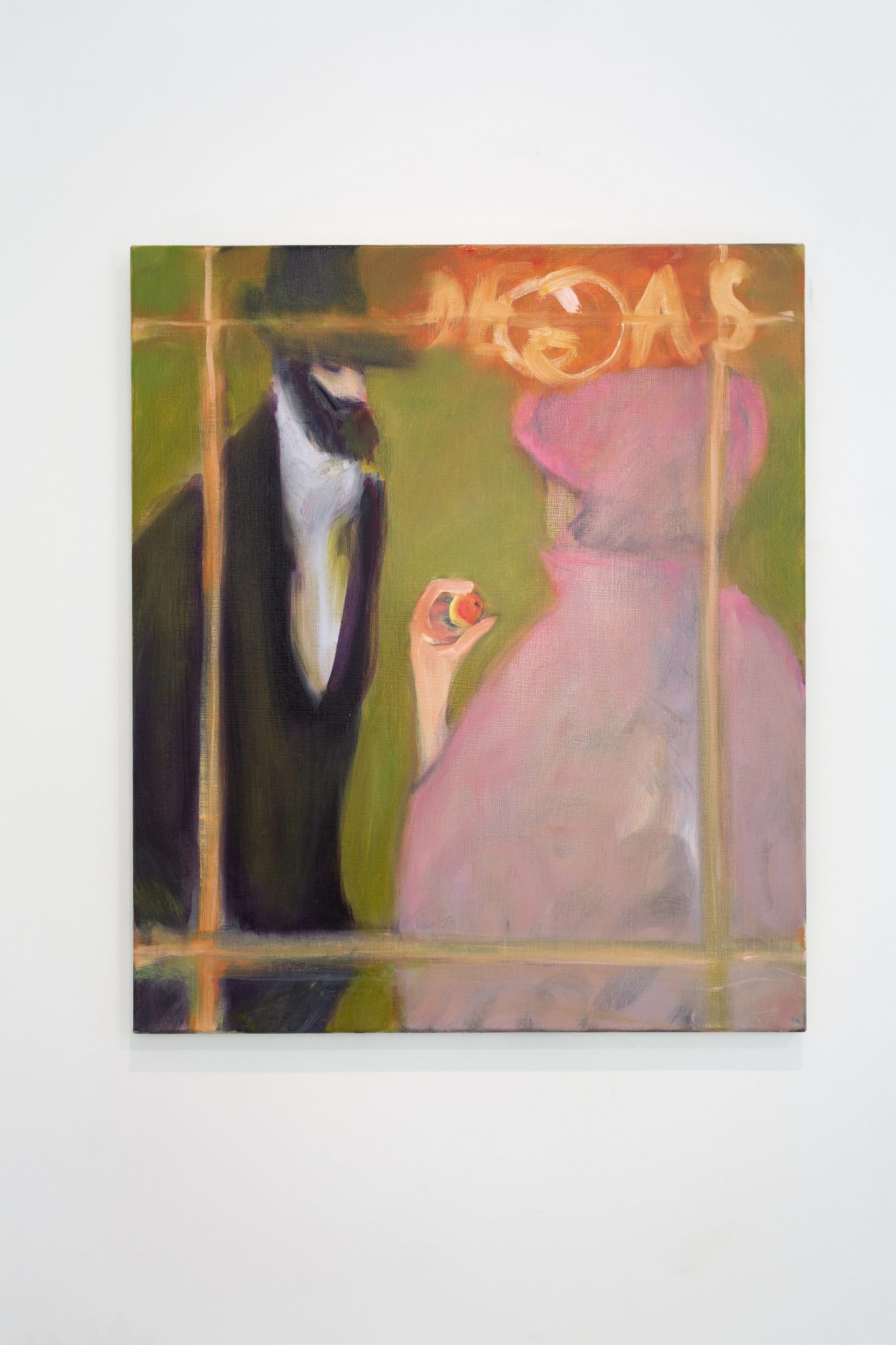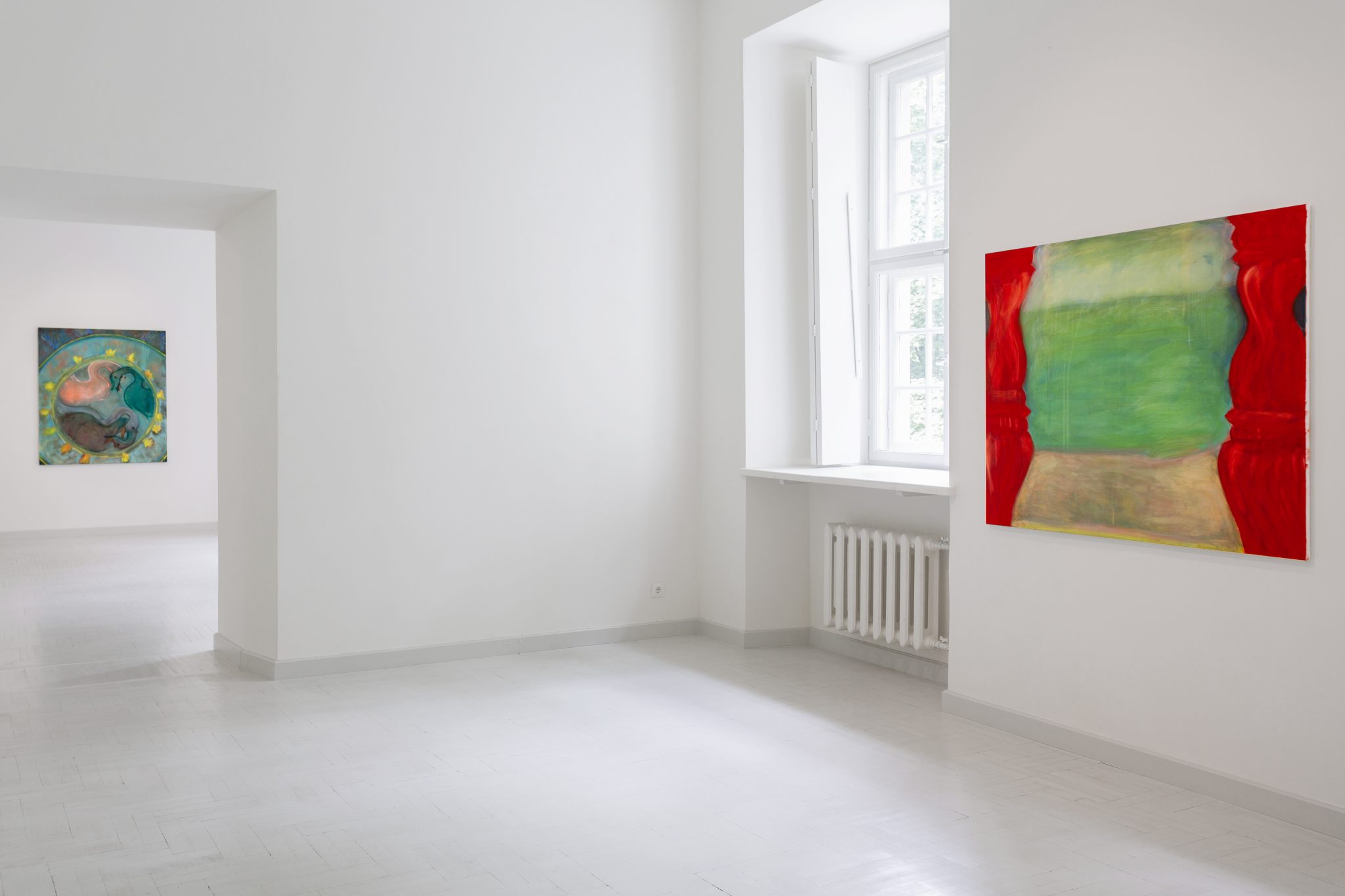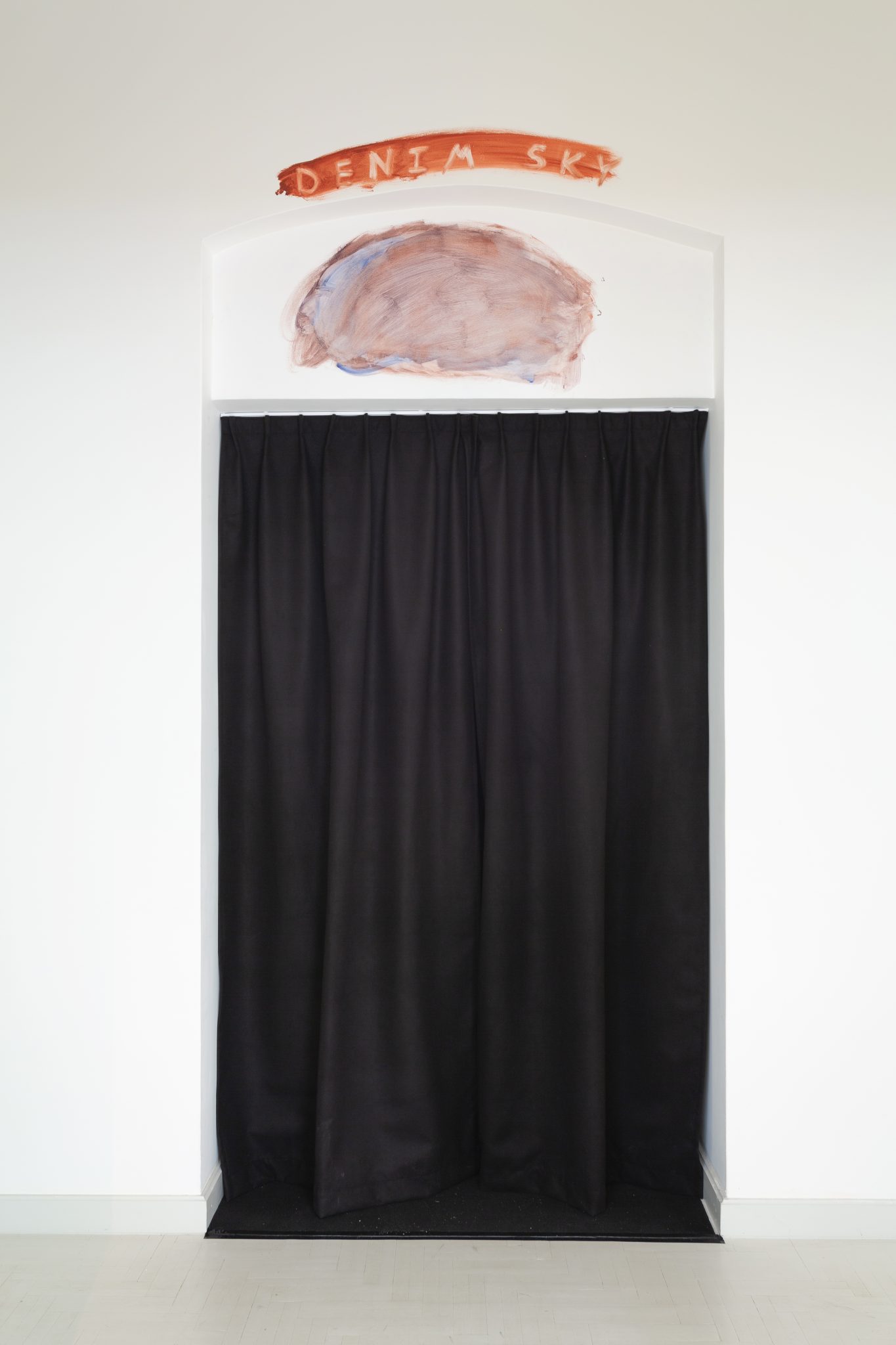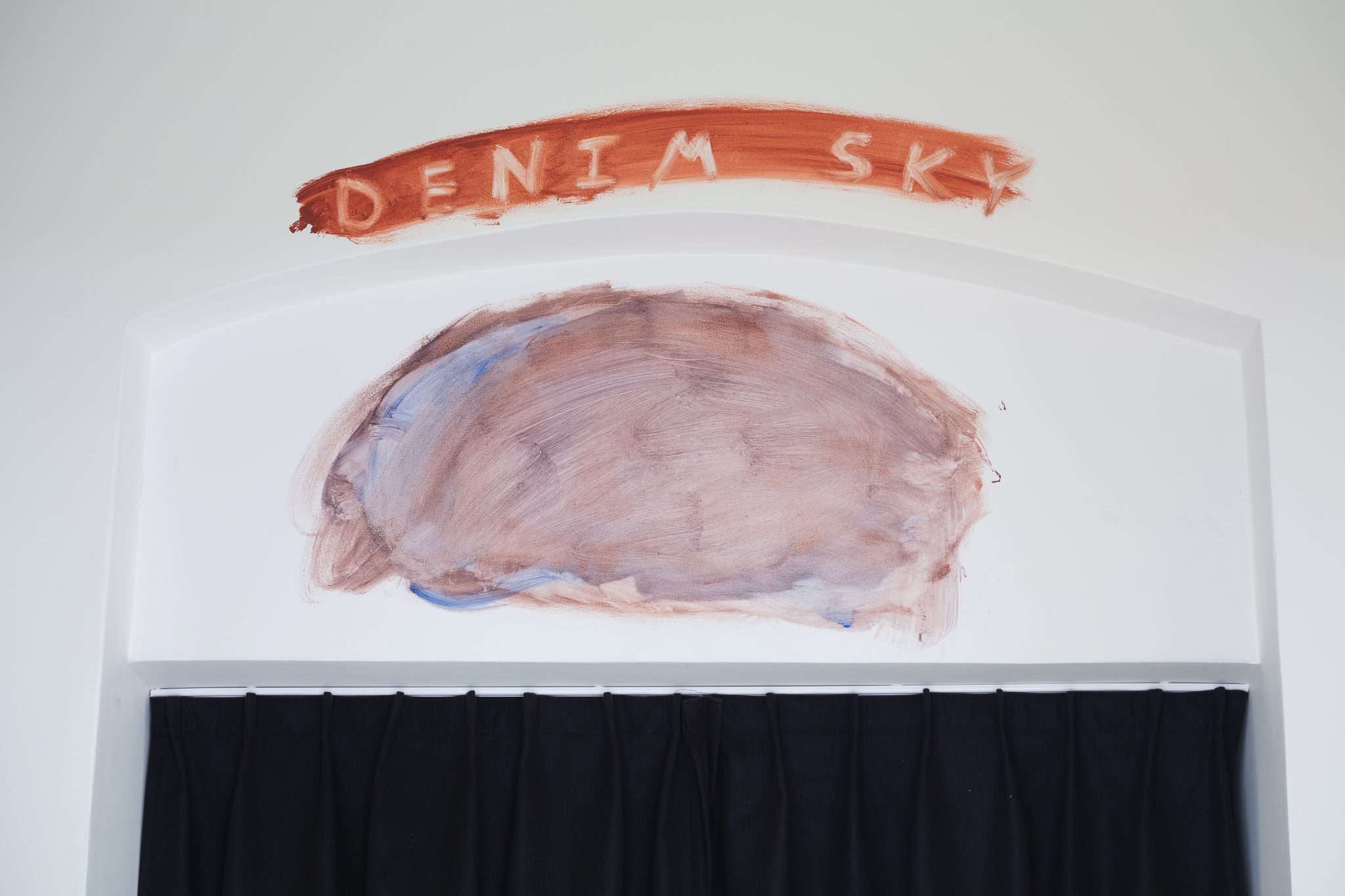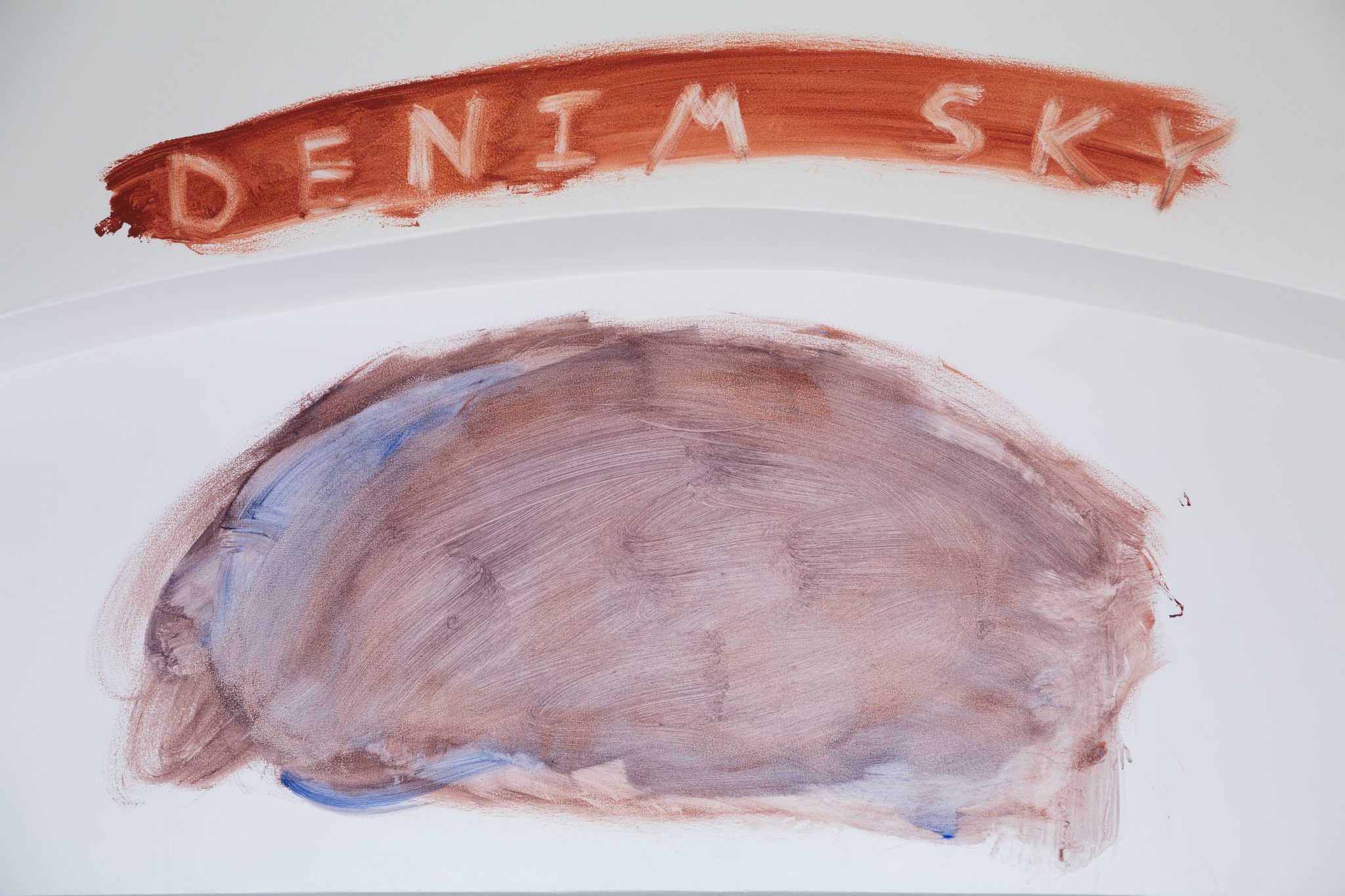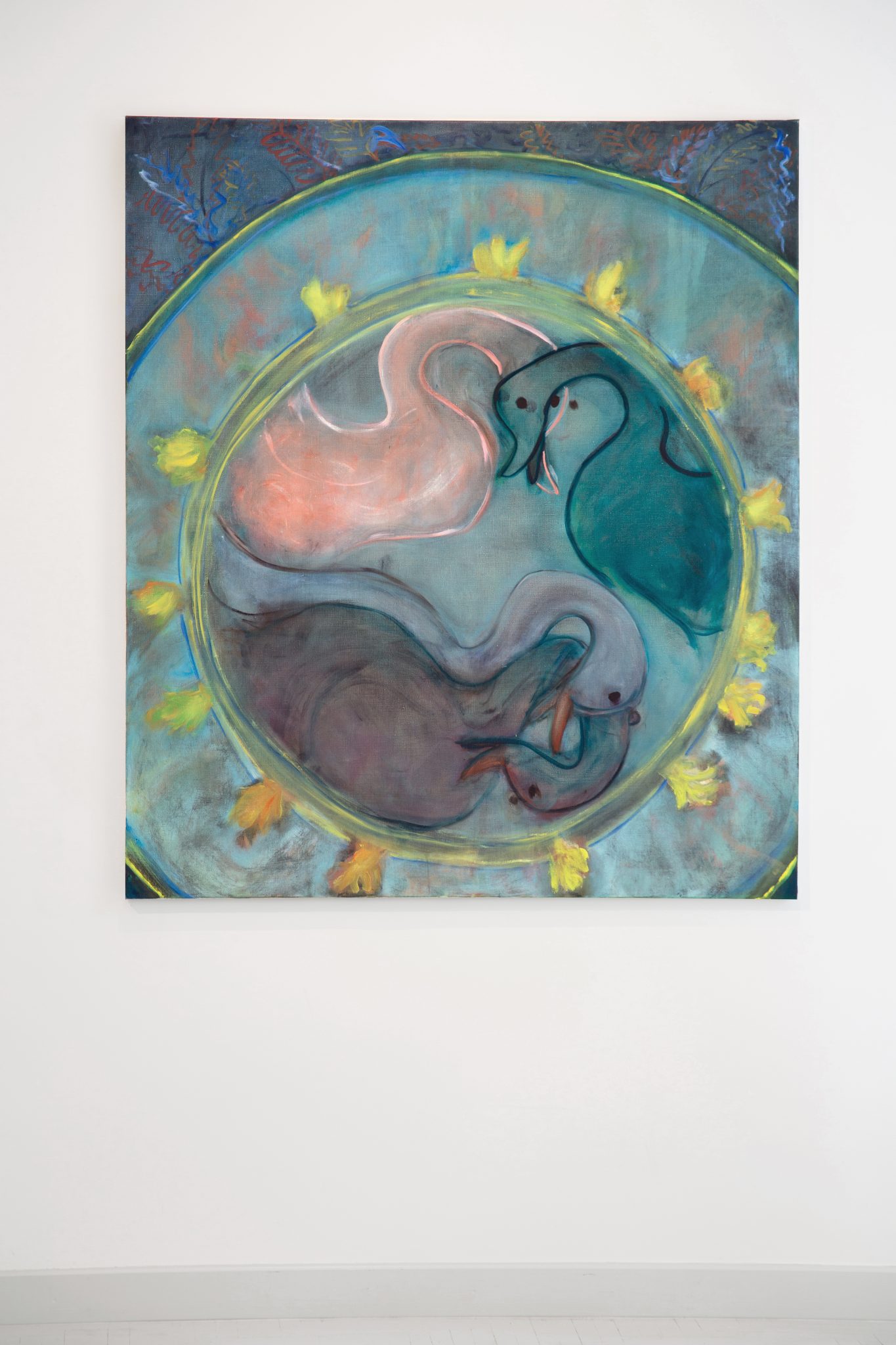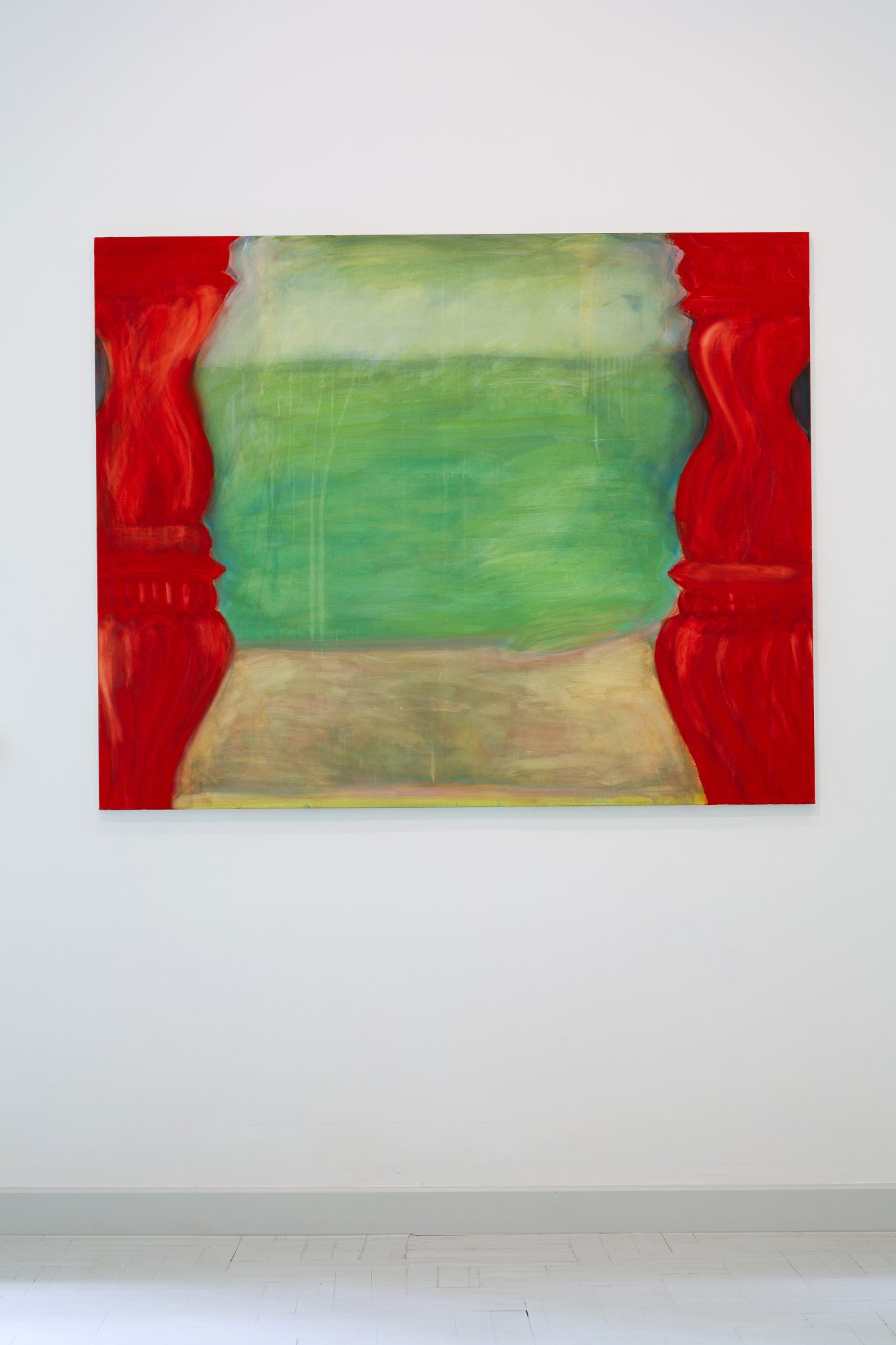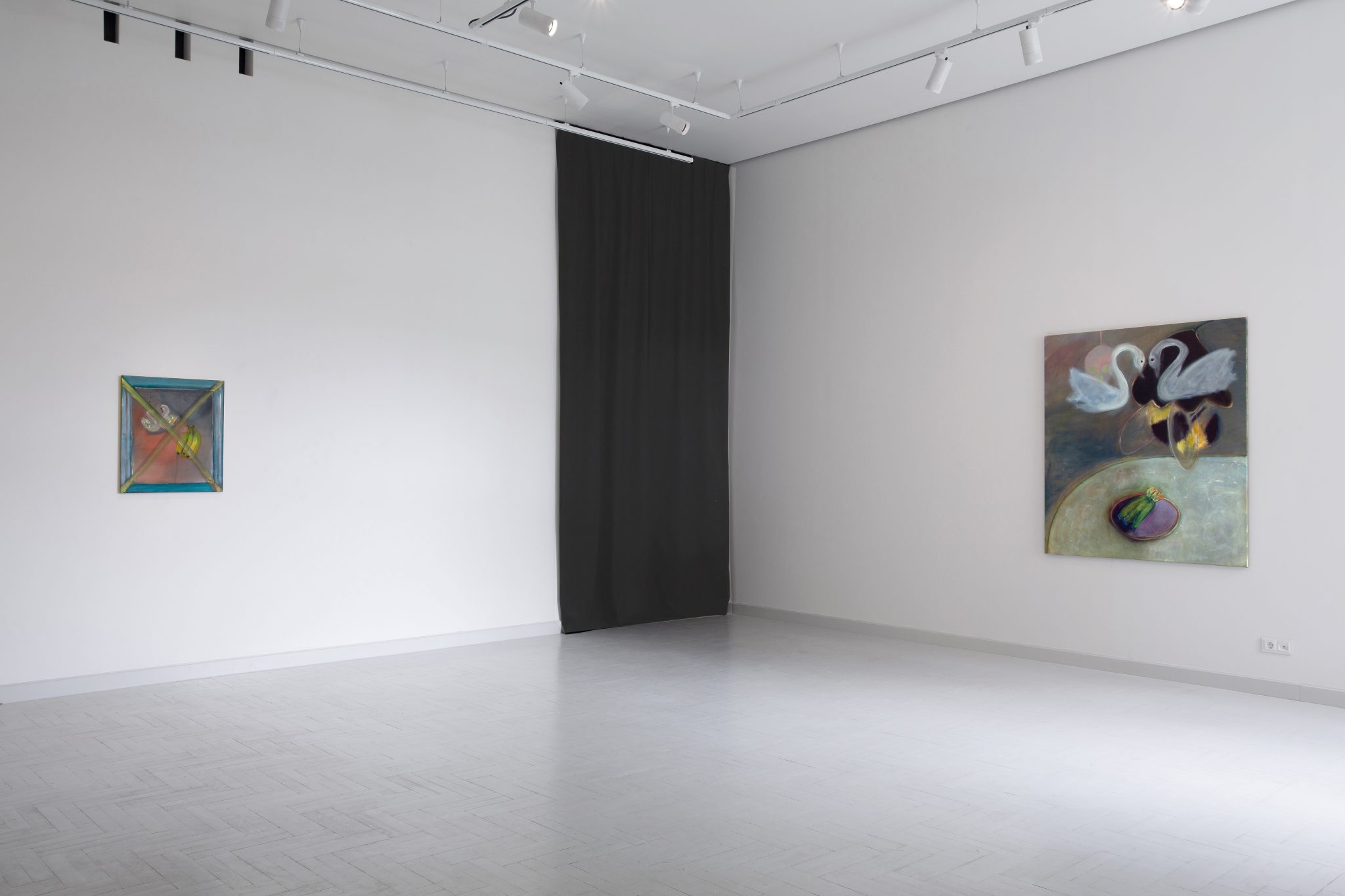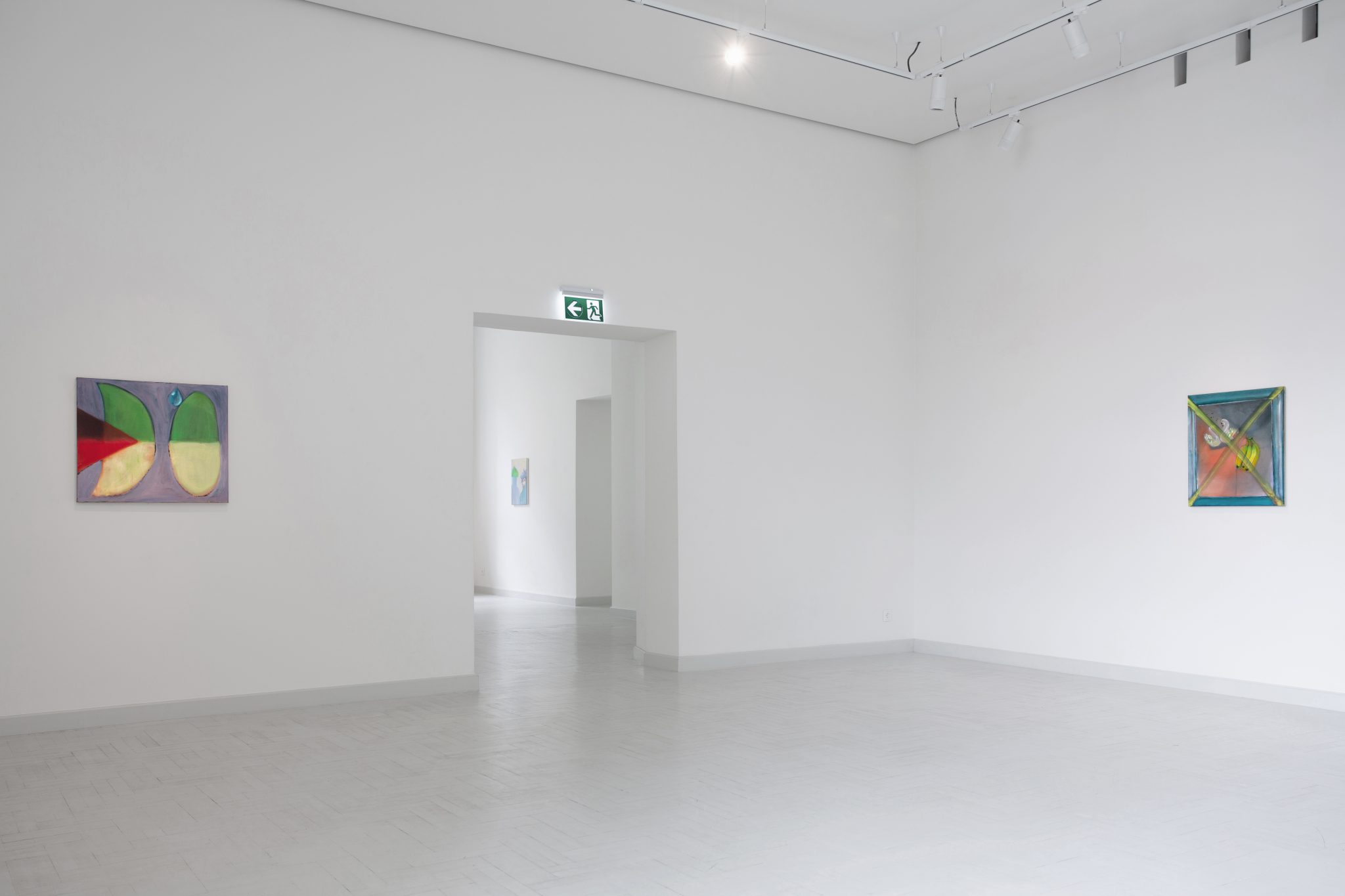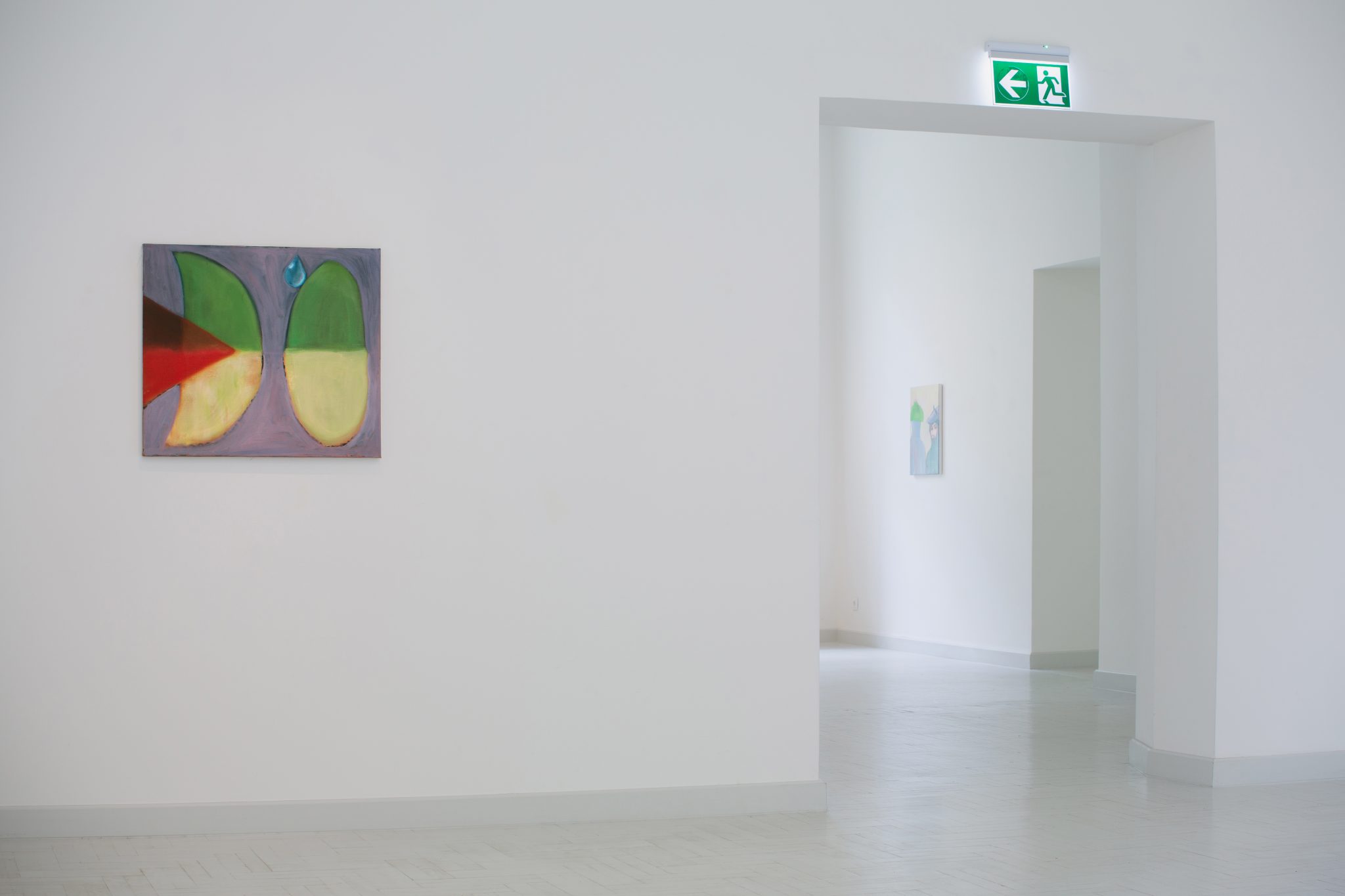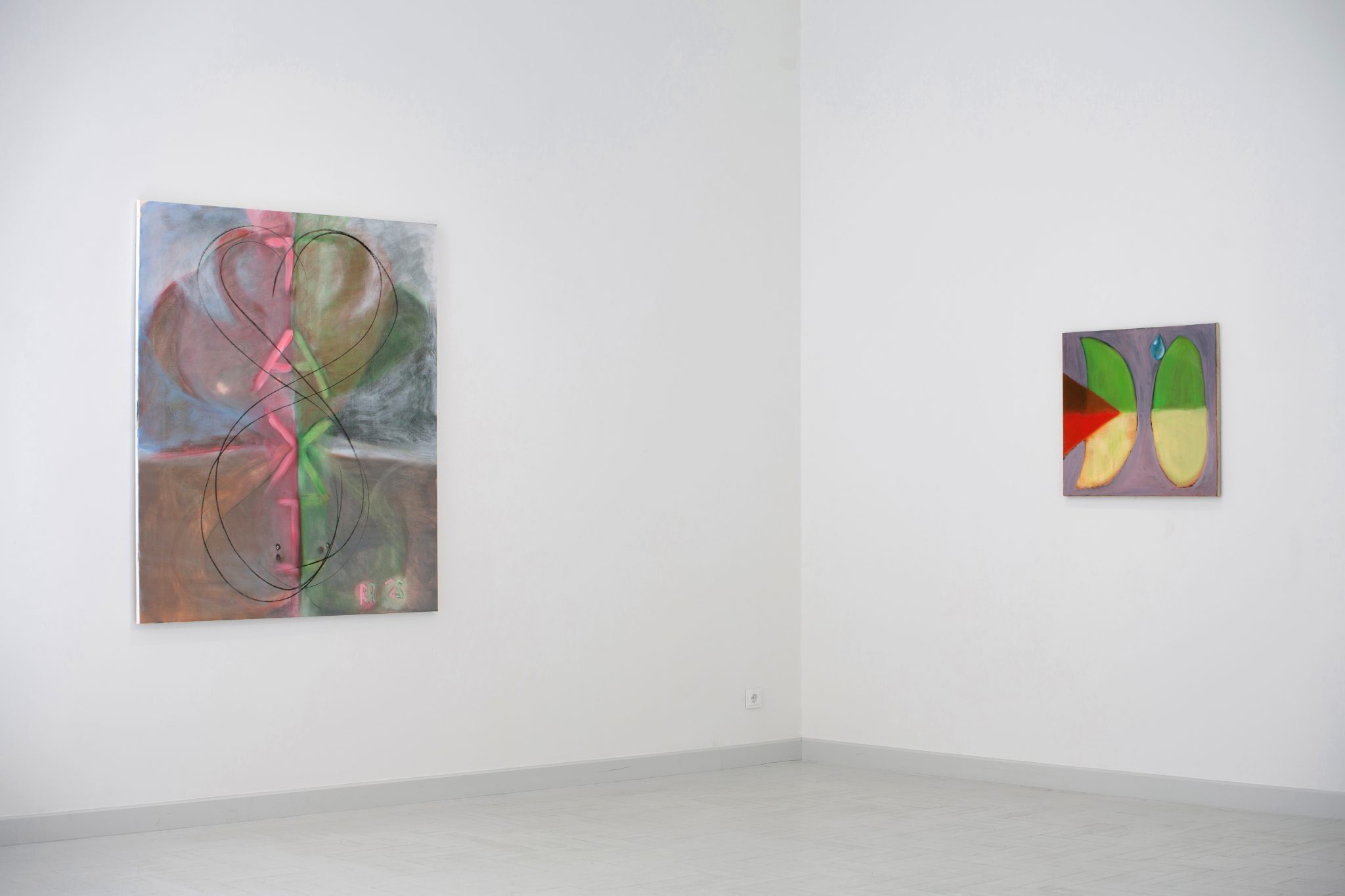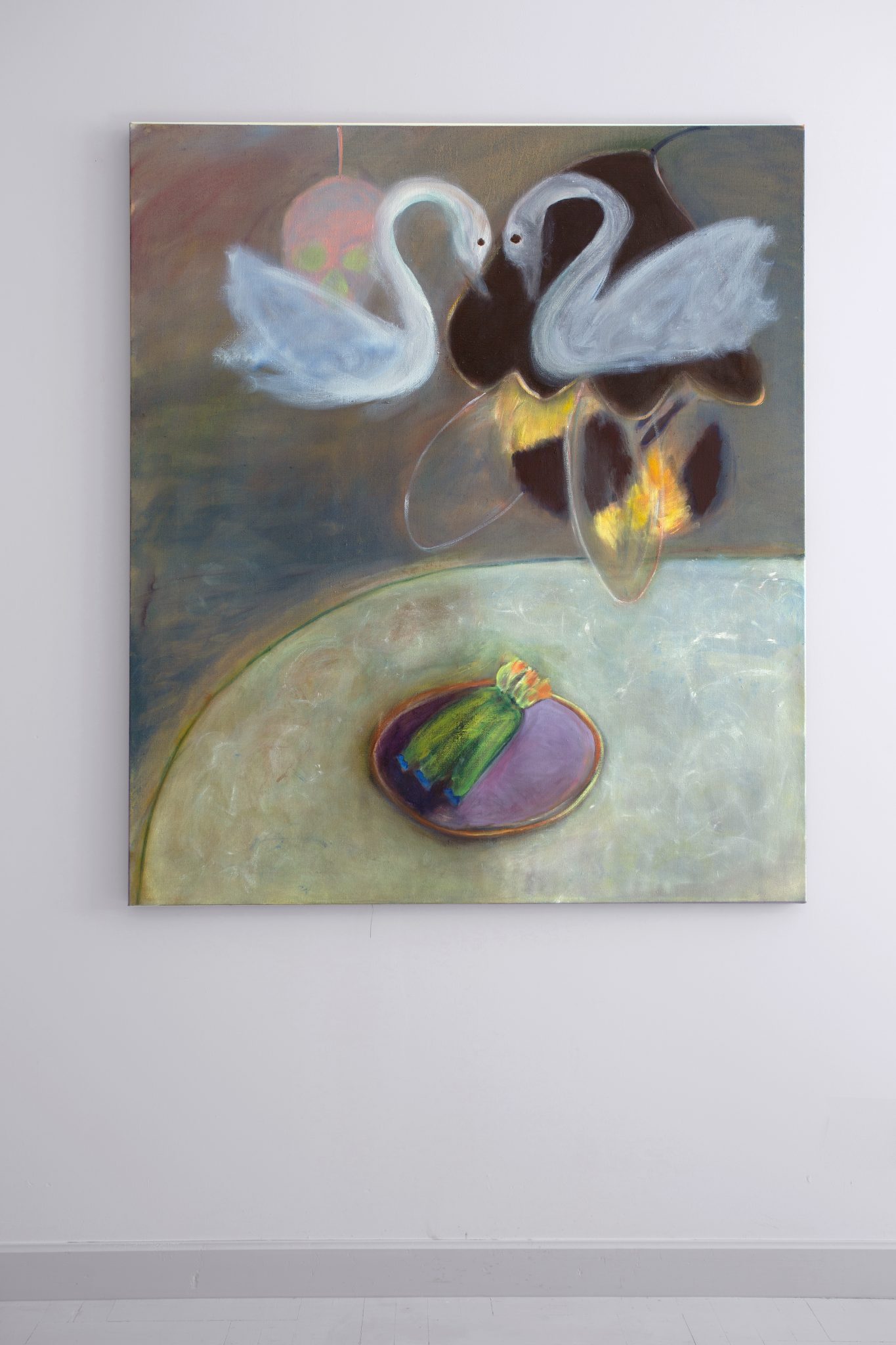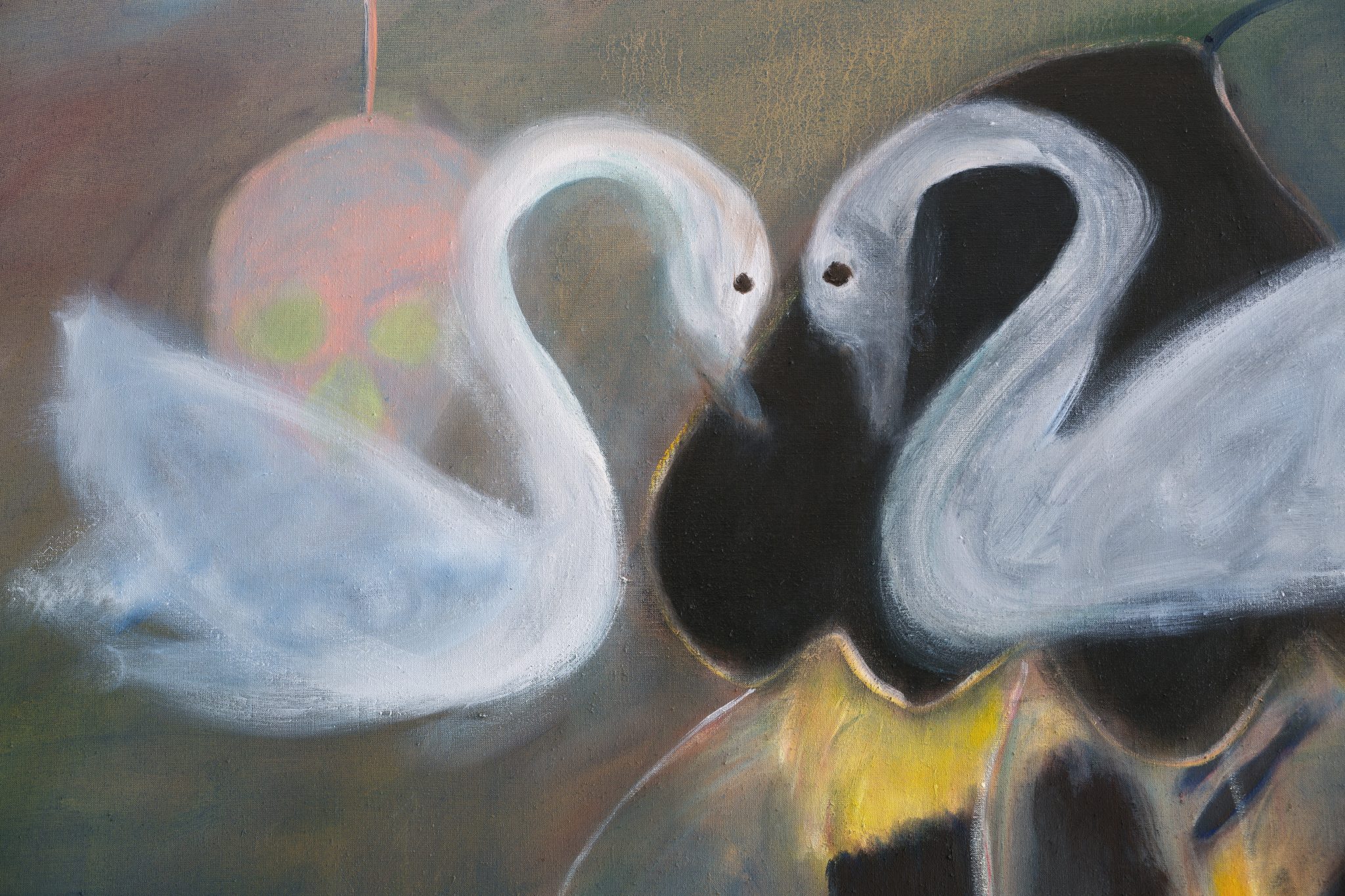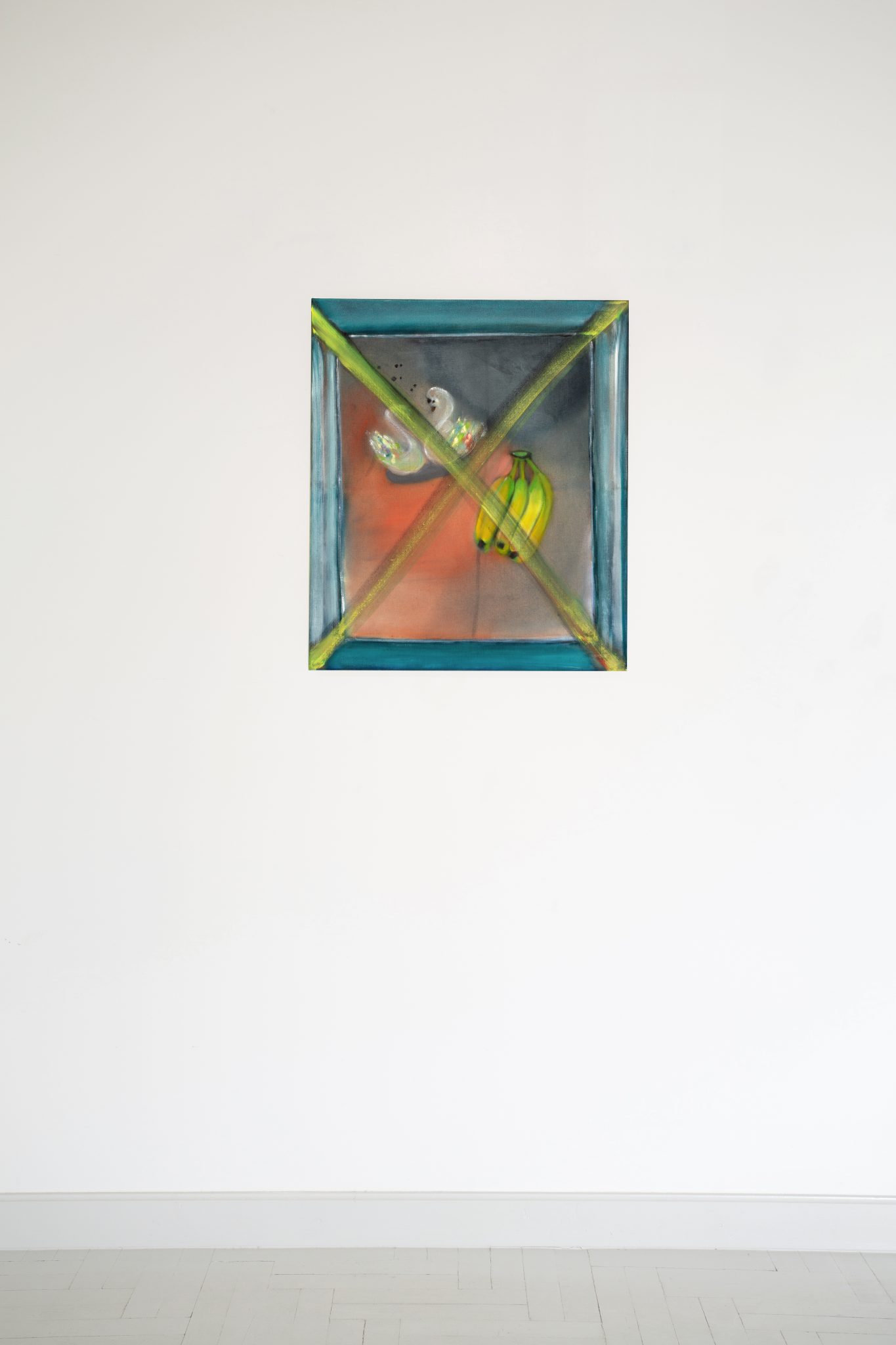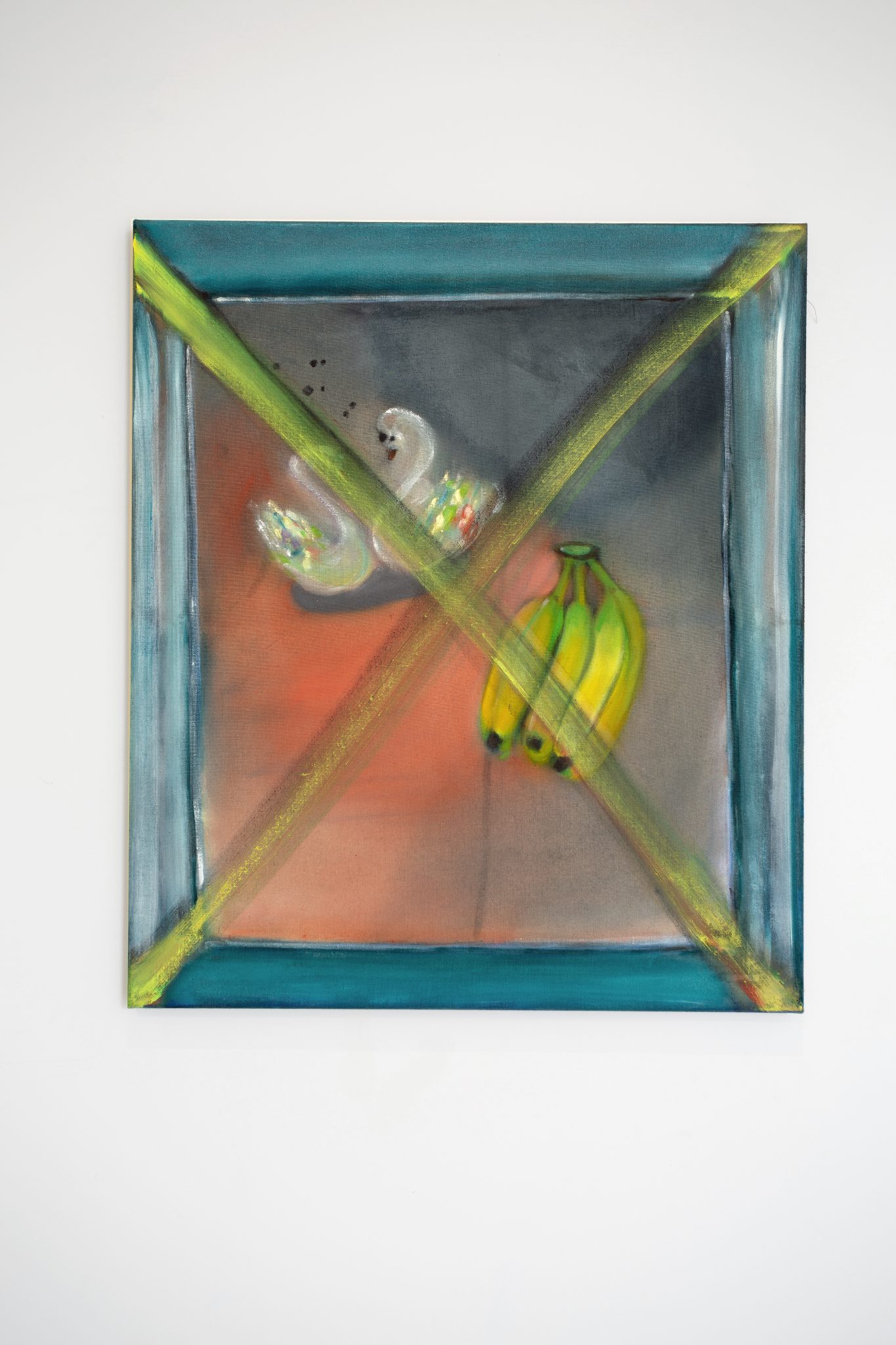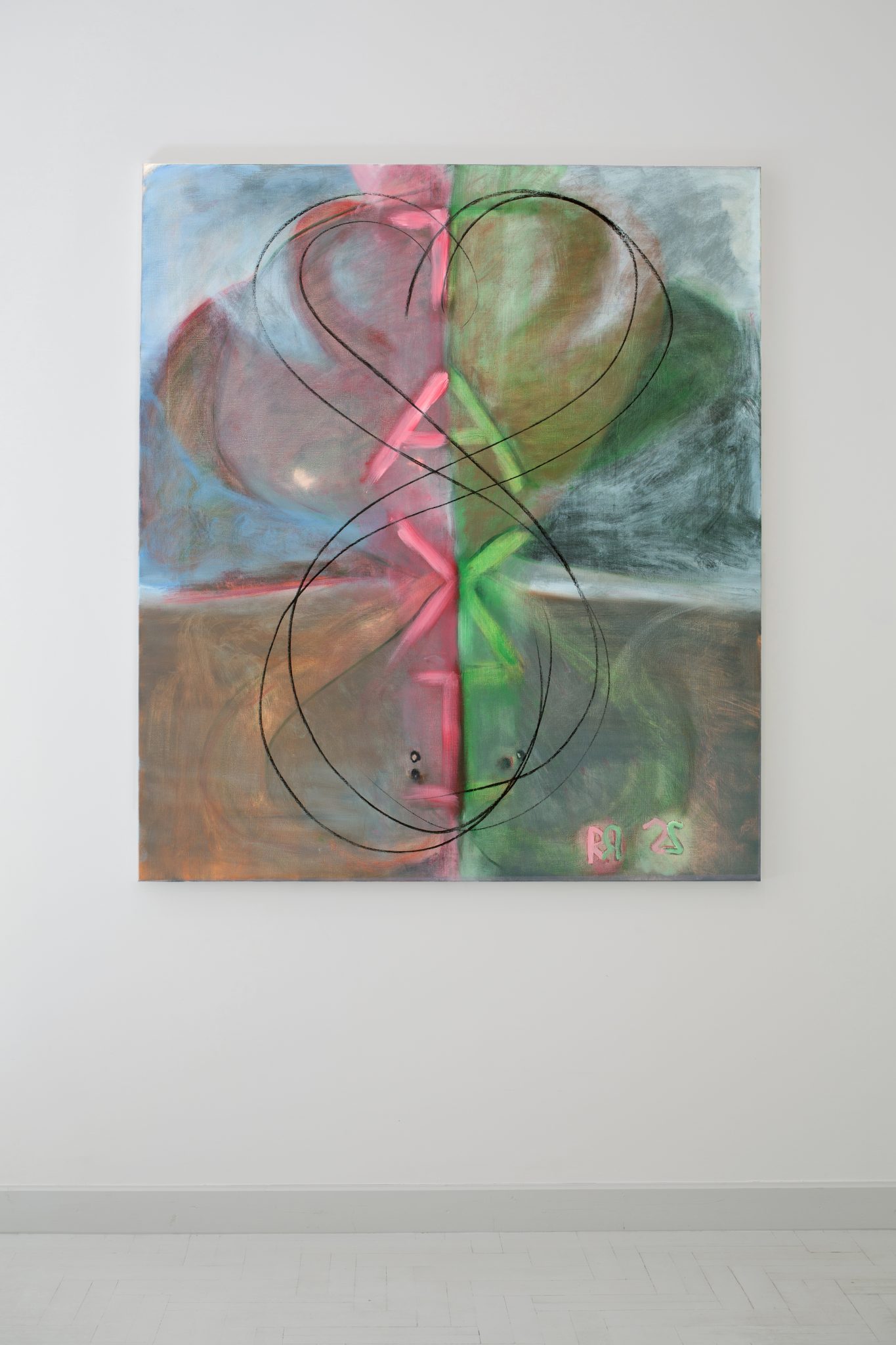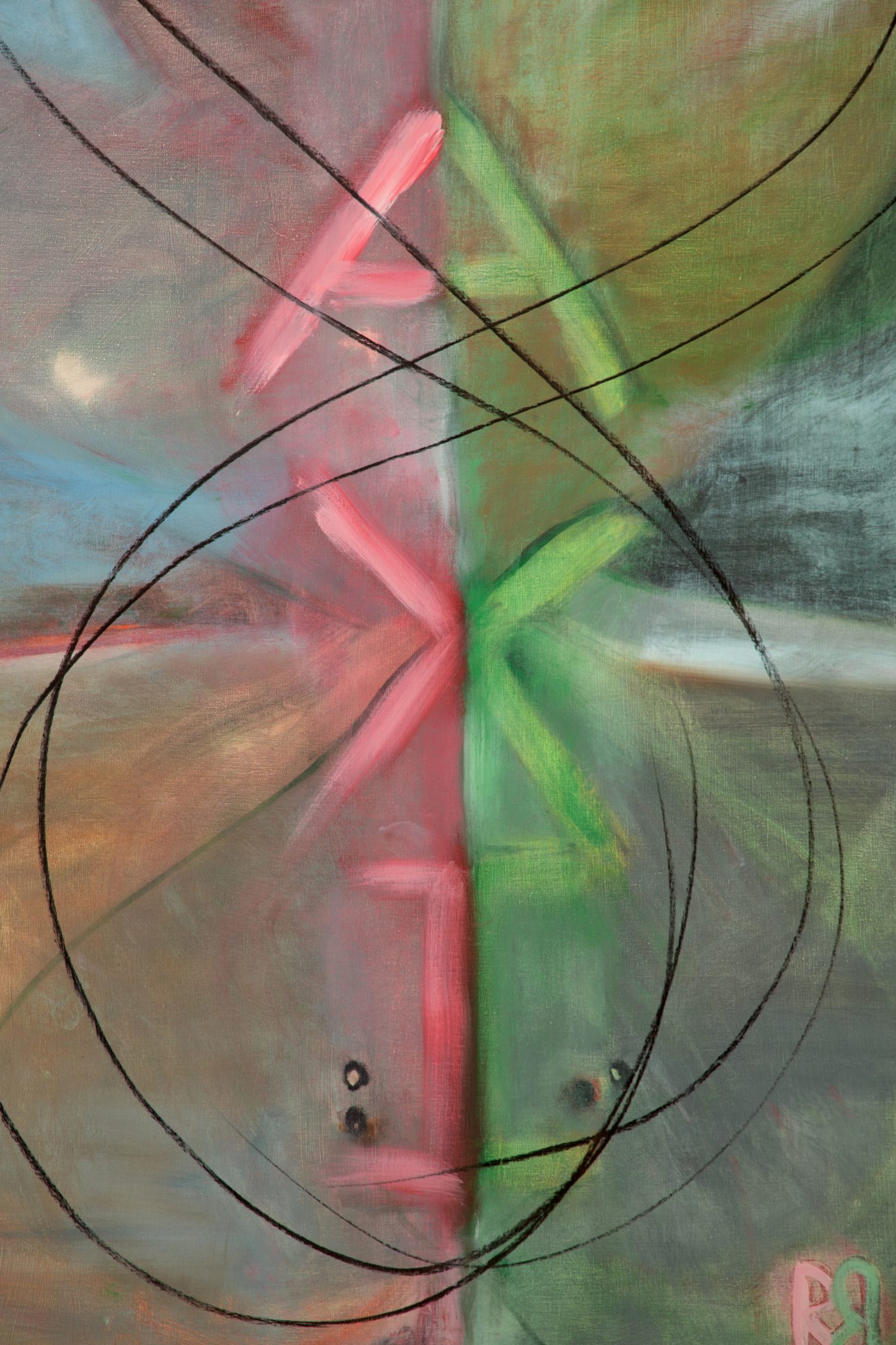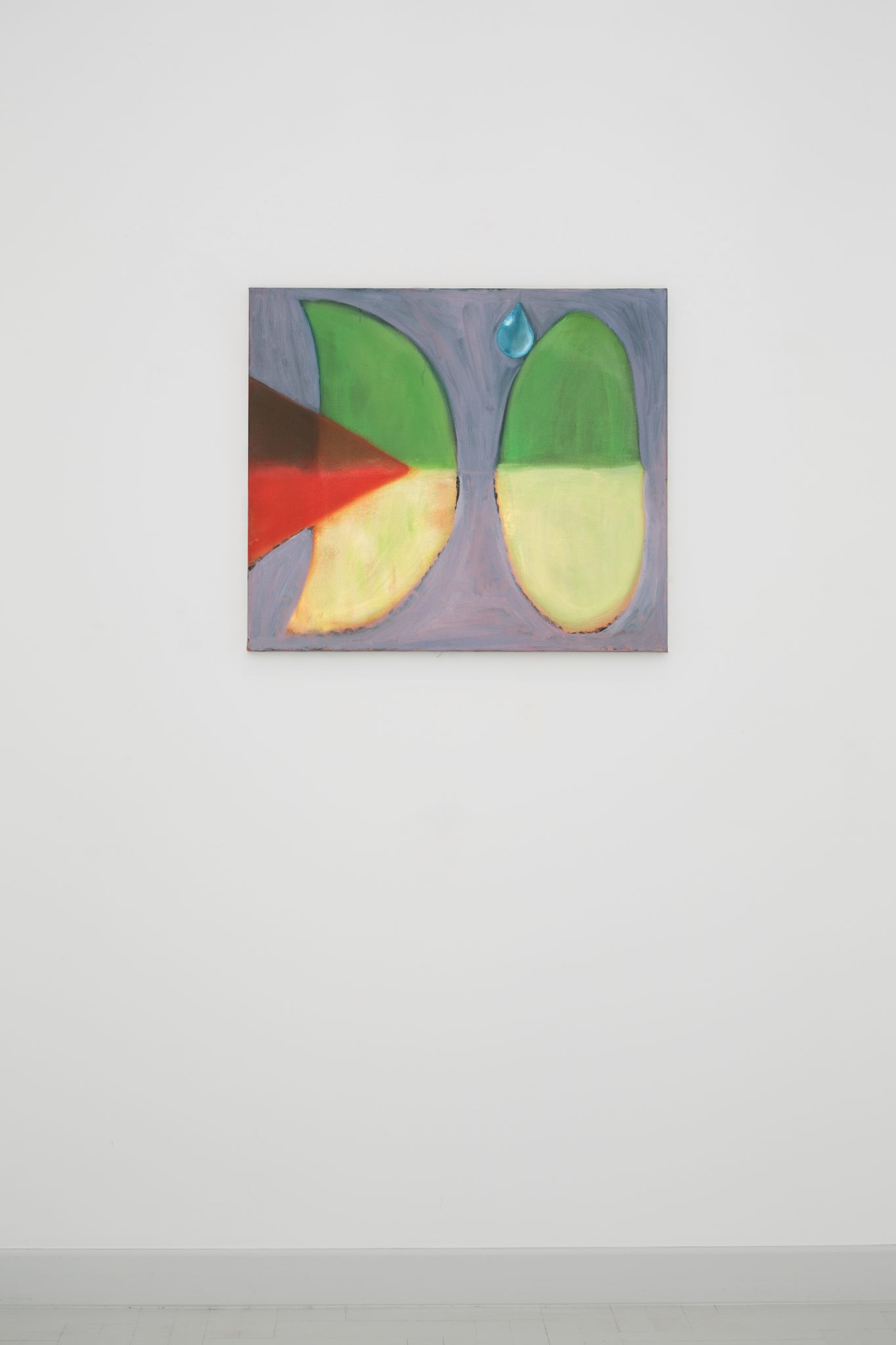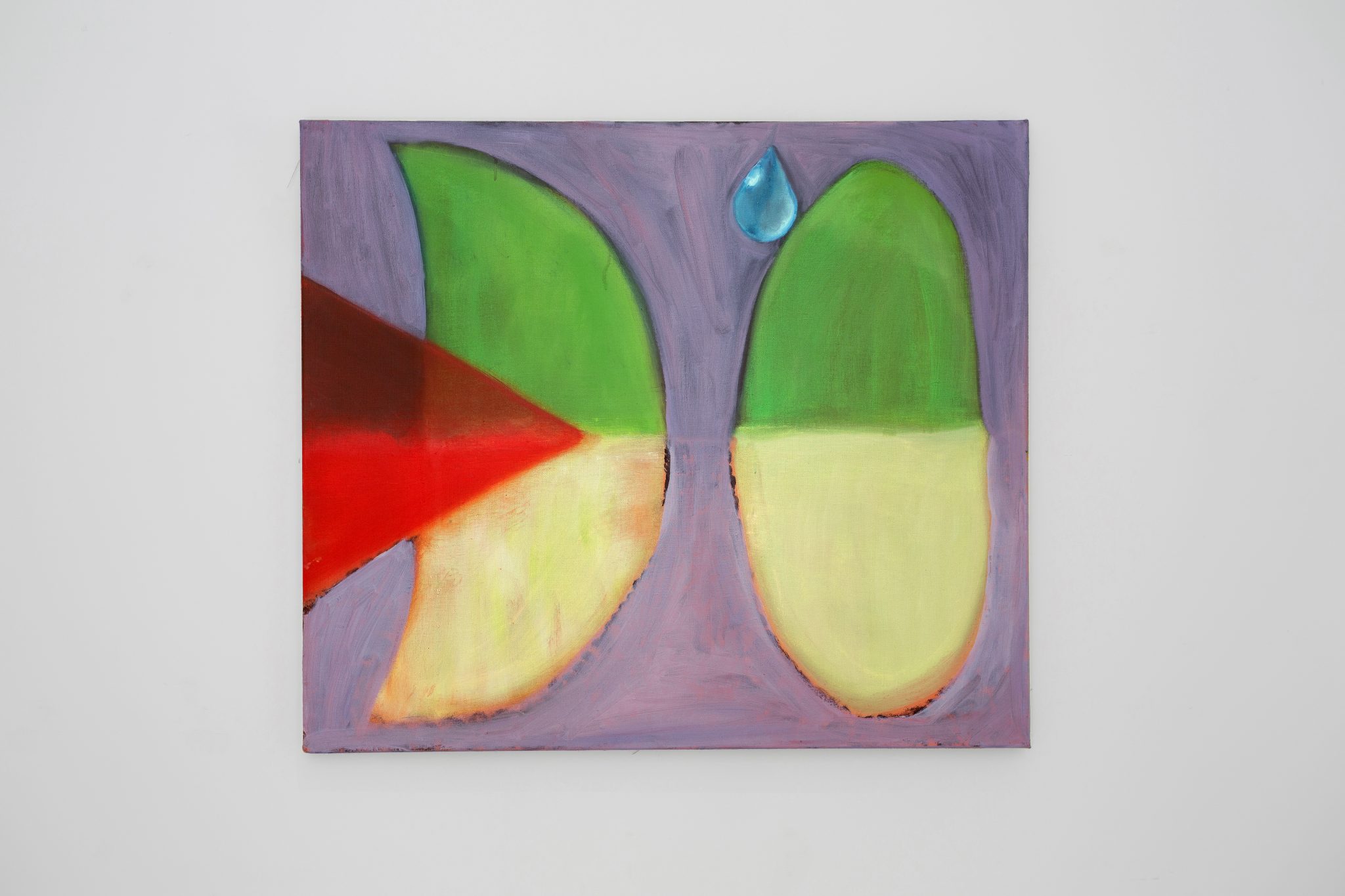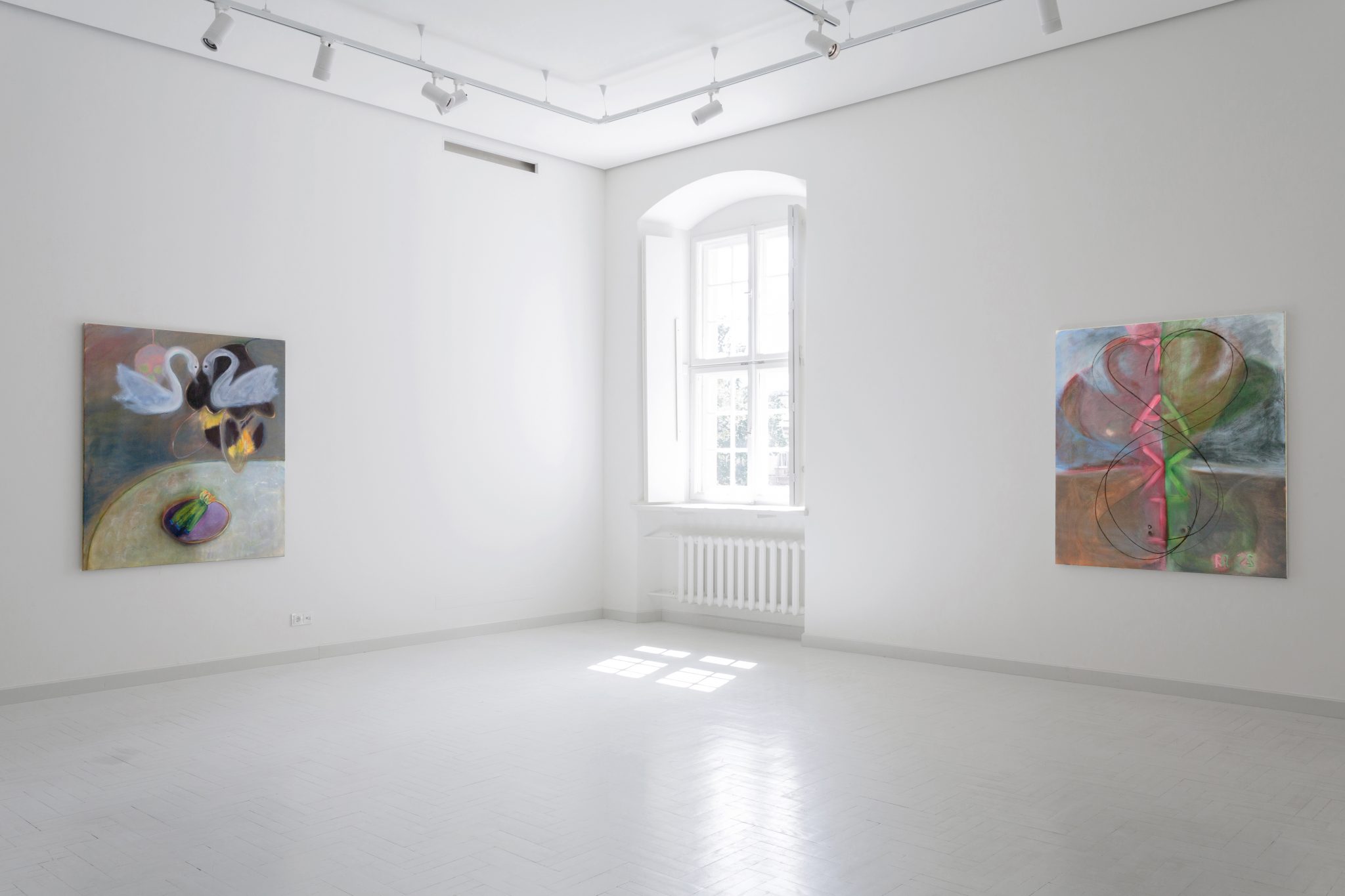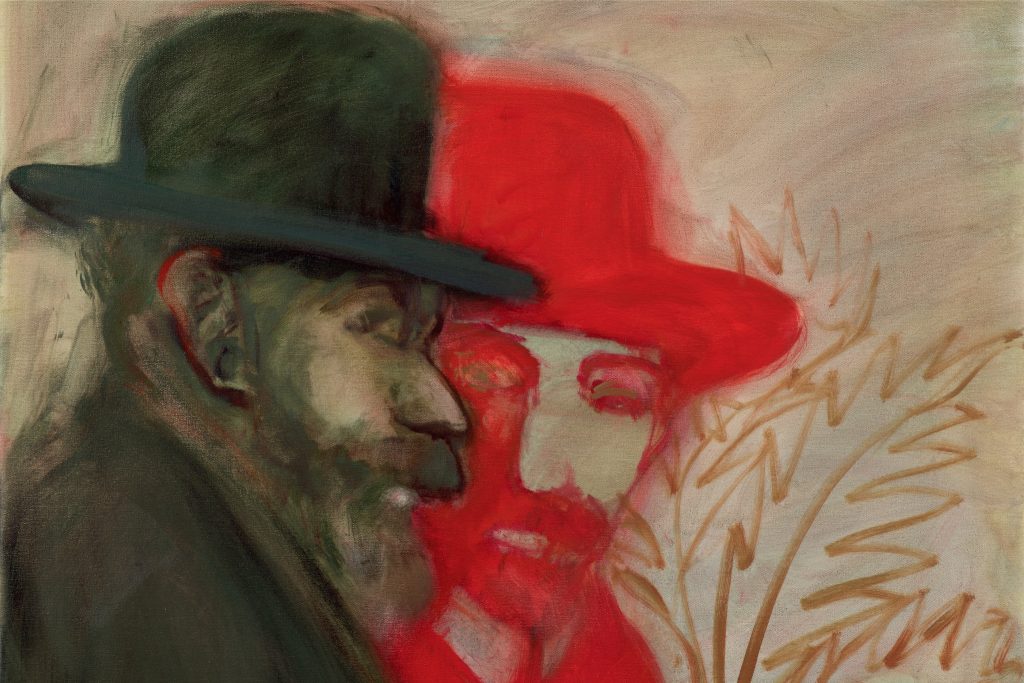
Exhibition at the Radvila Palace Art Museum (Vilnius St. 24, Vilnius)
An exhibition by the British artist Rosalind Nashashibi, “Monogram” featuring the artist’s recent paintings and the new film Denim Sky. “Monogram” is organised by the Contemporary Art Centre (CAC) in ViInius in cooperation with the Radvila Palace Museum of Art, with CAC having also been involved in the production of the film.
Denim Sky is a feature-length film that was shot in three parts over a period of four years between 2018 and 2022. It was filmed on the Curonian Spit by the Baltic Sea and in Edinburgh, London and Scotland’s Orkney Islands. The artist herself appears in the trilogy together with her children and friends, among them – Lithuanian artists Liudvikas Buklys, Gintaras Didžiapetris, Elena Narbutaitė and Algirdas Šeškus, as well as Narbutaitė’s mother Daina Narbutienė, the British artist Matthew Shannon and the writer Rose Bretécher. The growing friendships and her reconsideration of the concept of family prompted Nashashibi to delve deeper into one of the most important topics of her recent work – love and the search for sustainable and supportive relationships, especially those that move beyond the notion of a nuclear family.
In the first part of Denim Sky the protagonists discuss the American writer Ursula K. Le Guin’s 1990 science fiction novella The Shobies’ Story; in which community and companionship are also prominent themes – it speaks about people’s need to form groups, the (im)possibility of communication, and the gap between working life and affective relations. Another theme that connects the film and the book is that of non-linear time as a new human reality: in the contemporary world, which concerns Nashashibi, non-linear time is structured by fragmented forms of belonging and various kinds of distancing between people, both voluntary and forced.
“There’s a new kind of space travel,” says the artist in the first part of the film, introducing the plot of Le Guin’s short story, “which uses non-linear time”. When one of her friends asks her why it was invented, she replies, “so that they could travel in space without losing all their loved ones”. However, as she adds, it may be that even after returning to linear time, communication will still be disrupted. In Le Guin’s short story the hope for communication in such a case emerges when someone starts telling a story. Time in Nashashibi’s trilogy also flows with narrative, moving freely in several directions at once; it is a fluid, kaleidoscopic time of communication and companionship composed not of one but of multiple threads, full of poetry and open to subjective impulses.
Writing about the first part of the film, which combines fiction and diary, the art critic Quinn Latimer claims that it evokes the work of Jonas Mekas and the late period of work by Éric Rohmer. She notes that these filmmakers were similarly attentive to affective relations and kinship, places and seasons, their changes and the customs that accompany and reinforce them. Meanwhile, she likens Nashashibi’s paintings to those of Arthur Dove and Emil Nolde, the modernists whose work, according to the critic, have similarly “strange electricity and melancholy”. She also notes that Nashashibi’s work conveys a spiritual sense of colour, enhanced by her use of 16mm film: Latimer quotes Nolde saying that “every color holds within it a soul”.
Painting plays an important role in both the film and the exhibition as a whole. “Most of the paintings I’ve been making have incorporated my curiosity about signs – whether the cross or the frame, or more baroque – the two swans mirroring one another, or the word TAXI that’s symmetrical if written vertically,” says Nashashibi. “I got interested in the power of the monogram. It is a distilled unit of identity or idea that holds its own mythos or glamour. I was thinking too about how magic deals with signs, runes, symbols, to create influence.”
ROSALIND NASHASHIBI, born in London in 1973 to a Northern Irish-Palestinian family, is currently also based in London. In 2017, she was nominated for the Turner Prize and participated in the prestigious documenta 14 exhibitions in Kassel and Athens, where she presented her films and paintings. In 2019, she was the first artist invited to participate in the London National Gallery’s newly re-opened residency programme.
In Lithuania, Nashashibi’s work was first presented at the Contour Video Biennial at the CAC in 2007, and in 2014 she gave an artist’s talk as part of the opening programme of the 12th Baltic Triennial. Her more recent films have not yet been shown in Lithuania. This exhibition is curated Virginija Januškevičiūtė, curator at CAC Vilnius. The project is supported by the Lithuanian Council for Culture.
During the exhibition, special guided tours will be organised in Lithuanian, English and Russian. The show is also included in the children’s educational activities and the CAC summer camp programme.
The first two parts of Denim Sky, created in 2018 and 2019, have already been presented in exhibitions internationally. This will be the inaugural presentation of Nashashibi’s completed film and her first solo exhibition in Lithuania.
Image: Rosalind Nashashibi, My Demons (after Sickert), 2022.
